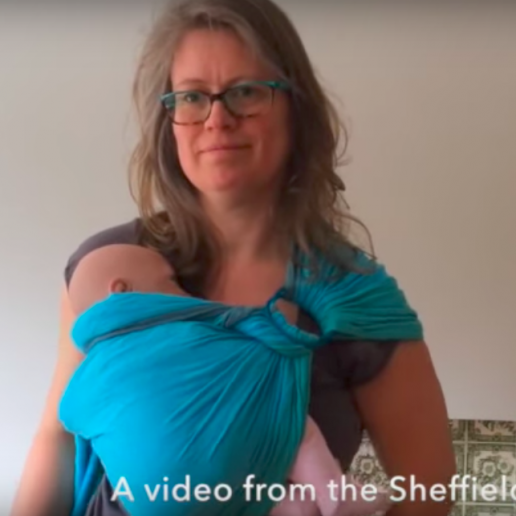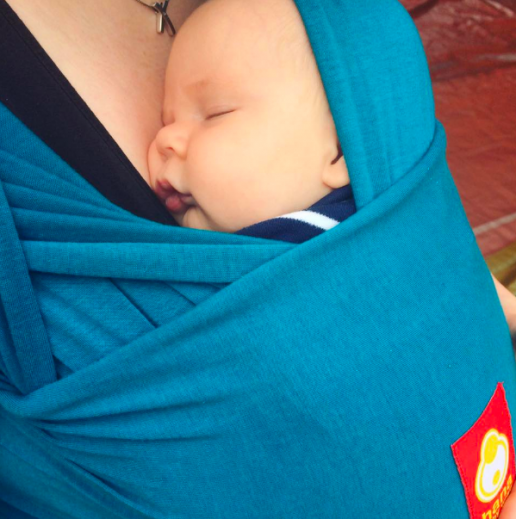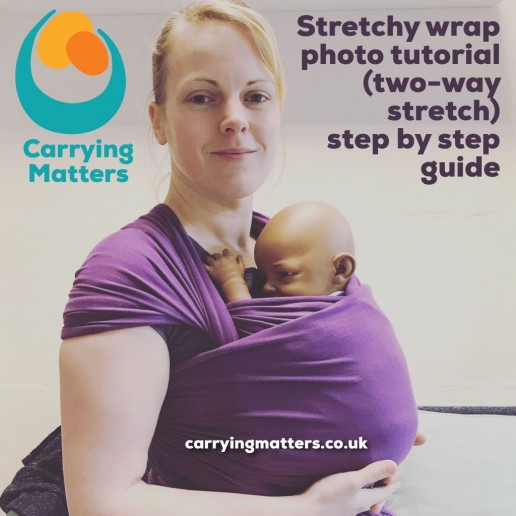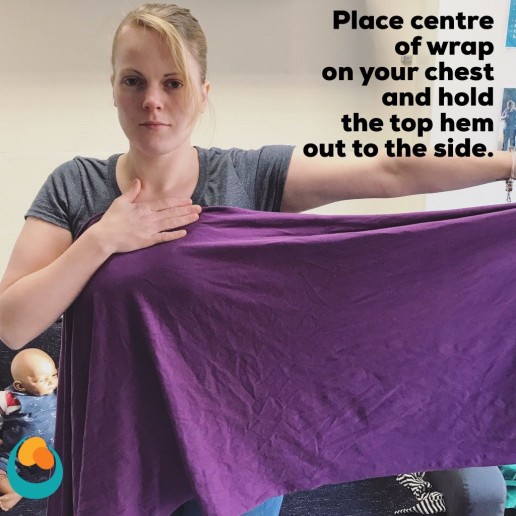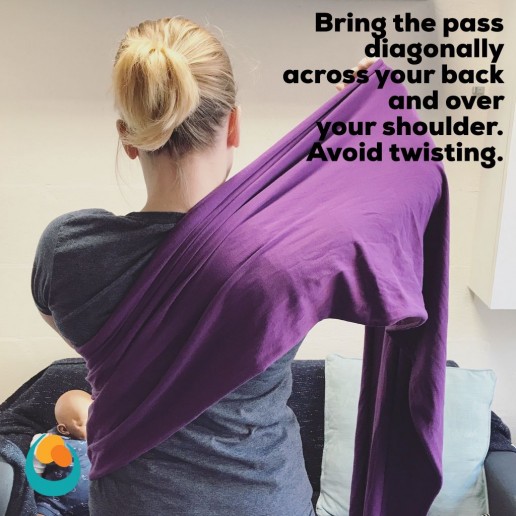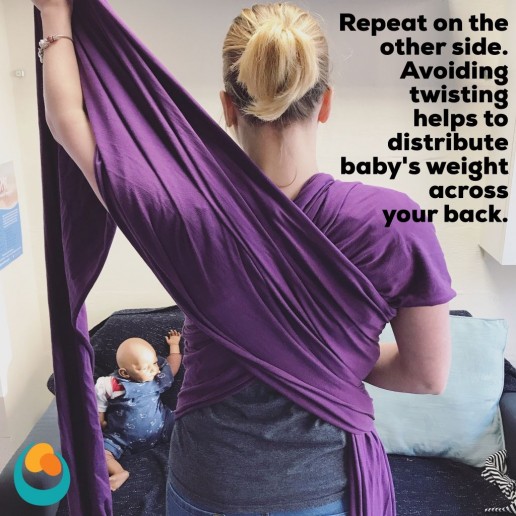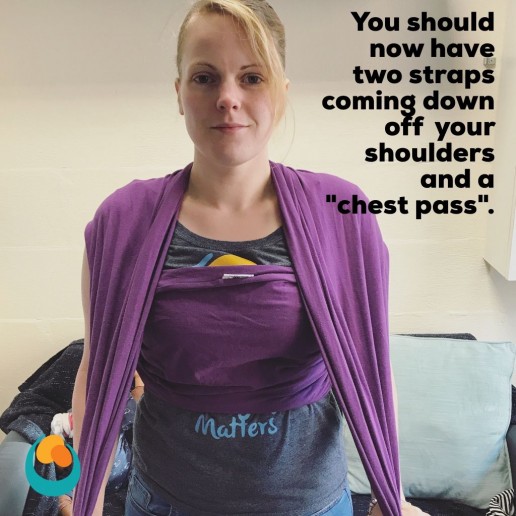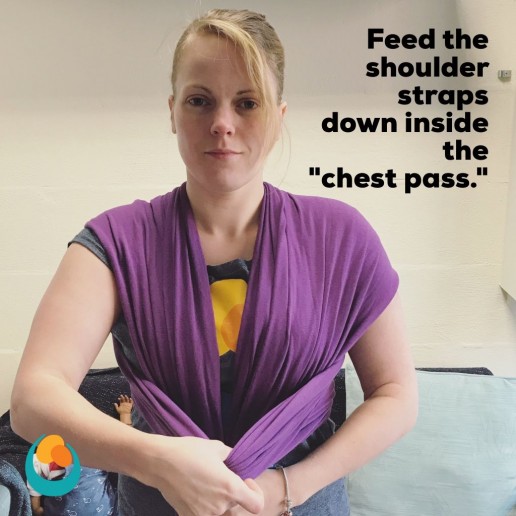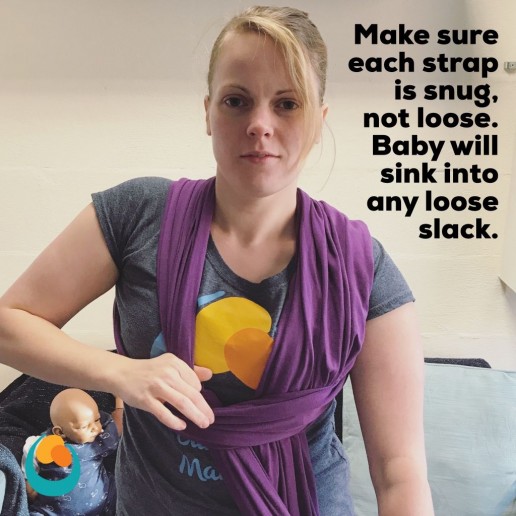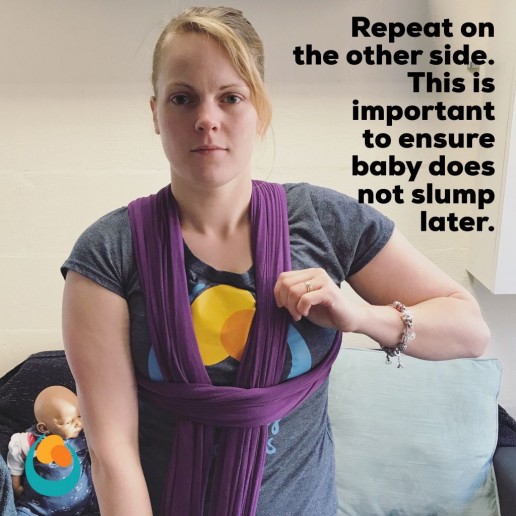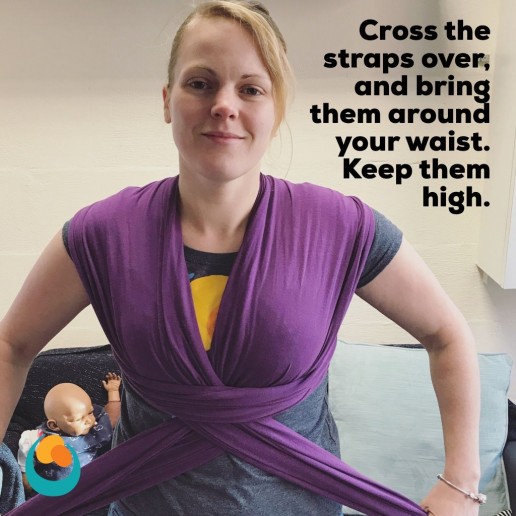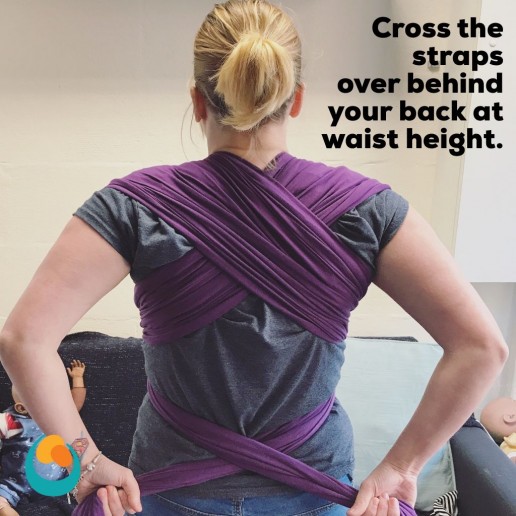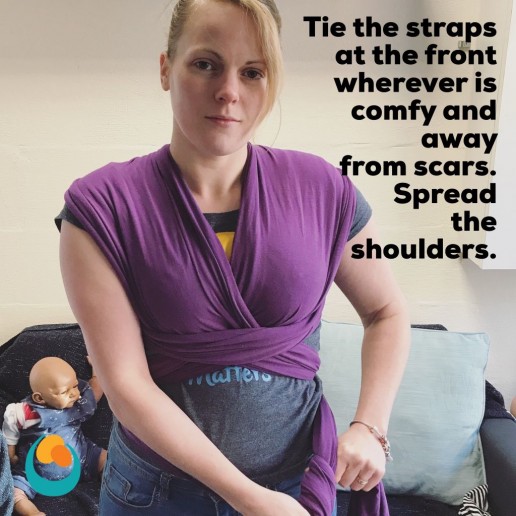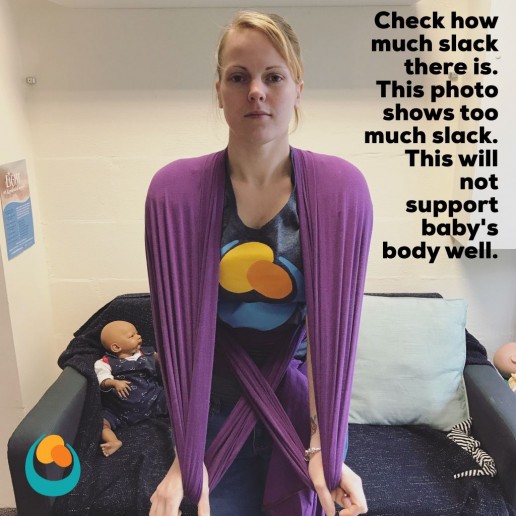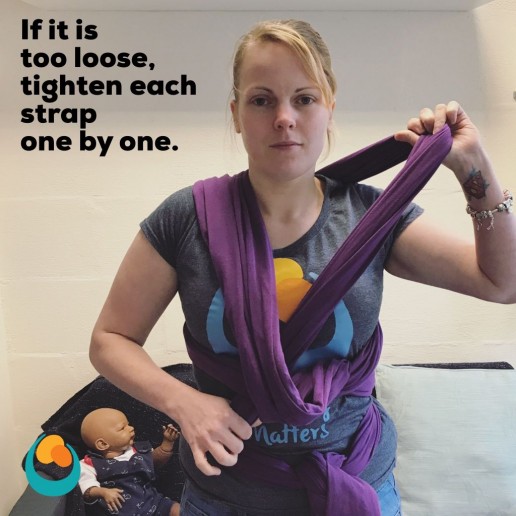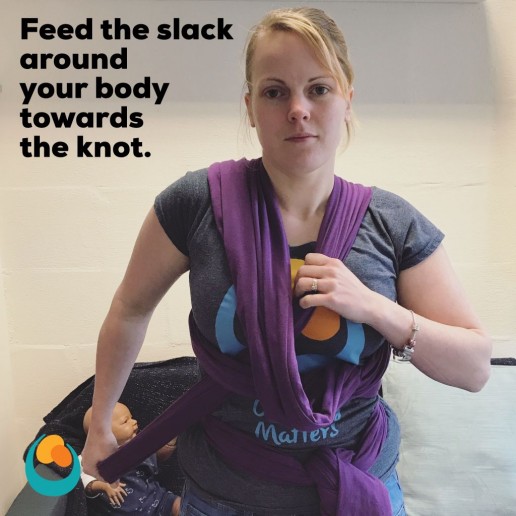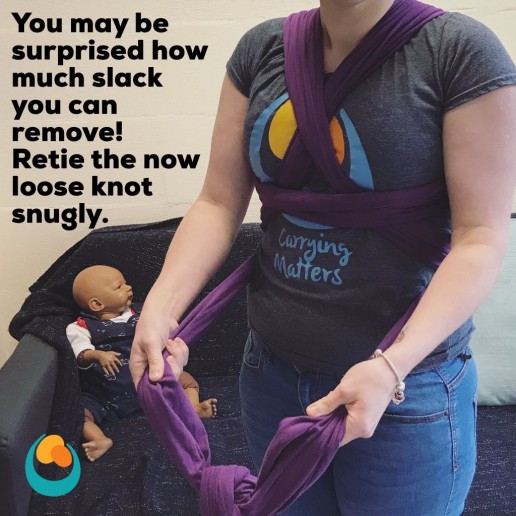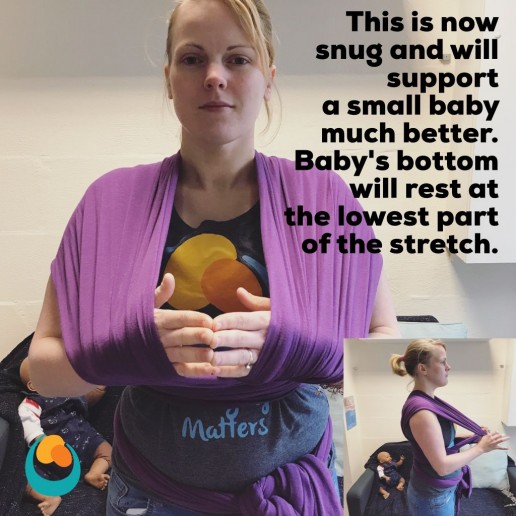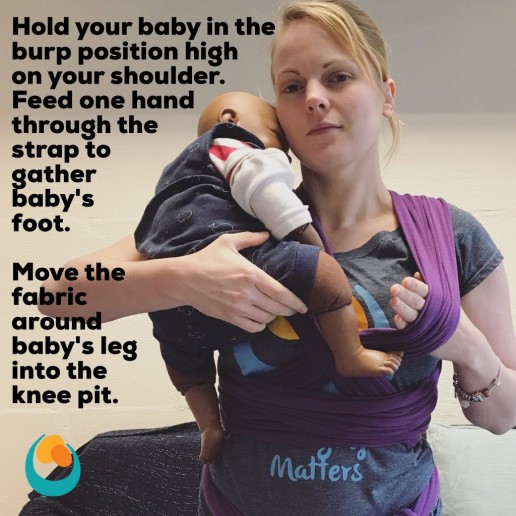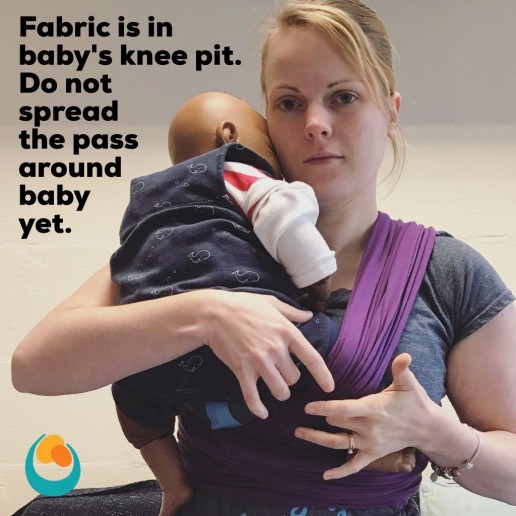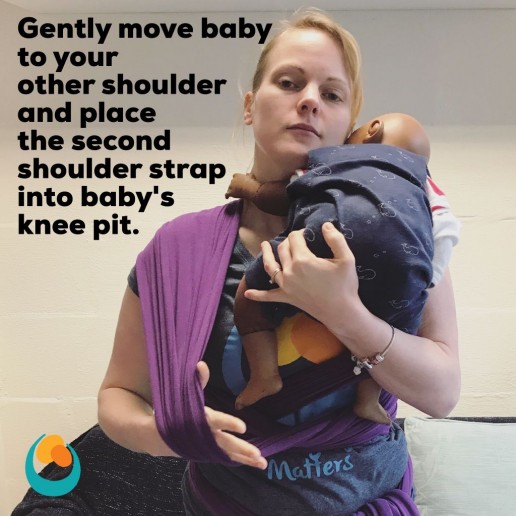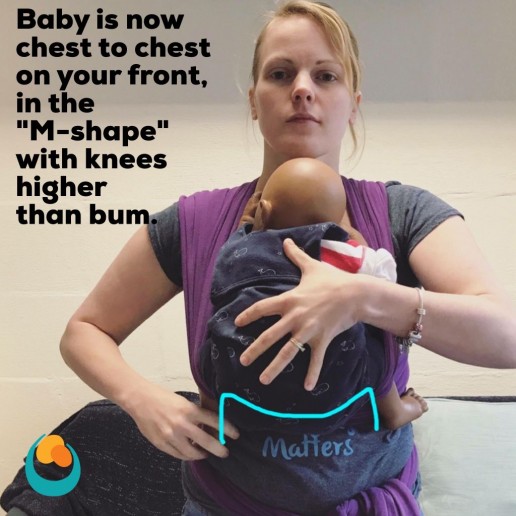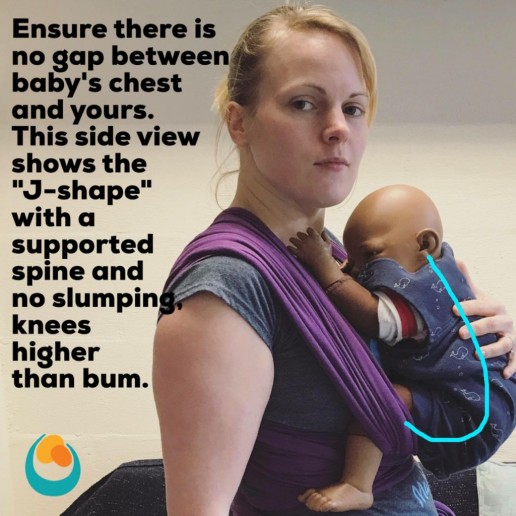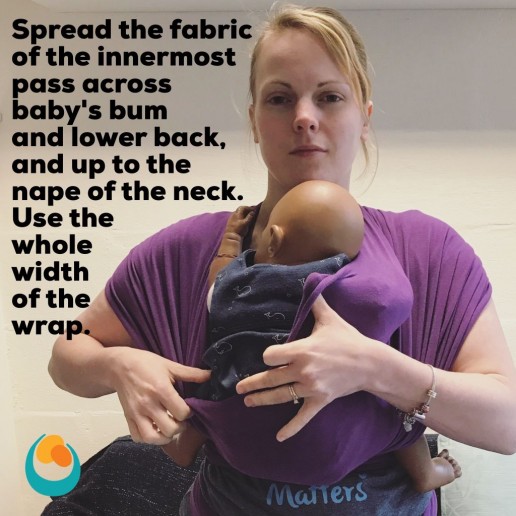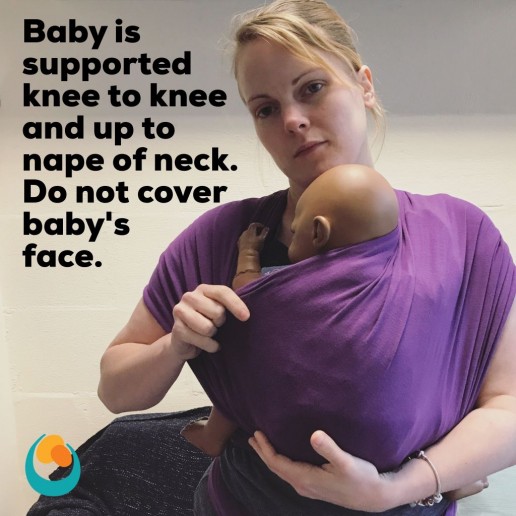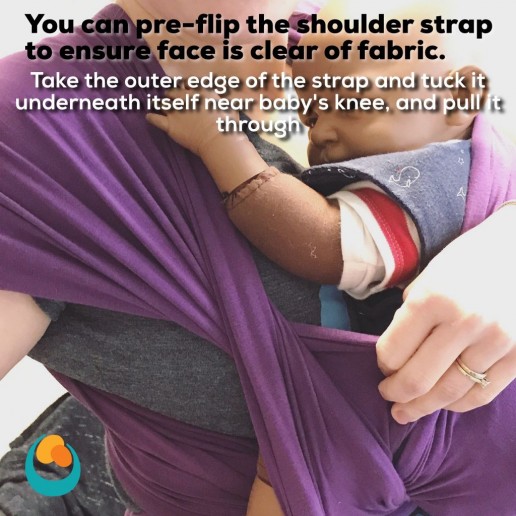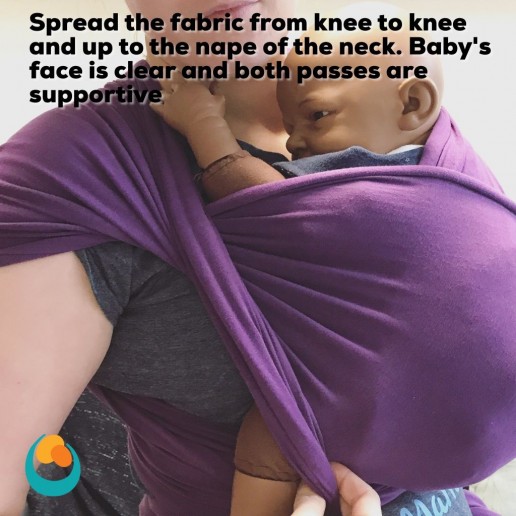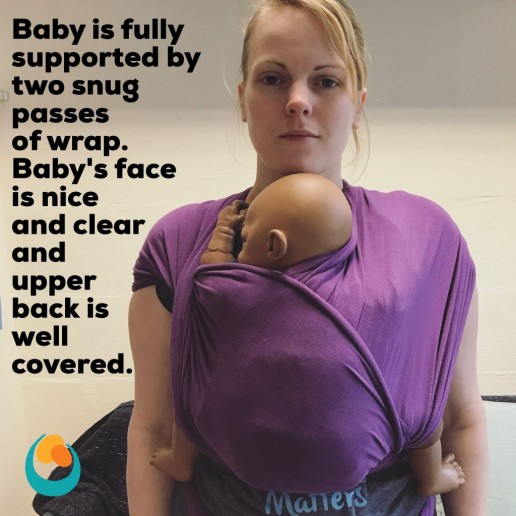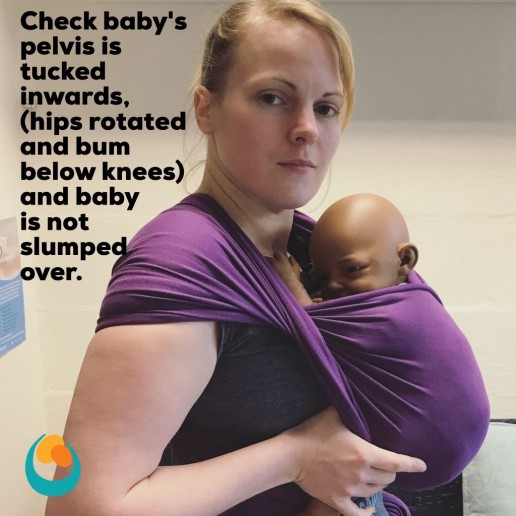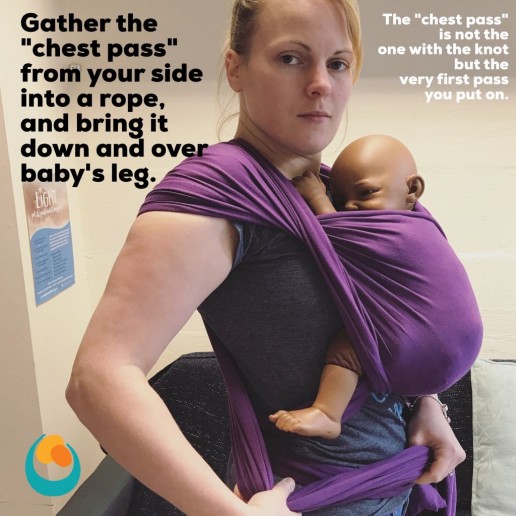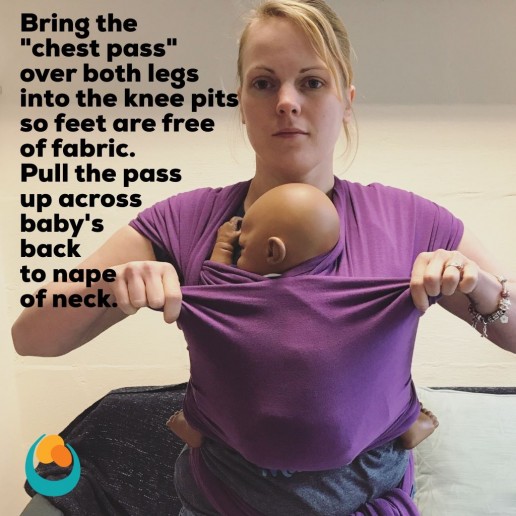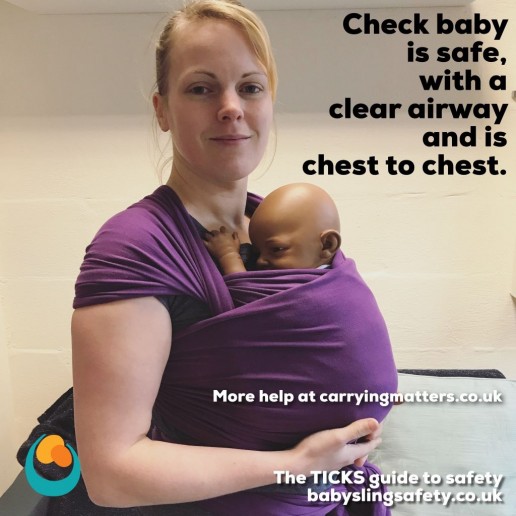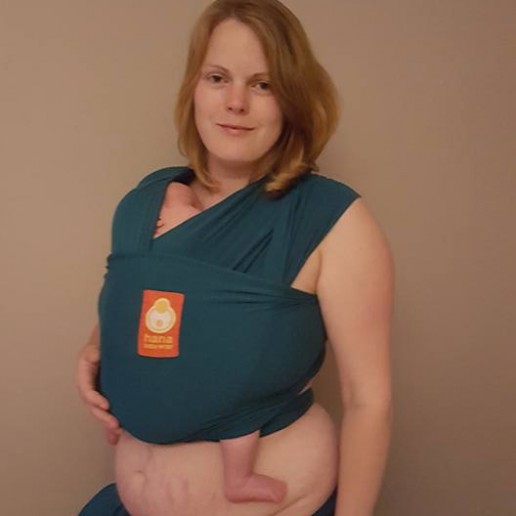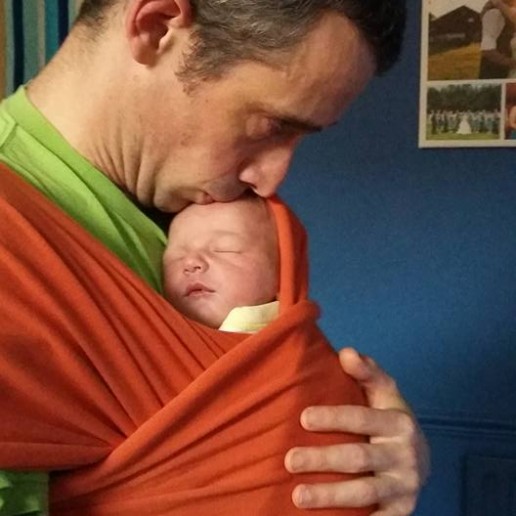Top FAQS
These are the most common questions about babywearing I am asked, in a single helpful list!
Just click on the links to read the relevant blog posts, some are kindly shared from others
Firstly; some of my most popular articles:
Do the babywearing “rules” really matter?
Babywearing and infant mental health
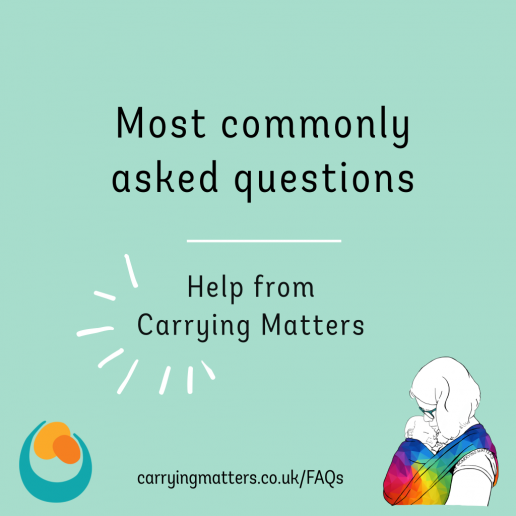
Secondly, I get this query daily. “Can I use your infographics to support families?” ABSOLUTELY! Everything on this website was created to help families with children to feel close and connected. Please credit me appropriately and link back to my website/social media (facebook, instagram)
Here is the link to the infographics (eg the Fourth Trimester/Build a Happy Brain/Why Carrying Matters/Skin to Skin posters, safe carrying images and much more)
Here is a search box to help you find what you’re looking for.
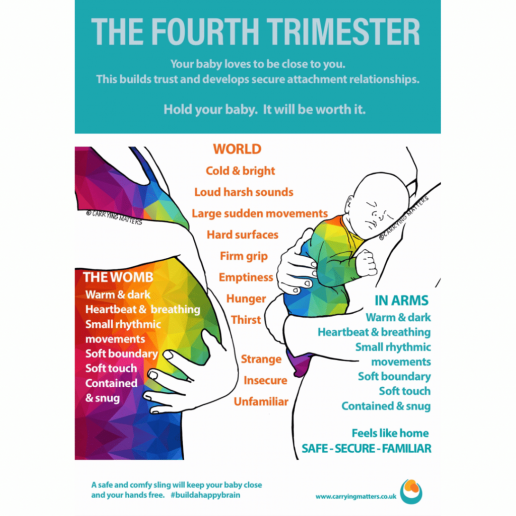
Getting started, and learning the basics
What kinds of sling are there and how do I use them? (links to the major types with useful guides, videos and troubleshooting)
How do I keep my baby safe in the sling?
Babywearing with a Newborn
What are the benefits of babywearing for my baby?
Are there any benefits for me too?
What are the best newborn sling options? (Coming soon)
How soon after birth can I carry my baby and what if I have had a Caesarean Section?
My baby’s head is so wobbly in the sling!
How high should my carrier be?
Can I carry my premature baby?
How do I protect my postnatal pelvic floor and babywear?
What about if I have a prolapse? (Thanks to Forest of Dean Slings)
Help! My child cries in the sling!
Does babywearing help my mental health?
Are slings useful if I have a perinatal mental health challenge?
Carrying in different circumstances
Can I sleep while my baby sleeps in their carrier?
How do I carry more than one child at a time?
How can I carry safely in hot weather?
How do I keep my baby warm while carrying in the cold? (ie can I put them in a snowsuit?)
How do I keep myself and baby dry when babywearing in the rain? (Coming soon)
Carrying adopted or foster children
What if my child has a disability? See this link for a stories from families living with a range of specific conditions.
Common safety queries
Will my sling hurt my baby’s hips?
What if I fall while babywearing? (Coming soon)
Useful Videos
I have made several educational useful videos and photo tutorials to help people, which can be browsed on my own YouTube channel (basic babywearing how-tos and vlogs) as well as a wide range on my local Sheffield YouTube channel (I run a sling library there).
I am adding more and more short videos to my Instagram reels and IGTV, link here.
If you are looking for a specific video for a particular type of sling, please see the categories below.
I would highly recommend a look at my safe carrying page for guidance on how to keep your child safe in a sling.
Here are some safety reminders, please ensure you know how to protect your baby’s airway and ensure a good position for them before you use a sling.
Please note that these videos are to be used at your own risk. There is no substitute for hands-on help! Always keep your child safe.
Here are some reminders of the positioning of babies and children in carriers.
Young babies should be held in this supportive tucked position that respects their natural anatomy. The M shape describes the shape of the legs; with knees higher than bottom. This is how babies naturally position themselves when they are relaxed and held in arms, or resting on the floor or in reclined seats. A newborn has a much narrower M shape than an older baby (and each baby will open his/her hips at his/her own pace).
The J shape describes the shape of the head and spine; a gentle curve with the pelvis tucked under. Having a tuck at the base means that the heavy head is less likely to slump over. Chin can be kept up and the chest cavity kept open and uncompressed.
Here is a reminder about the Pelvic Tuck (with videos)
Carries with a Stretchy Wrap
Many parents love to use a stretchy wrap for their newborn; it is very comfortable as it distributes the weight widely around the body . It is also very snuggly for babies and reminiscent of the warmth and gentle pressure all around that they enjoyed in utero.
They are not hard to use; these videos will show you how to put stretchy wraps on safely, how to fix them if baby feels too low, and how to use the stretchy as a breastfeeding aid without needing to remove the sling (please note the safety advice in that video!)
Silent, captioned video with baby, showing you how to put two-way stretchy on and how to put baby in
Voice and video with doll, showing you how to ensure good positioning every time.
LIST OF VIDEOS WITH A STRETCHY (INCLUDING SAFE FEEDING)
-
-
-
-
- Pocket Wrap Cross Carry with 2 way stretchy, showing how to avoid slumping (with real baby, captioned)
- Slower video of how to avoid slumping
- Video of Taking baby out of stretchy wrap
- Pocket Wrap Cross Carry with legs out, talking and captioned (Two way stretchy, eg Hana Baby, Boba, JPMBB etc)
- Photo tutorial of two way stretchy with preflipped shoulders (helps to ensure good airflow)
- Video of preflipped shoulder straps
- Video of flipping the shoulders at the knee pits, in two ways
-
-
-
-
-
-
-
- Using a stretchy as a breastfeeding aid with a young baby (not hands free carrying)
- Fixing a stretchy wrap that has slipped
-
-
-
-
-
-
-
- An audio and captioned video of a two way stretchy wrap by Abby (Noah’s Arc Sling Library) and Harriet (Sheffield Sling Surgery)
- An Audio Description of how to put a two-way stretchy on and how to put baby in, by Harriet (Sheffield Sling Surgery)
-
-
-
How to breastfeed a baby using the stretchy wrap as a supportive aid
Ensuring a good pelvic tuck position with a stretchy wrap
VIDEOS OF ONE-WAY STRETCHY WRAPS and OTHER TWO-WAY CARRIES
Pocket Wrap Cross Carry with a one way stretchy wrap (eg Scottish Baby Box wrap, Happy, Moby, etc)
Front Wrap Cross Carry with a one way stretchy wrap (often much easier to do and feels more secure!)
Slingababy video of Front Double Hammock with a Moby (one way stretch)
Video for front double hammock with a Didymos (not very stretchy!) stretchy wrap, for babies who prefer legs in, or have not yet uncurled
Je Porte Mon Bebe video for front double hammock (any two way stretchy, with a baby whose legs have not yet uncurled)
CARRIES WITH A CLOSE CABOO
Close Caboo Front Carry, talking, captioned
Another of Rosie’s videos of a 4week old baby in a Close Caboo, silent, captioned
Photo tutorial of the Close Caboo
Taking baby out of the Close Caboo without waking (talking, captioned)
Soft Structured Carriers (Buckles/Tie Straps)
The videos in this section look at soft structured carriers (full buckle carriers and meh dais/bei dais (formerly known as mei tais), showing you how to use them for front, hip and back carries, as well as how to make a good seat in a carrier with the pelvic tuck.
FRONT, HIP AND BACK CARRIES WITH A WAISTBANDLESS CARRIER (eg Integra/Connecta/Pouchlings etc)
Front Carries with a waistbandless carrier
-
-
-
-
-
- Front carry with an Integra with a newborn baby who does need the cinching strap (silent, captioned)
-
-
-
-
-
-
-
-
-
- Front carry with an Integra with an older baby who does not need the cinching strap (silent, captioned)
-
-
-
-
-
-
-
-
-
- Photo tutorial with an Integra, nine month baby
- Front Carry with a Connecta with an older baby who does not need cinching, showing how to tighten
- Two Front carries with Connecta with a small baby, using cinch strap, and rolling the waist (please note the rolling is not officially endorsed)
- Fixing “strap creep” where the straps get too close to the neck photo tutorial
- Fixing shoulder straps too close to the neck with a cross strap carrier video, talking
- Fixing a carrier that feels low and loose video, talking
- Breastfeeding in an Integra baby carrier
-
-
-
-
-
-
-
-
-
- FWCC style carry with waistbandless carrier (spreads the top edge of panel more widely and brings knees higher) please note this is not officially endorsed.
-
-
-
-
Hip and Back carries with a waistbandless carrier
-
-
-
-
-
- Hip Carry with a cross strap full buckle carrier) – two methods (please note this is not officially endorsed)
- Back Carry with an Integra/Connecta
-
-
-
-
FRONT CARRIES WITH WAISTBANDED CARRIERS (CROSS AND RUCK STRAPS)
Front Carry with a Waistbanded Cross Strap Carrier (Sleepy Nico, Mamaruga, Beco, etc)
Front Carry with a Rucksack strap carrier (Tula, Boba 4G, Lillebaby, Emeibaby, etc)
Raising baby up in panel if baby is too short for it – photo tutorial
BACK CARRIES WITH BUCKLE CARRIERS
-
-
-
-
-
- Back carry with Hip Scoot (done here with a Connecta/Integra)
- Secure Hip Scoot and Back Carry with a Full Buckle method 1
- Secure Hip Scoot and Back Carry with a Full Buckle method 2
- Back Carry with the secure chestbelt done up (wrapyouinlove video) “walk like an Egyptian”. Ensure chest belt is strong and secure.
- Photo tutorial for “walk like an Egyptian” method with rucksack carrier
- Back carry with cross straps on the front! (starting from the beginning with child not in the sling). A very secure way to do a back carry for beginners. This needs the carrier to have detachable straps for crossing (ie not only rucksack straps)
- Switching a front carry with a cross straps into a back carry with cross straps (child is already in position on the front)
-
-
-
-
Watch Rosie do a quick back carry with a preschooler and a waistband carrier (works well for willing older children!)
CARRIES WITH A MEH DAI/HALF BUCKLE
Front Carries with a Meh Dai/Half Buckle
-
-
-
-
-
- Photo Tutorial for Meh Dai front carry
- Front Carry with a Meh Dai with baby
- Front Carry with a Meh Dai with toddler
- Front Carry with a Newborn in an adjustable waist Meh Dai (eg Hop Tye) video by Rachel from the North East Sling Library
-
-
-
-
Hip/Back Carries with a Meh Dai/Half Buckle
Ring Sling Carries
Ring slings are a popular choice with parents wanting something simple yet versatile, and they can be used from newborn to toddlerhood and beyond. There is often a learning curve to making them as comfortable and safe as possible; the videos in this section will show you how to use them well. Practice makes perfect and sometimes some one-to-one help can make all the difference. Here you can enjoy a video as if you were having a consultation how to use a ring sling with Rosie and Lucy.
CARRIES WITH A RING SLING
-
-
-
-
-
- Ring Sling Photo Tutorial with baby
- Ring Sling prep and legs out Tummy to Tummy Carry with a newborn (creating rolled neck cushion) – See the embedded video above
- Slingababy‘s excellent ring sling preparation and hip carry (with toddler)
- Ring Sling front carry with rings on the back and a twist in the fabric
- Off centred front carry, paying attention to airway (please note this is NOT a cradle carry)
-
- How to thread a no sew ring sling (with two rings) (external video)
-
-
-
-
Carries with a Woven Wrap
Woven wraps are very versatile and can be used for children of every age, from newborn to preschooler, on the front, hip and back. They come in several different lengths –read more here.
In this selection Rosie demonstrates just a few of the possibilities and links to other excellent videos to help you make the most of your woven wrap.
FRONT CARRIES WITH A WOVEN WRAP
-
-
-
-
-
- Knotless Front Cross Carry (Slingababy)
- Front Cross Carry (unflipped shoulders – Wrapping Rachel)
- Front Cross Carry with flipped shoulders and deep seat -Wrap you in Love)
- Photo tute of the Front Cross Carry
- Front torso rebozo (size 3)
- Kangaroo Hip Carry (size 3)
-
-
-
-
HIP CARRIES WITH A WOVEN WRAP
BACK CARRIES WITH A WOVEN WRAP
Sheffield Sling Surgery videos
-
-
-
-
-
-
-
-
- Knotless Ruck with sz 2 woven wrap and a large toddler
- Short Back Cross Carry with a woven wrap size 2
- Reinforced Ruck – by Lindsey, with a woven wrap sz 3
- Knotless Double Hammock with sz 4 woven wrap
- Double Hammock with a sz 5 woven wrap (L Pull) (yes she does fall asleep!)
- Ellevill Jordan’s Back Carry, good for leg straightener children, sz 5 woven wrap (happy happy happy)
- Ruck tied Tibetan with sz 6 woven wrap and large toddler
- “Pouchless Ruck” with two cross passes with a size 4 woven wrap – without making a deep seat
Other videos
-
- Back Wrap Cross Carry by Babywearing Faith
- Back Wrap Cross Carry with Tibetan finish, slow and precise, by Slingababy
- Secure High Back Carry by Wrapping Rachel
- Slingababy double hammock from a hip scoot (very clever way of doing it)
- Saltwater DH with knotless finish
- Charlie’s Cross Carry with Ring Finish – other variants here
- Christina’s Ruckless Back Carry by Wrapping Rachel
- Wiggle Proof Back Carry with Sweetheart Neckline and ring finish
My favourite woven wrap YouTube channel is Hedwych’s Wrap you in Love, a real treasure trove.
The Wearing Wiki of woven wrap carries
-
-
-
-
-
-
-
Your own local sling library/consultant for more support can be found at the Sling Pages
Front carry with a Close Caboo photo tutorial
The Caboo is a great option for those who enjoy the snuggly feel of a stretchy wrap but prefer a little pre-structure. This front carry with a Close Caboo photo tutorial will get you off to a flying start.
Follow the steps to ensure a safe and snug carry; the time spent preparing really pays off when baby is put in, far less fiddling and adjustments!
Read more about carrying newborns in stretchy wraps or Close Carriers here.
Help! My child cries in the sling
"Help! My child cries in the sling... she seems to hate being put into it..."
This is a frequent worry faced by many parents when they try out a baby carrier for the first time - either the very first sling they have ever used, or when trying to find something more suitable or comfortable for their child's needs as well as their own. I've come across many parents who are concerned that their child unfortunately hates the carrier they have spent money on, or convinced that there is no sling out there that will suit their baby as they always cry when they are put in.
Fear not - it is very common for babies and toddlers to fuss and cry and wriggle in slings, especially when it is a new experience, and my advice to parents in these circumstances is "don't worry, this is very common, you are not alone" and "yes, there are solutions". Crying in slings is common.
So why is it my baby cries as soon as I put her in a sling?
I think the key thing in such situations is to try and understand the experience the child is having - to put yourself in their shoes (or booties!)
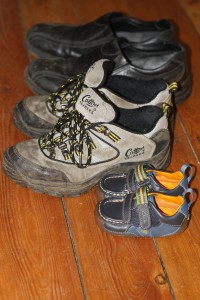
Being able to see things through a baby's eyes can often explain a whole host of issues - babies are small people with feelings just like adults, and they express these sensations in the more limited means they have at their disposal - laughing, wriggling, crying, bouncing, sucking, moaning, yelling, chewing, rooting, leaning, twisting etc. Being able to read and understand your baby's cues is vital to a good relationship and this is one of the benefits of a carrier; parents and carers are usually much more aware and rapidly responsive to a child who is close to their bodies and visible, as opposed to one who is detached and in a pram or a bouncy chair or a play gym etc. So it is good, your baby is protesting, he/she is communicating with you and you are aware of that! Now to meet the need he/she is expressing and thereby solve the problem.. The sling itself is usually not the cause of baby's displeasure.
What does your baby need?
- Is your baby too hot? (it is common to get very warm in a sling quickly. Your own body heat next to a baby's with the extra layers of the sling will bring their temperature right up, and we all know its unpleasant to be sweaty and over-dressed.
- Is your baby thirsty?
- Is your baby hungry? It is always worth making sure your baby is well fed before wyou embark on a new experience - and come armed with bottles, snacks etc to satisfy any hunger. It is usually worth meeting this need rather than ignoring it, as babies won't understand your priorities and will just continue to be upset. If you’re learning how to use the sling with someone, they will be more than happy for you to feed your baby - you are more likely to be able to absorb information when your child is happy. You can talk while feeding and still learn and you will always be able to try the carrier again later! Babies who are breast-fed may need to feed often, and few will refuse food that is offered, even if they've just been fed. Bringing a baby close to a chest full of milk will often create a desire to be fed, or to suck, even if tummies are full.. if you were a baby who could smell milk and were being held in a position where you couldn't reach, it would be maddening, and you might kick, or wriggle, or yell.) If your baby seems to be burrowing down, or chewing their fingers, or shaking his head from side to side, could that be a cue to be fed? Perhaps you can learn to feed in the sling?
- Does your baby have a sore tummy or is he too full of food to tolerate pressure on his tummy, just like an adult after a large meal? A seated sideways carry may be more comfortable.
- Is your baby wet or dirty, and therefore uncomfortable, or are they needing to eliminate? Babies are very aware of their own bodily functions.
- Is your baby tired? Many babies have a fussy period before they go to sleep. You may already be aware of this tendency in your baby when they are falling asleep in bed, in the car, in the pram etc, the sling is no different. A baby may learn that slings often mean sleep and if he doesn't wish to sleep, may protest. A little rocking with baby in sling is usually enough to help them drift off. Sometimes the new experience of trying a sling can be too much stimulation for a weary baby and push him over the edge from tiredness to tantrum, just as it would if you tried to feed him, or change his clothes. A good guide is two new things in a row (so at a sling meet, just try two things!)
- Is your baby in pain? Teething can be uncomfortable; distraction by play is a great tool, and if a baby suddenly has less distraction he may become aware once again of the ache in his jaws. Abdominal distension from constipation or sore genitalia may affect carrying.
- Is your baby responding to how she is being handled? Primitive reflexes like the Moro reflex (that causes the limbs to spread wide and then grasp) or the Tonic Labyrithine Reflex (over-extension, ie back arching due to an unsupported backward-lolling neck) can make babies feel insecure and unwilling to settle into a sling. Lifting and holding your baby securely from both the upper body and below the bottom can help to calm them before moving into a carrier.
- Is your baby responding to how you feel? If you are anxious or irritable while handling your baby, he will pick up on your muscle tone, shaky breathing and jerky movements and become distressed as something feels wrong. Sometimes it is better to just try again later when you are in a better frame of mind.
- Could you and your baby have some difficulties connecting, due to such circumstances as a complex pregnancy or a traumatic birth history (regardless of the objective outcome)? A lot of your unspoken feelings about your unborn baby and how your child arrived in the world can significantly affect bonding later, as can prolonged separation in the first few days or weeks of life. The rate of post-traumatic stress disorder after birth is surprisingly high (up to 9%) and there are several studies that demonstrate that such stress can impair bonding. This could be because of prematurity or illness, it could be due to feelings of guilt that are hard to shake off, even if they aren’t justified. Family dynamics and expectations, especially if they are in conflict with deep biological feelings can also have effects on how babies are handled and responded to. Babies are very sensitive to the feelings of their carers and will react accordingly - your baby’s behaviour and distress could be a signpost to some of your own internal discord and pain. This is where midwives, postnatal doulas and the NHS Afterthoughts services etc can be very helpful indeed in guiding families to find resolution and healing and I do recommend getting some support if you think this may be you.
In summary, if you and your baby are feeling good before you start, you are likely to have a more positive experience, and the more positive associations that are built up, the sooner your baby will begin to trust, enjoy and even ask for the carrier!
What is your baby's personality?
This is an important aspect. I often meet people who almost expect their babies to become utterly still in a sling, and to remain very calm. Well, after all, they're being carried close now, in a giant hug. What's not to love? What's not to be happy about??
Well, not everyone appreciates all-over cuddles, especially if they are not tired, and if they want to be active. This is where understanding your baby's personality may be very useful... imagine you were playing happily and patting a colourful thing in front of you. All of a sudden you are lifted up and wrapped knee to neck in a giant warm bandage, or suddenly put into a carrier, possibly one where you can't see very well. Some babies may love this; and settle down to happy drowsiness (usually because they are ready for cuddles, or are familiar with a well loved sling). Others may enjoy the sudden change of height and scenery and being able to smell their carer. Others may feel annoyed at being taken away from their happy activity, or be cross about not being able to see, or feel too hot, etc and don't appreciate the abrupt change - these babies may strain and bounce and wriggle or cry in protest. Most children I meet are pretty active in some way - and it would be unreasonable to expect them to suddenly change from an active, inquisitive personality into a more docile, still and placid one, especially if the parent also stands strangely still, with their muscles all tense with anxiety about the use of the carrier and if baby will like it. "Mummy doesn't feel right, she's not soft and relaxed - this isn't good."
Remember as well, where is your child in their natural sleep-wake cycle? The more you're able to understand your baby's cues as they express themselves the more likely you are to be able to meet these needs before they feel they have to cry to be heard.
Tips to help you and your baby get used to a sling together
Practice makes perfect
Get confident with a demo doll first. Sling libraries and sling consultants are usually well stocked with weighted demo dolls which will allow you to figure out how to use the sling safely (remember the TICKS guidelines) and confidently. If you are very unsure while using the carrier, your baby will pick up on your nervousness and become unsettled.. this applies to every kind of carrier. This is why I always encourage people who come to me for help to use the dolls first, even if it feels like it will take longer... in the long run it will be more productive as you will have figured out which bits go where and how to tighten that section, so when it comes to trying it with your own child, you will be able to concentrate more on your child and how they are finding it, than simply getting it on. Even a teddy will help if you don't have access to a demo doll. It's the preparation (for example, knowing how to keep a child high on your body while you bring the panel up smoothly, or having a ring sling already set up can make a world of difference to the speed at which you can get the carrier on before your baby gets fed up!) Most babies will only tolerate a few "tries" with a sling, two, three at the most.
- Use your carrier daily, for you both to get used to it, even ten minutes at a time, building up gradually.
Involve your child in the whole process
- If possible, choose a time that baby is likely to be receptive to the sling; if she is fussing as she is experiencing an unmet need, the sling may not be the answer and merely exacerbate her cries.
- If baby is happily playing, do respect that, and don't just snatch her away from her delighted learning. We'd feel a bit put out if someone just removed us from the middle of our day jobs to be cuddled - and for children, play is indeed their "work." Sometimes you may not have a choice (eg school run time!)
- If the time is right, engage your baby during the process, make it fun!
- Tell her what you are doing and make the process of being put into the carrier enjoyable in its own right. A toy, a teether necklace, a song. Rock or sway while you go through each step, and take your time - there is no reason why you can't stop halfway to go and show your baby her reflection in the mirror, for example, before carrying on. Babies have not yet learned how to be patient - they may spot a toy and want it at once - being denied the opportunity to get the toy can be frustrating and lead to wriggling.
Be caring and careful
- Observe how your baby likes to be carried in arms. Does she prefer hip carries? Does he love piggy backs? Try to reproduce this as far as you can. Babies are often "nosy" in the 4-8month period, and ring slings or hip carriers can be a brilliant way to carry a baby to meet their need to be inquisitive! Their preferences will often change as they grow. Try arms out for babies over 4months - freeing the shoulders can make a big difference!
- Check your baby is safe
(keeping his airway open and his breathing unobstructed is vital) - see link for more information on this
- Check that he is comfortable - if something feels wrong or hurts him, he will let you know somehow. Understanding how to create a comfortable position that allows deep relaxation is important. We all shift our positions without thinking during the day (eg recrossing legs, pulling up socks) and it is hard for a baby to do this as easily. We must be caring and careful. So familiarise yourself with the ideal M shape pelvic tuck position (knees above bum with pelvis tilted inwards) which will avoid any strain on the joints and allow a comfortable curve of the spine. Such a shift from a previously "splatted starfish" position to a hammock-shaped seat can really help. Ensure baby can move her legs freely at the knee (make the carrier narrower if needed) and no red marks are developing (raising the knees up can help with this problem). Babies should have free and easy access to their mouth with their hands for sucking or exploring. Check that fabric is not digging into baby's neck (a muslin roll can help here) and that any knots, webbing or buckles are not pressing on baby's body. Ensure baby feels secure, but not restrained or restricted (too tight carriers, or too large carriers, can pose problems of their own).
Keep your baby occupied!
Remember that your baby still wants to experience the world even while carried, as they do when playing on your lap or on the floor. Help them to be able to see a little, in a way that is appropriate for their age and still respectful of growing spines and hips. A carrier that has straps or fabric that comes close to the face may be irritating (do remember that babies grow taller, and many carriers can be adjusted to ensure faces and heads not obscured). Make sure that there is some activity going on - we all know about the sway we do to settle babies when carried in arms, and how often we shift them around, or the rocking/pushing of the pram - this gives a child some sensory input, rather than remaining still. I often encourage parents to go for a short walk round the block when they have just put a sling on with their baby - the motion and movement to get out of the house and the fresh air and change of scenery usually works wonders and parents come back with happier babies. Of course, once the parent is standing still again, and baby is bored with the reduced activity, he will protest!
Keep going!
Learning a new skill can take a little time and effort... both for you and for your baby. New experiences need to be absorbed and processed.. and every day is a new day, we all have off days, babies as well as their parents. If your baby cries in the sling, try using your carrier a little bit every day, for walks or participating in safe but engaging activities.. and bit by bit see if it gets easier and your baby becomes happier. The more relaxed and confident you are, the more your baby will respond to that (just like anything in life.) Don't force it, take your cue from your baby! If after a good go, things still don't feel right, try another one from your local sling library, and ask your friendly consultant/peer supporter to check your positioning - this is the best way to work out what carrier will suit each unique parent-child combination, and will save you money in the long run (you won't buy a carrier that doesn't work well!)
There are so many great things for you and your baby to gain from being able to use a sling - it is worth a little perseverance to get your carrying journey off to a great start, and hopefully this will be the beginning of a long and happy shared experience together!
Educational Resources
This page contains various resources that may be useful for education and supporting others. Leaflets, posters and postcard packs can be purchased. Images and PDFs can be downloaded free of charge by clicking on the photos. Please ensure you credit me (Dr Rosie Knowles) if you use them.
Safety Resources
- The 4 Key areas webpage can be found here – this has links to translations into other languages.
- The Carrier Height webpage is here – the image can be found lower down on the page.
Click on the image to download a PDF, or order a pack of high quality printed leaflets using the button below.
Click on the image to download a PDF, or order a pack of high quality printed leaflets using the button below.
Click on the image to download a PDF, or order a pack of glossy postcards or posters using the button below.
Click on the image to download a PDF, or order a pack of glossy postcards or posters using the button below.
Click on the image to download a PDF, or order a pack of glossy postcards or posters using the button below.
Click on the image to download a PDF, or order a pack of glossy postcards or posters using the button below.
Click on the image below to download a PDF, or order A3 posters using the button below.
Click on the image to download a PDF, or order A3 posters using the button below.
Click on the image to download a PDF, or order A3 posters using the button below.
Click on the image to download a PDF, or order A3 posters using the button below.
Click on the image to download a PDF, or order a pack of posters using the button below.
Click on the image to download a PDF, or order a pack of posters using the button below.
Read Rosie’s well loved Why Babywearing Matters book here, published by Pinter and Martin.
Read Rosie’s well loved Why Babywearing Matters book here, translated into Polish by Lenny Lamb.
Snowsuits, Scarves, Slings and Safety - Carrying in the Cold
Autumn and winter can be a wonderful time of year, with frosty mornings and chilly walks, the first snowfall, and a little child nestled cosily up to you. Fresh air is good for the soul, and exercise and changes of scenery can make a big difference to family life. You don't need to be afraid of wintry weather, in fact, a baby carrier can help you go places!
It is important to consider safety in all things, and dressing warmly for winter while using a sling/carrier is no exception. Snowsuits may be cute and warm but they need to be used carefully.
When the weather turns chilly, or even icy, every caring parent’s mind turns to how to keep their baby warm in the cold air. Out come the snuggly snowsuits and the hooded jackets, out come the warm cosy scarves and thick cardigans, all aimed to keep you and baby toasty warm. At sling library sessions I can often be found encouraging parents to undress their babies, and often themselves! But why? Surely warmth is important?
Indeed it is, and it is good to be aware of your child’s needs. But there is often still a question about the best way to keep warm when you are using a sling… are the snuggly snowsuits really the best option? Are they safe to use, especially with the current advice about avoiding thick coats in car seats? (see the link at the bottom).
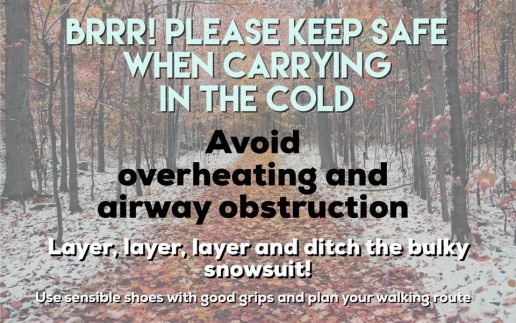
I see a lot of parents with small babies (under four months) in snowsuits or thick jackets who are then settled into a carrier, be it a stretchy or woven wrap or a meh dai or a buckle carrier. Problems can arise at this point; baby is often too warm, and may be rather sleepy as a result, or irritable, and the parent may be finding the carrier uncomfortable. Babies under 4 months are at greatest risk of difficulties due to their relative smallness weakness; they do not have strong and sustained head, back and torso control, so are more likely to run into problems. Older babies and toddlers are very different!
Let’s look at some of the major factors to consider when using a carrier in the cold.
1) Be aware of OVERHEATING
Too many thick snuggly layers can be a risk of overheating. Babies are by nature warm little creatures (carrying them can feel like having a delightful wriggly hot water bottle on your front) and it is their extremities and their heads that need protecting much more than their middles. They are not yet able to regulate their own temperatures in the way that adults can (which is why skin to skin contact from an adult for a feverish or cold child can be so very useful) so being close to your body will rapidly warm a child up anyway. As you walk you will warm up, and your extra heat will warm up the child on your front even more.
Being too hot is not good for babies; it makes them sleepy and overbundling a sleeping baby is a risk for SIDS (sudden infant death syndrome). It makes sense to avoid this overheating in slings just as much when baby is sleeping in a bed or a car seat. Furthermore, being too bundled up reduces their ability to sweat (the drops of sweat need to be able to evaporate to carry heat away) which means even older children who can regulate their temperature better will also struggle with being too hot. Hot babies are at significant risk; it is relatively easy to add extra layers for warmth if you misjudge slightly and to remove them when you come in out of the cold.
.
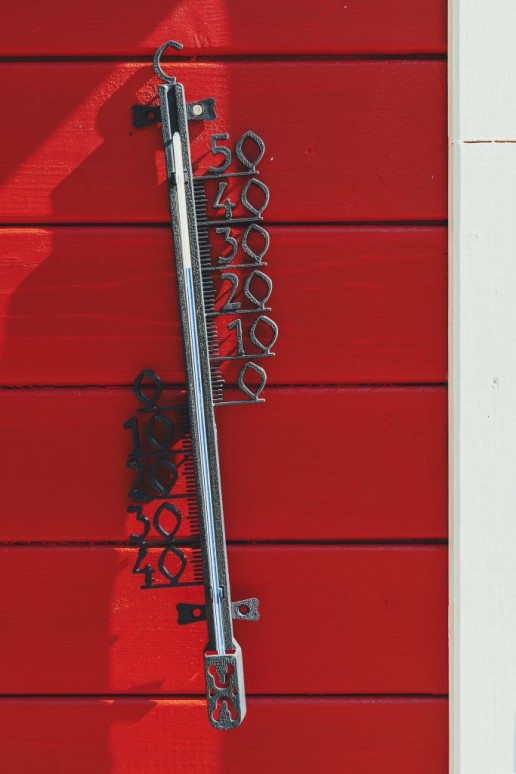
2) Be aware of AIRWAY
Sometimes the weight of baby inside the snowsuit can mean they sink down inside it, due to gravity, and end up with their faces buried inside the body of the snowsuit. This may pose a risk to airway and breathing; the same goes for hooded jackets or thick cardigans that can “ride up” the back of the carrier.
Too much fabric around the chest and upper body will also make it hard to achieve a fully supported back and a tight carry. This may increase the risk of too much space between baby’s head and your chest, allowing his chest to curl and compress and his heavy head to slump forwards, potentially compressing his airway, or burying his face into fluffy fabric, reducing airflow. Thick snowsuits really can be a significant risk.
Always ensure good airflow. Be aware of your own clothing too; a cowl or a scarf may prove problematic if your baby snuggles his face into the fabric, reducing free airflow. This is more of a risk with smaller babies than in those who have head control and are able to move themselves independently.
Make sure your baby’s face is not obscured by scarves or fabric that could be problematic if they fall asleep.
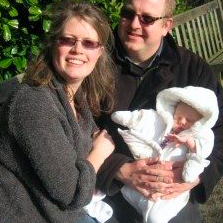
This little boy is too small for his snowsuit; if he was placed inside a sling his face would disappear into the fluffiness.
3) Be aware of POSITION
Increased bulk can affect positioning considerably. It is hard for joints to bend easily in thick, stiff trousers or multiple layers of clothing, so the M shape with bent knees higher than bottom that encourages healthy hips and protects the natural curve of the spine into a J shape can be hard to achieve. Baby may end up being “starfished” into a carrier with a hyperextended posture, rather than being comfortably seated.

Baby will feel heavier as he is not resting against the parent/carer’s body in the same way, and the weight distribution will change.
Too much bulk around the top may also affect the support to baby’s upper body, meaning that baby’s weight is pulling back away from your shoulders, rather than resting on your chest, and may be more uncomfortable.
Too much padding around the nappy region (especially in those babies wearing cloth nappies) could cause a reduction of blood flow to the lower limbs.
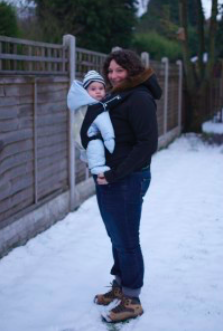
Baby above, has been straightened into a starfishing shape as the snowsuit is preventing his hips and knees from bending. however baby below is in the M shape.
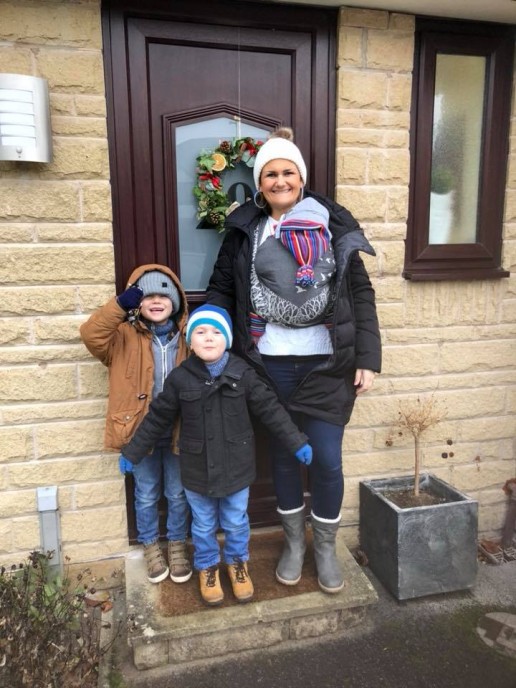
OK, so this is good to know. But it’s cold out there! My baby needs to be warm, what can I do?!
Here are some suggestions how to ensure your chilly weather carrying is safe and still snuggly warm.
If you need to go out in windy and cold conditions, or snow storms, your small baby will be warmest and best protected close to you on your front, here you can shield them from the wind and horizontal snow flurries easily.
Back carries for older children may be easier for you to see your feet as you go but be alert to their experience and ensure they are well protected. Carriers that keep children close to your body will be warmer and less likely to make you feel off balance as you walk, compared to framed backpack carriers worn high on the back; these will also be very cold for children as they are held away from body heat and more exposed to wind chill.
1) LAYER LAYER LAYER – carrying under coats
This is key to virtually all carrying, as the sling is in itself a layer of clothing, and sometimes more than one, depending on its type. A stretchy wrap is three layers, and some are thicker than others. Some buckle carriers are double layer panels, some are three. Every parent/child combination have their own micro-climate too, so what feels right for one family may be different for another.
In hot weather, you need as few as you can manage safely, whereas in cold weather you need more layers. Layers trap air in between them, so can often be more effective at providing warmth than one or two thick items of clothing, while still allowing flexibility.
Thin light all-in-one fleece suits are warm, while still being breathable and allowing good joint movement for positioning. It may be worth considering a size up to protect little toes with the riding up you get with a sling, however, too large a fleece could mean too much fabric around the face and neck. Layer up with vests and onesies and cardigans and leggings and so on, rather than using a very padded or furry inflexible snowsuit, you will be surprised how warm babies can get!
It is best, if possible, to keep baby as close to you as you can, and add layers on over the top. These layers can be undone/removed easily if baby is getting too hot (flushed, very warm chest skin, sweating, unexpectedly sleeping, for example), or if you go inside into a warm shop from a cold outside.
Wearing a large (maternity or oversized) coat which you can then wrap around your baby on the front will add warmth, as will a mac in rainy weather.
If you are creative, you could knit yourself a panel insert which would button onto your favourite button coat, making it wider to fit your baby and the sling inside. You can do the same with a zip insert (check before you buy that the zip insert fits onto your own zip). If you are innovative, you can use a large oversize hoodie or cardigan with a very big neck or a zip that can be undone to go over both of you, or wear an oversized coat backwards if you can get someone else to do up the zip. Others may use a large shawl to wrap around themselves, or a home-made fleece poncho.
There are many babywearing coats or ponchos or vests and other items of clothing on the market which have been specifically designed for this, such as the Mamalila, Lenny Lamb, Zoli, Wombat, Momawo, Liliputi coat ranges (among many others), Boba/Lenny Lamb/Angelwings hoodies/fleece vests, to name just a few, and many are suitable for back carrying.
Some can be expensive; for many they are invaluable especially if they are used frequently for back carrying (many maternity coats or extender panels do not allow back carrying) and some are stylish enough to be worn as normal coats to make them worth the outlay. Some will have hoods for both parent and baby, some won’t – it is worth doing your homework and trying a few before you splash out.
There are also some babywearing covers, similar to pushchair covers, that can just go over baby and sling but not parent, which may be useful if the parent prefers less warmth (such as Bundle Bean or Isara).
In rainy weather, some will use large anoraks over both baby and parent. There are several waterproof ponchos or covers on the market which can go over the sling on the top and umbrellas are very useful. Some creative folks have even threaded the arms of cross strap buckle carriers through a child’s waterproof anorak to cover over the panel!
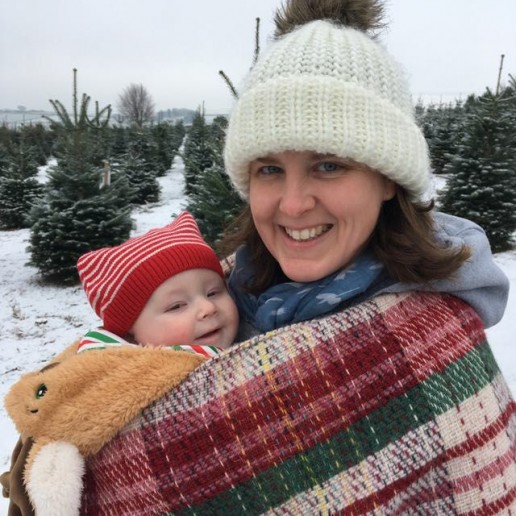

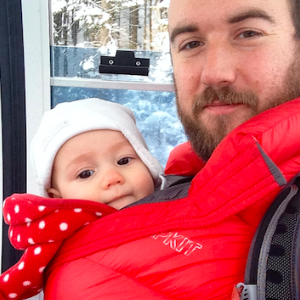
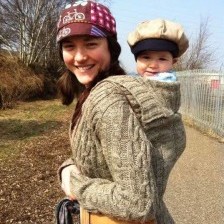
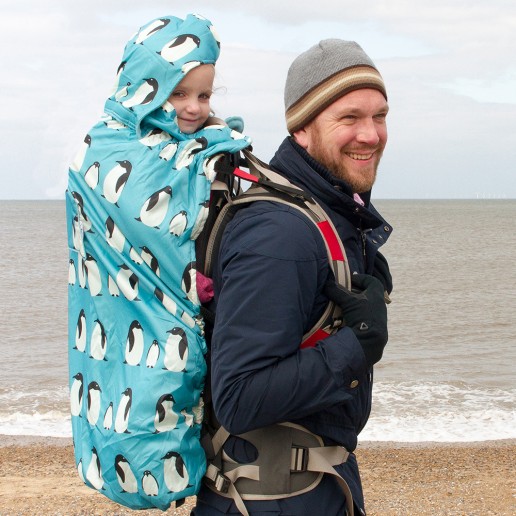
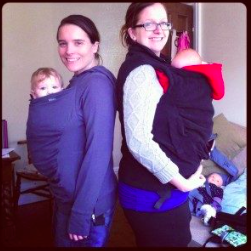
2) PROTECT EXTREMITIES
So if your baby’s body is nice and warm, heads and limbs need to be kept warm too.
This is where things like baby leggings, tights and socks can be very useful indeed, layering up over the feet. Some people find boots helpful as well, such as Stonz or Thinsulate boots (varying price ranges) or wooly booties that can be tied gently on to avoid falling off. Some fleece onesies have feet that can be folded over to make a closed foot. Feet can get much colder than hands as they are harder to tuck in near the warm central core.
Heads can be kept warm with hats…(of which there are many gorgeous options). Some opt for balaclavas with neck covers and various hoods to keep necks warm and prevent removal!
Hands can be kept warm with gloves with ribbons sewn in to stop them from falling off, or socks worn on the hands. Many fleece onesies have sleeves that can be folded over hands.
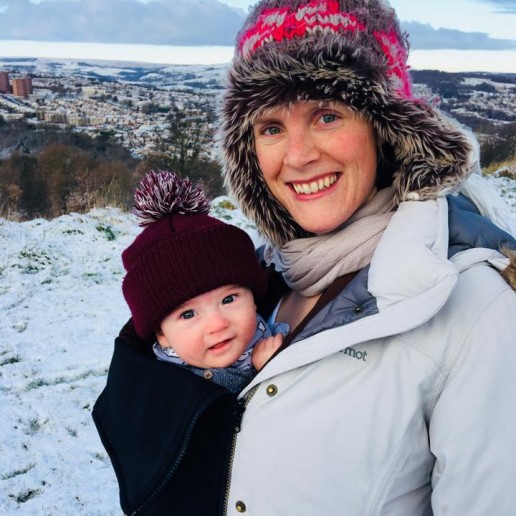
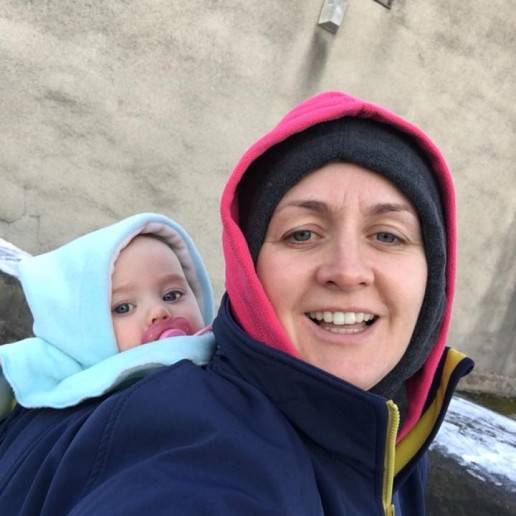
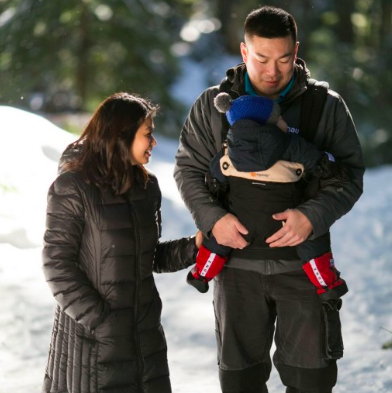
3) MANAGING CARRYING OVER COATS
This tends to work better for older babies or toddlers who want to be up and down all the time, and can work well in some circumstances, depending on the coat, the carrier and if you have anyone to help you. It can be hard to get a sling snug over the top of a bulky or slippery coat, and hard to get a snug fit on the back without help, but for many this works well.
Taking some care when planning the coat you use will make a big difference, (one that is thin and grippy, for example may be easier to work with, and hoods may get in the way of unobstructed breathing). Selecting the sling you use matters too; what you choose for normal use for maximum comfort may prove too complex over a coat. Pick one that is easily adjustable, and easy to get on and off.
This style of carrying over coats on the back may be much more convenient for toddlers who prefer to be able to get up and down again in quick succession. They are more likely to get cold on your back as they cannot snuggle into your body heat in the same way, so will need to be much more warmly dressed than a smaller baby on the front. This is especially true for framed carriers that hold children high up and separate. These children are not at the same risk of slumping over inside over-large suits and ending up with an obstructed airway, and as they are outside your coat, they will get cold. Snowsuits (that fit and are still flexible) can be an excellent solution here, as can waterproofs over coats and snuggly trousers.
Hands and feet will get a lot colder with this type of carrying, so make sure you are prepared.
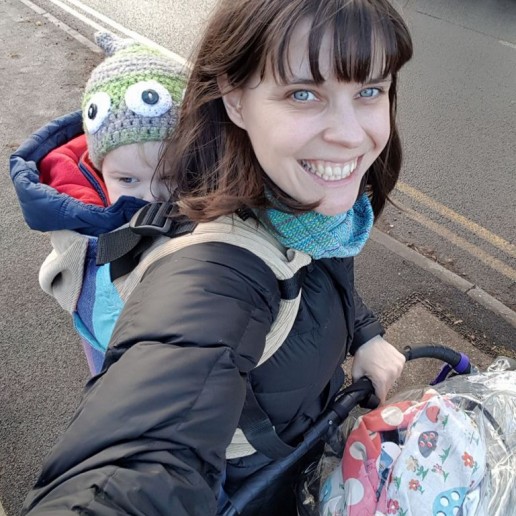
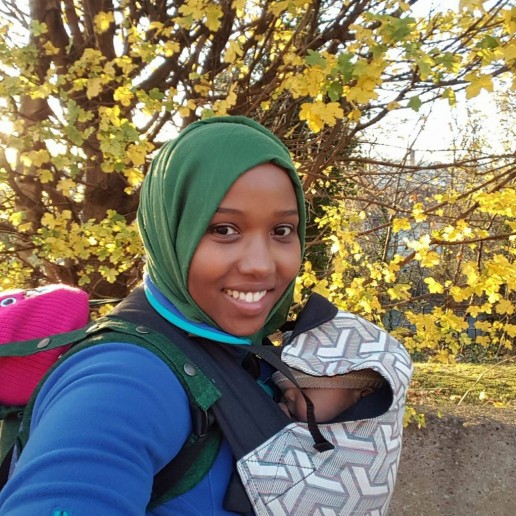
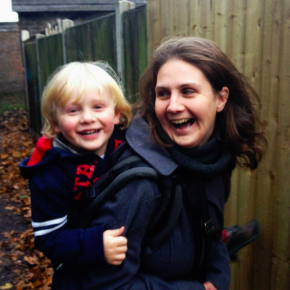
CARRYING IN SLIPPERY WEATHER
It is fantastic to be able to explore in freedom with your child in all weathers. But what about, even if you have the choice of sling and clothing right, the ground is icy and slippery?
CHOOSE SENSIBLE FOOTWEAR!
If carrying in the snow and ice, slip-on ice gripping covers (eg Yaktrax or other brands) that can go over shoes and boots can be enormously useful to prevent slipping… and if you do slip, your baby will be much safer in the sling than she would be loose in arms. Some metal grippers may not work well on mixed ground, as they may slide on smooth surfaces and can be hard to remove quickly, so have a good look at a few types and where you will need to use them before you pick one. It can be hard to remove them with a baby on your front, so plan ahead!
Good boots with grippy soles designed for all terrains may be worth investing in. Some families have used very large knitted socks over their shoes for grippiness over snow and ice when they know there are also stone stairs etc on the school run and they don’t want to go flying.
Some people recommend front carrying more in slippery weather, as if you do fall, you can use your hands to break your fall and protect your child more easily than if you fall backwards. Some people prefer not to carry at all and to use a buggy! Use whatever tool works best for your circumstances.
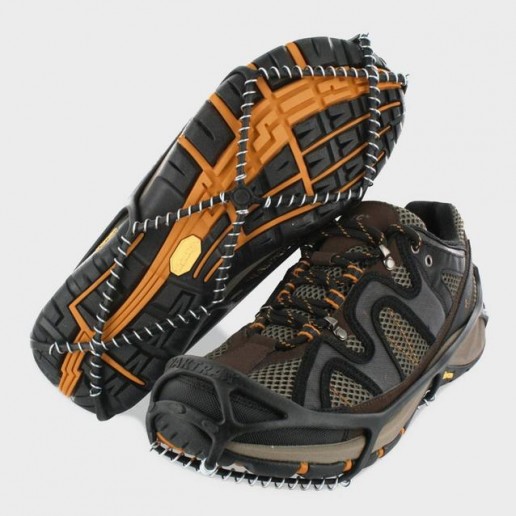
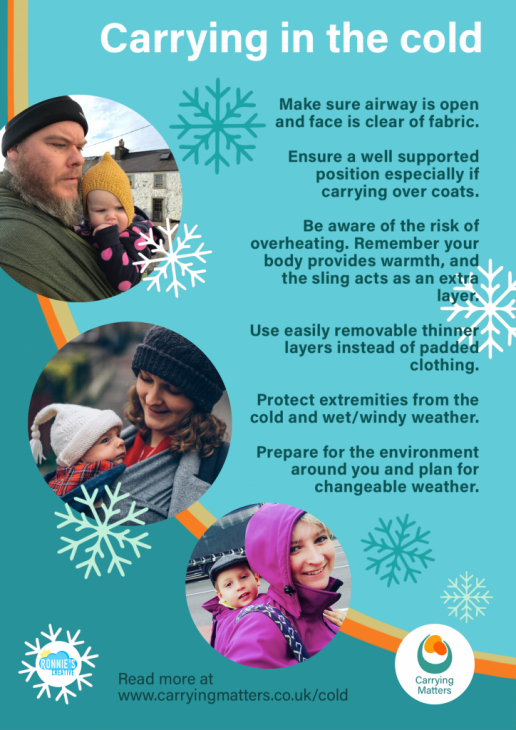
Here is some more information about cold weather carrying from other sources
http://southlondonslings.co.uk/2013/11/12/carrying-in-the-cold/ and
http://stroudslingmeet.wordpress.com/2014/09/20/slinging-in-the-rain-and-cold-and-wind-and-snow/
Here is the link discussing winter coats and car seats..
Blog post originally written 2014, updated Dec 2017
Buckle Carriers
Buckle carriers are perhaps the most well-known type of carriers in our Western society. They are popular for their perceived simplicity and ease of use, as well as their convenience in bad weather! There are many types of buckled carrier. The most useful ones are designed to be respectful to baby and parent’s anatomy as well as comfortable for long periods of time.
Like all carriers, buckled carriers need to be used safely and the TICKS guidelines should always be followed. The most important consideration is to protect baby’s airway; a baby should be held snugly chest to parent, the neck should never be folded in half and two fingers should fit between their chin and their chest. Neither should they be leaning away with a gap between themselves and their parent. A carrier that swings free when parent leans forwards is not a safe one.
The most frequently adopted, anatomically respectful position for carrying young babies is upright and facing the parent, with legs slightly spread apart (the M position) and head well supported against parent’s chest, as this will also protect growing hips and spine. Awake babies will look around, then regather their strength by resting their head on the parent’s chest for a short while; this is the safest way to carry, rather than leaning back loosely into a large head-rest.
“Quick and easy to use.” “Super comfy when they are adjusted well and fit properly.” ” So much easier to use when I have mobility problems with my hands.” “Dad and family friendly.” “Easy in the rain."
Anatomically correct positioning in a gentle J shape
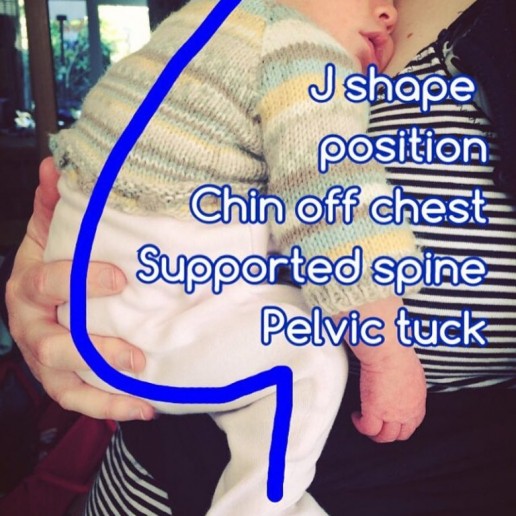
The buckle carrier has a structured panel, often a waistband, and two shoulder straps that all buckles together to hold the child close to the carer’s body. Good full buckle carriers are designed to keep baby snugly close and high up (close enough to kiss) and ensure the airway is protected for safe breathing. A baby should never be loose enough to swing free when parent leans forwards. They should not be too tall for the baby – too tall carriers or an over-focus on “head support” can cause airway issues.
Good buckled carriers should ensure baby’s spine is able to curve gently into the natural fetal tuck with the knees above the bottom that is so comfortable and natural for babies and children, thereby supporting them gently from the kneepits up to the back of the head (with head support if needed for those who want to look around).
Carriers like this are usually very comfortable for the caregiver, so much so that children are often carried happily and contentedly well into the toddler years and beyond (as compared to typical narrow-based high street brands which can feel uncomfortable quite quickly).
What kind of buckle carriers are there?
There are many variants on the basic model, such as the type and structure of the waistband, the way the straps fasten (cross straps or rucksack straps), and the height and width of the panel. Some carriers can be adjusted to fit younger or older babies while some have separate inserts for newborns.
Generalisations such as “you need a carrier with a waistband for support if you have back pain” or “you’d be better off with a carrier that crosses the straps if you want to front carry” can be unhelpful.
Each parent-child dyad is unique and it is ALL about how each carrier distributes the weight around the body, which varies enormously from parent to parent, and also from child to child. An adult’s body shows its history as it stands; how active it has been, how sedentary, any injuries, any chronic postural habits. When you load this body with a baby, all sorts of mechanics come into play, such as the convergence or divergence of centres of gravity, which joints end up being loaded and at which angles, and so on.
Babies themselves play a part in being carried; they may be more or less active participants. Sleeping babies or those who have “low tone” are harder to carry, as are those who are wriggling and twisting and turning to be able to see past straps too close to their faces.
One size does not fit all, and this is why sling libraries, sling meets and sling consultants exist, to give parents a chance to identify what fits their baby, their own physiology and their circumstances best. You can read more about how to choose a sling here.
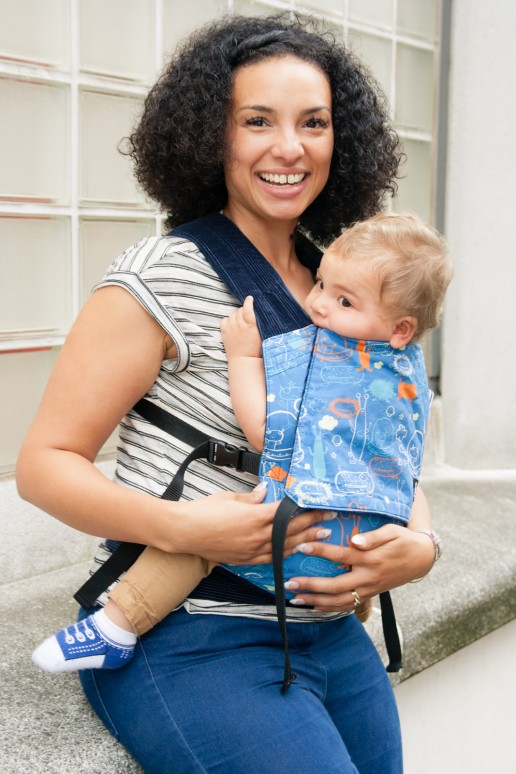
Crossed straps, soft padded waistband

Cross strap carrier with soft panel
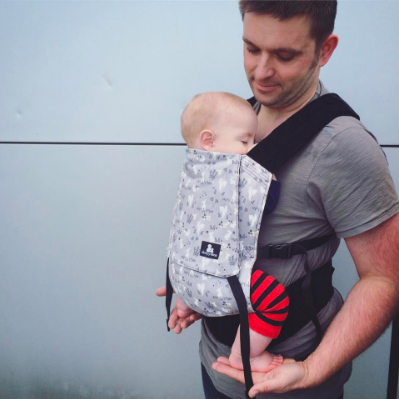
Rucksack straps with padded waistband
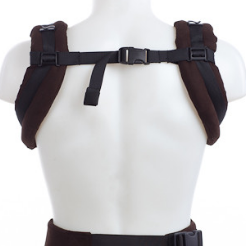
Rucksack straps, firm padded waistband
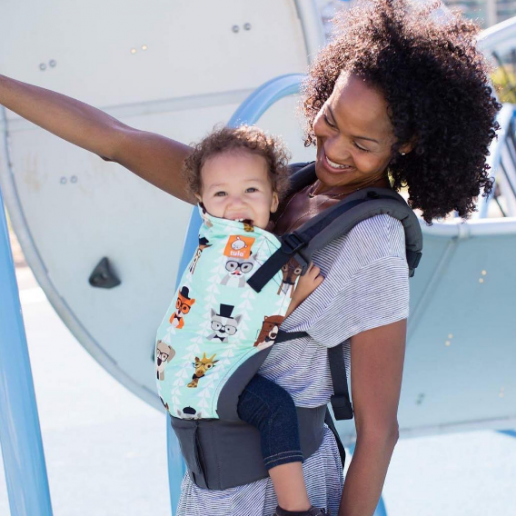
Adjusting buckle carriers for newborns
On the whole, most buckle carriers fit babies from three months upwards, and stretchy wraps or ring slings can be more useful with newborns. However, there are a few full buckle carriers that can be used from birth, which have adaptations or inbuilt support structures for babies of 7-8lb and upwards.
Some have unpadded webbing waistbands that can be rolled and cinched with straps to fit baby’s smaller knee to knee spread and narrower torso while they are small, and be gradually widened as baby’s legs grow longer. Others have foldable corners that can be poppered into a narrower shape for little legs; all can be widened as baby grows to ensure there is always a good fit while hips are still growing and forming.
Using inserts with newborns
Many other carriers have separate inserts to make the volume inside the panel smaller. Baby perches on the insert in the seated squat position, and the panel is brought up over their backs. Small babies may need the “back” section of the insert to hold their little bodies securely inside the wide panel. Here is a a handy photo tutorial for how to use an insert.Here is a a handy photo tutorial for how to use an insert.
Inserts can feel very warm in hotter weather, so do dress your baby carefully and ensure they don’t overheat.
Many people will find that they enjoy buckle carriers most once their small babies have grown a little bit stronger with more muscle tone and a little bit of head control (around three months), but with care and attention, young babies can be carried safely. Always remember that baby must not be slumped over to one side or folded in half.
Unpadded waistband, carrier "cinched" in for a perfect fit
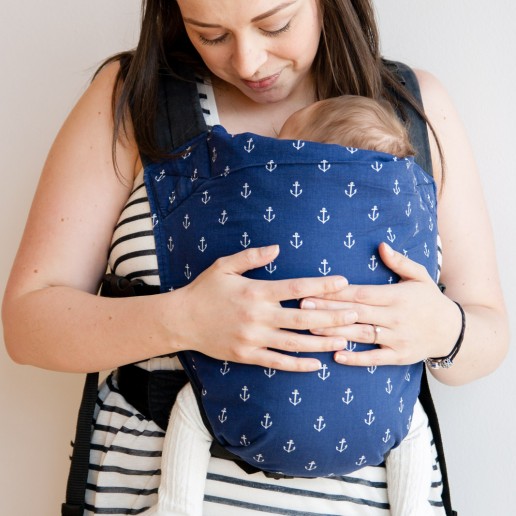
Baby seated on insert, about to have panel brought up
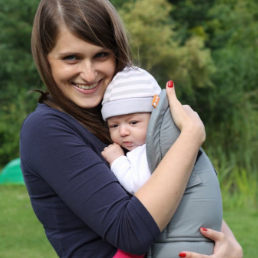
Unpadded waistband, carrier "cinched" in for a perfect fit

Baby seated on insert, about to have panel brought up

“Convenient for toddlers who are up and down all day.”“Good with wriggly children.” “Easy to buy from mainstream sellers.” “So easy to use.” “Useful accessories like a hood for bad weather.” “Pretty foolproof for a newbie.” “Great for travelling.” “Really easy to get my child clipped in and out while on the bus.”
What positions are best with buckle carriers?
Newborns and young babies under four months should be held facing in towards their caregivers. Thus position allows good airway, spine and hip support for babies who have not yet developed significant muscle strength and endurance, and who still have the curved spines of infancy. This keeps them safe. Babies should not have their spines artificially straightened but should be held in their natural fetal tuck, the M and J shape as seen from the back and from the side.
This “seated squat” position is a safe position to sleep when needed; heavy little heads resting against a carer’s chest with free airflow and not buried deep in cleavage. This is why “close enough to kiss” matters.The facing-in position keeps the baby and caregiver’s centres of gravity as close together as possible for greater all-round longer lasting comfort. Weight is distributed better around the body as baby curls in, rather than the parent needing to lean back to offset the weight hanging from the front.
Lastly, being able to see the parent can allow active “social referencing”. This is also known as “triangulation” – where a baby experiences something in her field of vision and is able to turn to see what her caregiver makes of this same experience – three corners of a triangle, environment, baby, caregiver. This allows baby to assess and process a new experience in the light of her caregiver’s response, thereby allowing learning from a “safe place”.
Manufacturers usually suggest short periods of time for facing out for those with good head control, this is usually four months at the least, due to the fatiguability of young muscles, and the time it takes for the infant brain to learn how to focus on one stream of information and zone the rest out. A child should never sleep facing out, as this can pose a risk to airway.
There are now some more thoughtfully designed carriers on the market that allow both facing in and out and provide better seated positions and thus great comfort for both parent and child. Furthermore, carriers with wider top panels will allow an elbow and shoulder to move freely which increases a child’s visibility enormously.
Some buckle carriers can also be used on the hip (some are designed specifically for this) and many will also carry on the back.
Read more about facing out carrying here
Facing out with a wider hip position
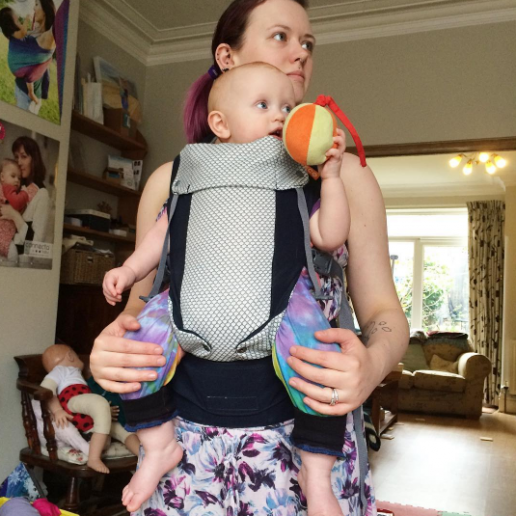
Facing out in a seated position
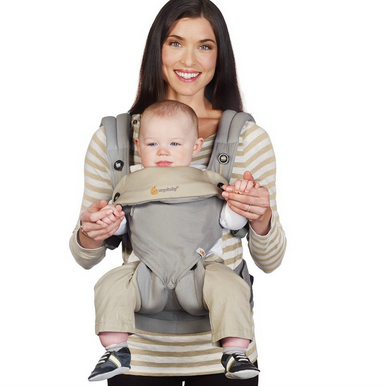
Arms out and facing in
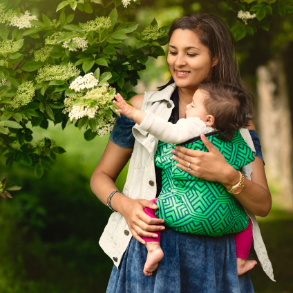
“We love how convenient it is. You can just pop him in and go. It’s the easiest way of doing short journeys where you’re taking him in and out lots. If I could only have one sling, it’d be a ring sling.”
How do I put my cross strap buckle carrier on?
Having trouble with the shoulder straps creeping to your neck? Read our guide to fixing this here.
Here is a video to show you how to do the pelvic scoop/tuck with a buckle carrier.
The pelvic tuck/scoop technique of encouraging a child to sit in a position that creates a “J shape” (from the side) or an “M shape” (from the front) in a carrier is very helpful. Such positioning is more comfortable, more respectful of anatomy, and also helps preserve open airways. The aim is to raise the knees up, allowing the bottom to settle downwards into the classic “M shape”. Read more here.
Top Tips!
- Work on your waistband; have it parallel to the ground.
- Hold your baby straight in the centre of your chest, not slipping to the side.
- Make sure he is sitting in the M shape and hold his chest close to you as you go. Getting position right at the beginning makes it much easier later.
- Bring the panel up smoothly, keeping him close.
- Keep arms in if possible, and bring older babies' arms out later, once the carry is finished. Toddlers may prefer being carried arms out from the start; ensure the panel comes right up under their armpits.
- Practice tightening your straps; become familiar with them first so you can get them snug.
- Always tighten webbing in parallel to itself or it will be a struggle to remove slack.
- Lift your baby's bottom with one hand as you tighten straps, this may make it easier (as you are not pulling their whole weight).
- Keep the straps wider on your shoulders if you can.
- The key thing is to keep baby close and high; low and loose causes strain and can lead to discomfort for you. If you are uncomfortable, come and get some help.
Common Queries about Buckle Carriers
Feeding in buckle carriers
Feeding is possible in buckle carriers worn on the front, with a little care to ensure baby’s airway is well protected. Typically, for breastfeeding, this involves loosening the panel in stages so baby is lowered gently to the nipple. No breastfeeding is hands free, and it is usually a good idea to get some help and advice from people who are familiar with how to do it. Please note that when baby has finished feeding, he must be returned to his safe snug upright position, close enough to kiss.
You can read more about how to breast and bottle feed here.
Bottle feeding in a buckle
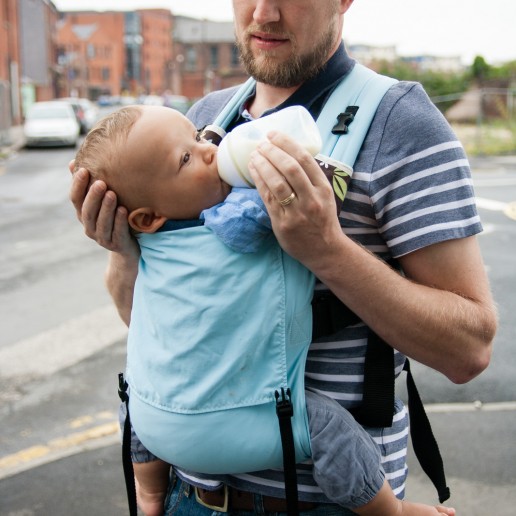
When can I start back carrying with my buckle?
Many families love this way of carrying an older baby, and it also allows the child to see where they are going when carried!
On the whole, most people feel that the best time to begin back carrying in structured panelled carriers is when baby’s upper body and torso muscles are strong enough. They need to have enough endurance to be consistently able to support themselves and hold their heads upright for a significant amount of time without tiring. This typically occurs when babies are beginning to sit unaided (or nearly). This commonly happens around six months, on average – it varies from child to child. This is in contrast to wraps or floppy meh dais (formerly known as mei tais) as these can be controlled and tightened carefully to mould around baby’s body, to ensure neck support to heavy heads.)
Some children may take longer to develop upper body control, but their parents may be struggling to carry them on the front; do go and get some help from a professional who can help you find some solutions to this problem and keep you carrying. Generally, if the carrier fits your child properly and provides the necessary support with no slumping when a hand is not available for support, you can back carry in it. This will apply to children with disabilities for example; it can take longer to gain head control but back carrying may be important. This may also apply to twin carrying, where a parent just needs to survive. The right carrier that fits well and is used optimally may work just fine.
Read more here about beginning to back carry.
Meh Dais/Bei Dais (formerly known as Mei Tais)
Meh Dais/Bei Dais(formerly known as Mei Tais) and their variants are marvellous carriers, often overlooked amidst the huge range of other types. They are among the oldest style of carriers in the world, combining the flexibility of a woven wrap with some of the convenience and simplicity of buckled carriers.
Like all carriers, bei dais and their variants need to be used safely and the TICKS guidelines should always be followed. The most important consideration is to protect baby’s airway; a baby’s neck should never be folded in half and two fingers should fit between their chin and their chest.
The most frequently adopted position for carrying young babies is upright and facing the parent, with legs slightly spread apart (the M position) and head well supported, as this will also protect growing hips and spine. The fabric should be adjusted snugly around baby for the perfect fit.
Bei Dais and other long-strapped carriers can be used for hip or back carries, and some variants (such as the onbuhimo) are designed particularly for back carrying older babies, often with their arms out.
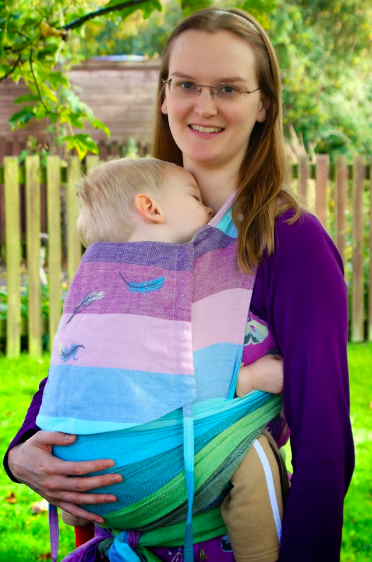
“I love mei tais. They offer some of the structure and ease of use of buckle carriers, but with an added ability to mould to the shapes of me and my little boy. There's also something about tying rather than buckling the straps that appeals both in terms of aesthetics and wearability. Versatile, and wonderfully comfortable - I get such joy and closeness from carrying my little one in this way.”
What is a mei dai?
A meh dai (also known as a bei dai, formerly known as mei tai) is the common name given to a type of Asian carrier that originated in China many years ago; consisting of a fabric panel with long straps that are wound around the parent’s body, to be tied or twisted or tucked away securely. The Chinese name for this type of carrier (mispronounced as mei tai) has become eponymous for the style, but different cultures have their own variants of these cloth carriers, which all consist of fabric panels with long straps that are wound around the parent and baby for a secure carry.
These styles of carrier have been made from many different fabrics; from reeds and grasses, to woven cloths covered with beads. Some can be cultural heirlooms with great ritual significance, many are beautifully made; painstaking displays of cultural craftmanship, yet extremely practical for daily life.
They have been the inspiration for many, many Western carriers today. Most modern meh dai and variants are made from cotton or canvas and some are made from woven wraps. including the modern buckled carriers.
What’s so good about meh dais?
In the Western world of babywearing, meh dais are popular with those who appreciate the mouldability and support of woven wraps but prefer something with more structure and definition than a length of fabric. A meh dai consists of a fabric panel that has two straps at the base that are tied (or buckled, in some variants) securely around the waist, and two straps from the top of the panel that can be wrapped around the parent and baby to ensure a snug and comfortable fit. Baby sits in the pouch with legs on either side of the panel, and the long straps allow a great degree of adjustability to all shapes and sizes.
Some people prefer the flexibility of the meh dai to the more structured and fixed shape of full buckle carriers, and with practice, meh dais become very speedy to use. As the straps are wrapped around and knotted, they can be tightened and adjusted to fit around the body exactly, which can be more of a challenge with some buckle carriers which are limited by the placement of buckles or the length of webbing.
Wide straps made from wrap fabric are popular as they can add an extra level of support if needed across the upper and mid back. They can be spread across the wearer’s shoulders and wrapped around baby’s bottom for extra lift and support, as well as creating a wider seat for longer legs. Broad, slightly padded straps are more comfortable than the thinner, narrower straps that are often found on cheaper brands, which don’t distribute the weight as well.
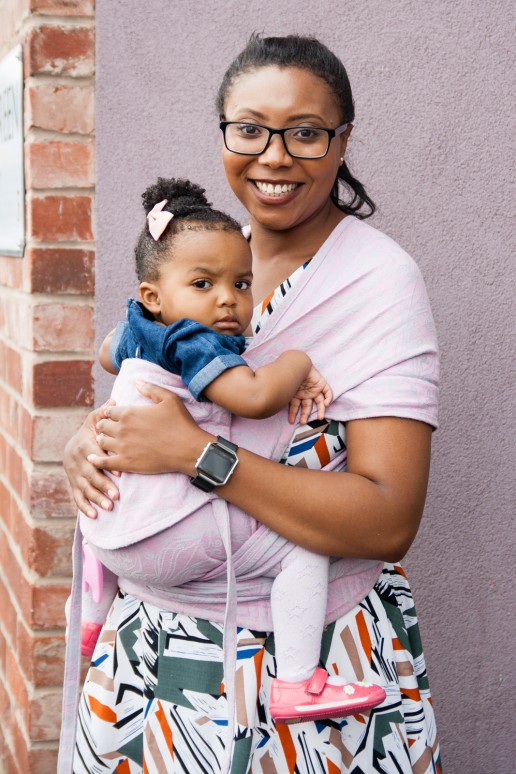
Modern buckled version of the onbuhimo
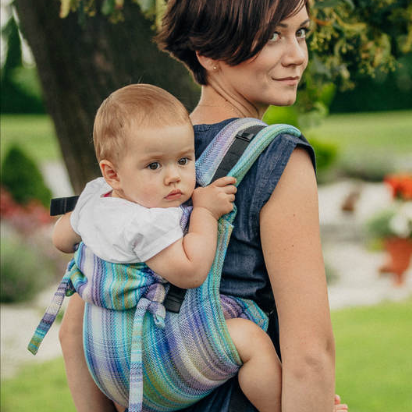
Korean Podaegi used in a Western style
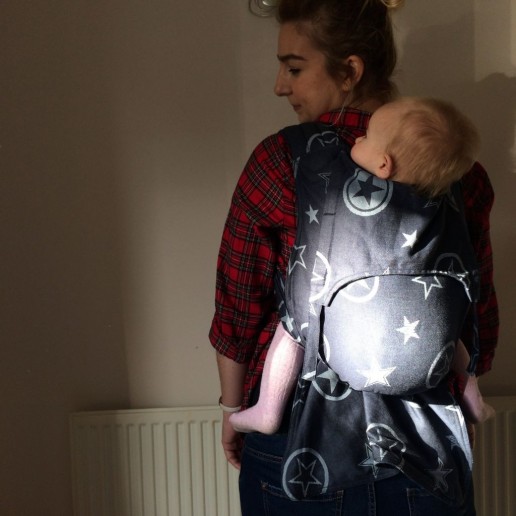
Variations on the Meh Dai
Half buckles are meh dais with buckled waistbands, but long shoulder straps for tying like a meh dai. (The buckle at the waist can be useful if you feel uncertain which knot to untie first to get baby out.) These are popular with people who want the sturdiness of a buckled and padded, yet flexible waistband. They are usually made to order by specialists.
Onbuhimos are the traditional Japanese back carrier, which have metal rings or fabric loops at the waistband for the long straps to be threaded through. Western versions of these have webbing and buckles. They are designed to work especially well for back carries. “Onbu” means to carry on the back, and “himo” means a rope or string; the rope is tied securely around the child’s legs to keep him seated safely. There is no waistband as the carrier is meant to be worn high. This can be useful if your child wants to see the world, or if are pregnant and carrying your toddler!. Read more about onbuhimos here
Korean Podaegis have two straps at the top of a long blanket that is wrapped around baby. The straps are tied around the parent’s body and back around the baby to hold him in place. There is no waistband with this carrier either. Traditional podaegis have the straps tied under arm but most Western carrying with the podaegi is done with the straps coming up over the tops of the shoulders.
South Korean Chunei carriers are similar to jackets fastened around the parent’s body that have a pocket for baby to sit in.
"I love carrying my toddler in our mei tai. There are some days where nothing will do but Mummy and with a sling she gets the closeness she needs and I can still get things done. It's also invaluable for special occasions which often get overwhelming for her, this way she can feel safe and secure and we get to spend more time as a family. Part of the reason I love mei tai's so much is because they are half way between wrapping and buckles, the ease and speed of buckles with the support and versatility of wrapping."
How do I put my meh dai on?
Tie your meh dai around your waist. You may choose to use it “apron” style, where the panel hangs straight down from the edge to the floor. This will create a pouch for baby to sit inside. You may also choose to tie the waistband flat against yourself, so that the panel folds down over the waistband to the floor. Soft waistbands can sometimes be rolled over onto themselves to shorten the overall height of the panel, so that it reaches to the back of baby’s neck (no higher than the earlobe is typical for little ones).
Pick your child up and hold him chest to chest, and position his legs into the seated squat M shape. Put one hand under the panel and smooth the fabric up his back, swapping hands as you go. This will keep him held safely against you.
Smooth the panel around his back and pull up any loose fabric at the knees. Keeping one hand on your baby, put each shoulder strap over your shoulders so they then hang down to the floor vertically behind you. With one hand still on baby, bring your free hand around behind your back to your waist and grasp the strap hanging down from the far (opposite) shoulder. Pull this downwards to tighten over your shoulder, and then bring the strap diagonally across your back and around your side. Pull out any more slack. Bring the strap over your baby’s leg and hold baby and strap with that hand. Repeat on the other side.
With each strap held in front of your baby, wriggle your shoulders and pull out any remaining looseness. Swap the straps over in your hands under baby’s bottom, and then bring each strap under baby’s leg and behind yourself. Tie a secure knot.
Ensure your baby is sitting in the pelvic tuck with bum above knees and that their chest is close to yours with no slumping. If the position isn’t’ right, untie the knot and tighten each strap again.
Spread the shoulder straps out widely to cup your shoulders for extra comfort. You can also spread the straps across baby’s bottom for extra lift.
Your baby’s tummy and chest should be in close contact with your body . If you find it hard to get right, do get in touch for some practical help at a library drop in or a one to one.
Learning how to use a meh dai on the hip or the back does take a little more practice. Some parents find it comes easily and have taught themselves. Others need a few goes to get it right and find a consultation or workshop where they are taught in person helpful.
Front Carry with a Mei Tai
Basic positioning with a mei tai front carry
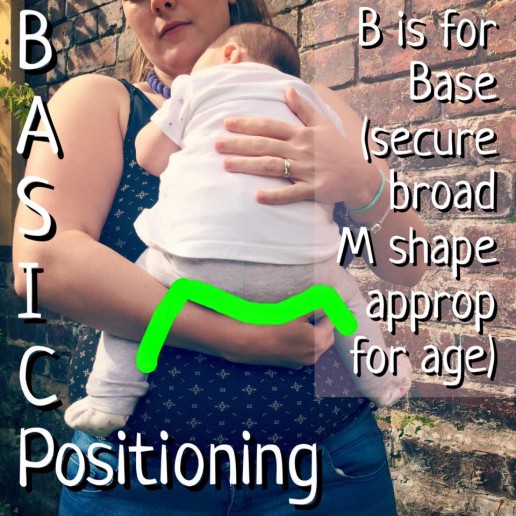
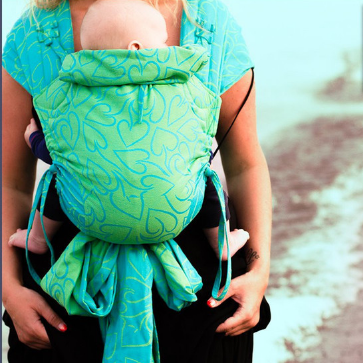
Here is a photo tutorial for a upright meh dai carry with a baby. Please click/swipe through each image.
Here is a separate link to the tutorial.
More videos and tutorials can be found on the useful videos page here.
Wide straps help with comfort for big children
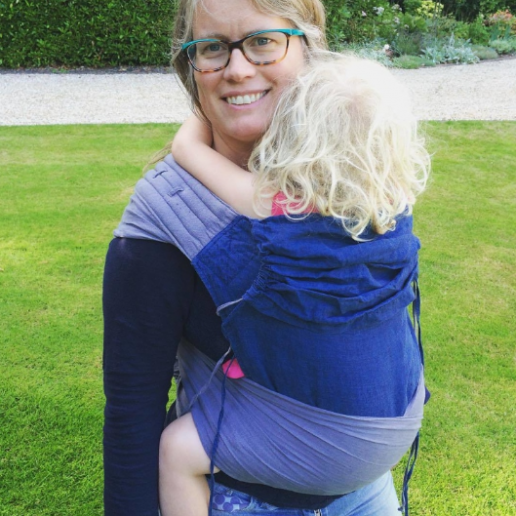
Mei tais can be used by the whole family
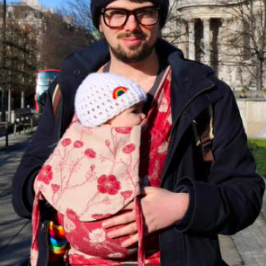
Top Tips!
- Choose how you want to put your waistband on so that the panel is the right height for your baby's back.
- Adjust where possible so the width of the base fits comfortably between your child's seated knee to knee shape.
- Make sure he is sitting in the M shape and hold his chest close to you as you go. Getting position right at the beginning makes it much easier later.
- Smooth the panel up the back and remove any looseness as you go.
- Keep arms in if possible, and bring older babies' arms out later, once the carry is finished. Toddlers may prefer being carried arms out from the start; ensure the panel comes right up under their armpits.
- Wriggle your shoulder as you tighten the strap, this helps remove slack.
- Wrap straps should be tightened in sections for the greatest effect.
- Do not tighten the straps over your baby's knees too tightly and ensure you do the pelvic tilt so baby's weight is resting on their bottom not on their knee pits.
- Spread the fabric across baby's bottom if you can, this will add lift.
“I adore my wrap conversion mei tai because it is simply the best of both worlds. It has the easy ups of a full buckle carrier, but all the beauty and floppy comfort of a wrap. Wrap straps offer extra support for my baby's bum and the weight is spread more across the shoulders so we are super comfy.”
Common Queries about Meh Dais
Feeding in Meh Dais and their variants
Feeding is possible in these soft strap carriers, with a little care to ensure baby’s airway is well protected. Typically, for breastfeeding, this involves loosening the panel in stages so baby is lowered gently to the nipple. No breastfeeding is hands free, and it is usually a good idea to get some help and advice from people who are familiar with how to do it. Please note that when baby has finished feeding, he must be returned to his safe snug upright position, close enough to kiss.
You can read more about how to breast and bottle feed here.
Back carry with a mei tai
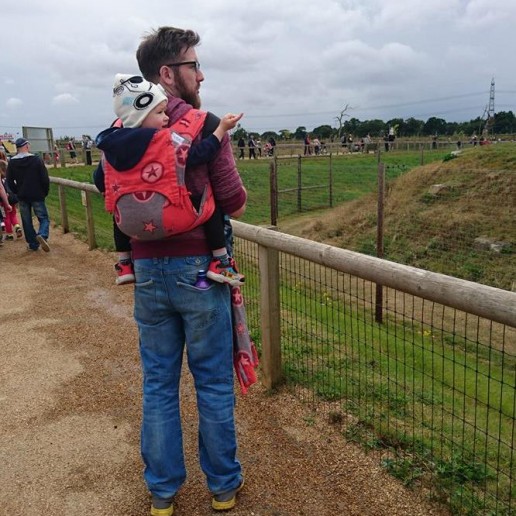
When can I start hip and back carries with a meh dai or similar carrier?
Babies can be carried “off centre” on the front from early on, as long as their natural tucked narrower M shape position is preserved. Lateral hip carries tend to work best when babies begin to sit comfortably the parent’s side, this is typically about 3 months or when baby begins to roll.
It is possible to back carry with a meh dai and a podaegi from a relatively young age, especially with one made with a woven wrap, as the panel and straps are very mouldable to ensure a safe open airway and no slumping.
Onbuhimos are designed primarily for back carrying and many families find this easy to do, they are best with older children. The weight is all taken on the upper body and shoulders which will suit some people better than others.
Back carrying is harder to do than the front and hip carries, seek help if you need it!
Read more here about beginning to back carry.
Troubleshooting your Meh Dai
- Carry feeling too loose or too low? You are likely to have too much slack in the straps that has worked its way to the front. Retighten and retie.
- Struggling to tighten it further? Hold your baby's bottom with one hand to reduce the amount of weight you have to lift as you tighten the strap with the other hand. Pin the tight strap between your knees to help maintain the tension and repeat on the other side.
- Baby folding over or slumping over to one side? This is likely to be looseness in the panel, or the straps too near your neck; leading to an unsupported back. Hold your child chest to chest and retighten the panel around him. Ensure the straps are sitting on the outer part of your shoulders not near your neck. Still not right? Go and see your local sling professional for some extra tweaks.
- Baby's head leaning back? This is usually due to looseness of the top third of the pouch not keeping shoulders and upper body held chest to chest, or not having enough fabric up the back. Lengthen the panel if available and position the straps more widely on your shoulders to bring the top edge of panel flatter and closer.
- Shoulder digging on your neck? Spread the fabric broadly across your shoulder to redistribute weight.
- Red marks at back of baby's neck? This is usually due to over tightening; try a touch looser, but keep baby safe.
- Baby leg straightening? Ensure you have put the crossing straps under the knee pits in the M shape with knees above bottom.
- More videos for other carries can be found clicking here and we can teach you in person too!
Some wrap companies make their own mei tais
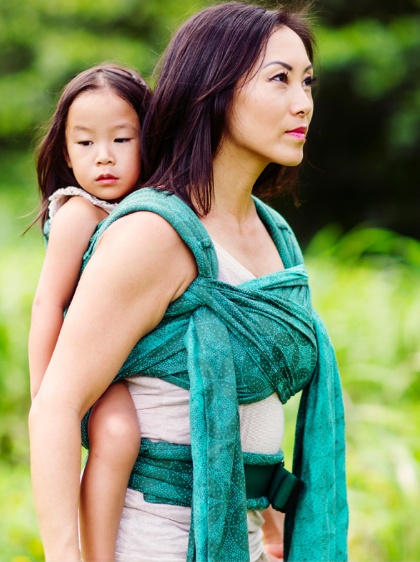
Ring Slings
Hip carriers such as ring slings can be very useful for parents who prefer a slightly “off-centre” upright positioning, or those who have children who want to see more of the world, but aren’t yet ready to consider back carrying. Hip carrying preserves the visual connection of parent-facing positions and can be very quick for mobile children who want to be up and down frequently, or for a lightweight carrier for occasional use. Hip carriers can be fabric based ring slings, pouches (for use with older babies), some buckled carriers and a few “carrying aids” that are not hands free.
Here is a quick link to a video about how to use a ring sling; as if you were having a consultation with Rosie herself and Lucy (from Little Lifts)
Like all carriers, ring slings and other hip carriers need to be used safely and the TICKS guidelines should always be followed. The most important consideration is to protect baby’s airway; a baby’s neck should never be folded in half and two fingers should fit between their chin and their chest.
The most frequently adopted position for carrying young babies is upright and facing the parent, with legs slightly spread apart (the M position) and head well supported, as this will also protect growing hips and spine. Most frequently this will be the simple upright position slightly “off-centre” from the midline, with the fabric being adjusted snugly around baby for the perfect fit. There are ways to use a ring sling to hold a baby safely in other positions, but these need to be done with care. Pouch slings are best used for babies from three to four months and up and MUST fit the adult’s body properly to be safe; loose fitting pouches can pose a risk to the airway.
Ring slings are very versatile, and can be used for front, hip or back carries as babies grow. They have been around for thousands of years in many traditional formats to allow parents to carry babies on their front or hips, from the Mexican rebozo to the Welsh babywearing shawl and the German Hockmantel.. simple, practical, incredibly useful.
“I love being able to just pop it in my bag and always have it around for emergencies, whether they be a toddler that can’t walk another step or a baby that just needs to be close.”
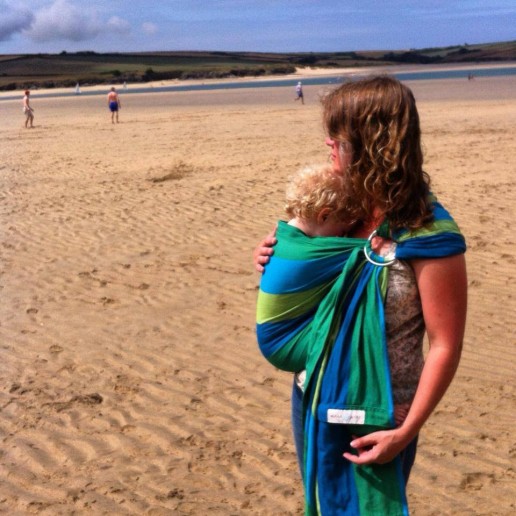
A ring sling is a piece of woven fabric usually about 2m long and 60cm wide that has one end sewn securely into two strong rings.
They are worn on one shoulder with your child sitting in a pouch on the opposite side of your body, with the loose end of the fabric threaded through the rings in such a way that the tension holds the fabric firmly and the weight is distributed across your shoulder and back.
They are derived from the ancient practice of tying short cloths around the body with a knot at one shoulder, such as the Mexican rebozo shawl (which is a multipurpose cloth).
Ring Slings are very versatile for a wide range of ages, and can pack away small, which is great for portability and convenience. Once you have the knack, they are very quick and easy to put on.
They can be used from birth, and allow preservation of the natural foetal curved position with knees tucked up into the M shape, and many babies will sleep contently in a ring sling, allowing the carrying parent to be hands free (which can be very helpful with toddlers around).
They are useful for feeding as they can provide discreet cover, or allow semi-cradled or sideways seated positions for breast or bottle access. They can be perfect for quick up-and-downs with toddlers, or to keep in the car for emergency carrying needs.
For babies who love to see where they are going (and not yet ready for back carries) a ring sling allows a comfortable off-centre or hip carry that still preserves healthy hip position. Children can see past the nearside shoulder and also look directly ahead. This position allows a child to turn its head into the carer’s chest, away from too much stimulation. Babies have not yet learned to organise and “zone out” of their multiple sensory streams, and need to be able to retreat and sleep safely.
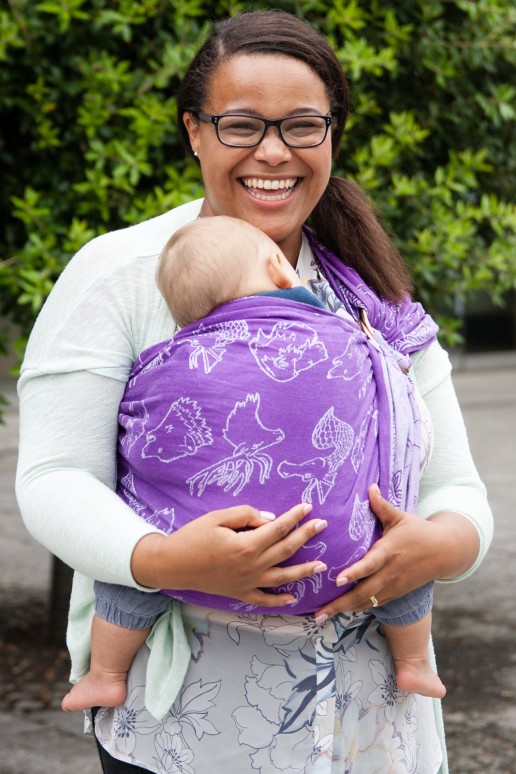
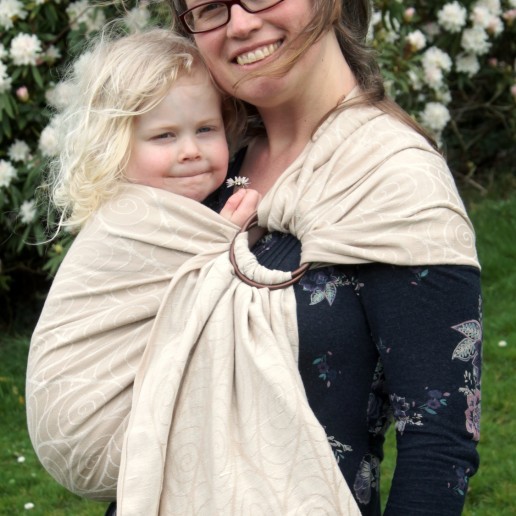
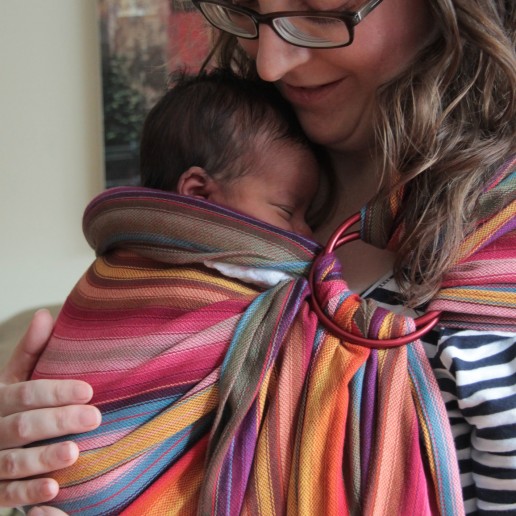
Types of Fabric
Many ring slings are converted from cotton woven wraps, as cotton is easy to care for, soft, strong and supportive. Some may be made of blends of cotton, wool, linen, hemp, silk or bamboo. These fibres can add features such as extra supportiveness, grippiness, softness or glide, and people will often have their preferences. Linen, silk and hemp are extra supportive for older children, but can be a little rougher than cotton, whereas bamboo adds softness and smoothness. Some grippier fabrics can be harder to work with, while slippy fabrics can feel as if they are loosening a little
Some ring slings will therefore be thinner and cool to wear, some are dense and blankety for extra comfort.
Wrap fabric works very well as a ring sling, as it moulds well around a child and the wearer’s shoulder and is easy to work with and tighten through rings. Ring slings made of cheaper cotton or with things like padded rails or shoulders can be much more difficult to use well and safely. I do recommend going to your local sling library to try a few out and see the difference for yourself.
“When he was little, it was such a cosy way to carry him. Cuddled in close. When he was a bit bigger, he was too curious for other carriers, and would only sit on our hips – so the ring sling was all we used for a couple of months."
Types of shoulder
The most common types are simple gathered shoulder and pleated shoulder. They are all different and most people find one style suits them best, it is worth trying a few out from the sling library or sling meet to see which works best for you; what is right for one person may not suit another.
Simple gathered shoulder; this enables a good spread of fabric across your shoulder in a cupped distribution, as well as spreading widely across your back. Most ring slings have this shoulder.
A popular variation of this is a “floating” shoulder, where the seam is sewn about 9-12 inches away from the rings. This keeps the seam behind the shoulder (which can help to keep the rings nice and high) and the double layer of fabric adds to the feel of cushiness.
Pleated shoulder (typically with knife pleats): the fabric is kept in a narrower distribution to the top of the shoulder but still spreads widely across the back.
There are many variants of pleated shoulders, such as
The Eesti shoulder is a pleat at each edge with simple gathering in the centre, it will spread widely to cup the shoulder, but less broadly than the gathered.
The box pleat shoulder (with knife pleats) is of medium width across the shoulder so keeps it a little constrained for a tidier look at the front while still spreading across the back.
Simple gathered shoulder
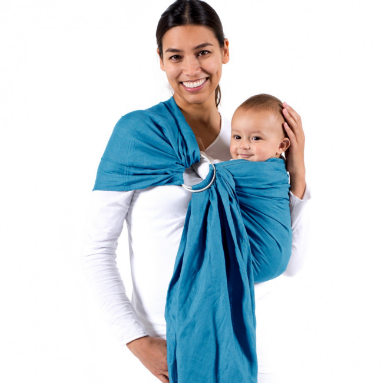
Floating gathered shoulder
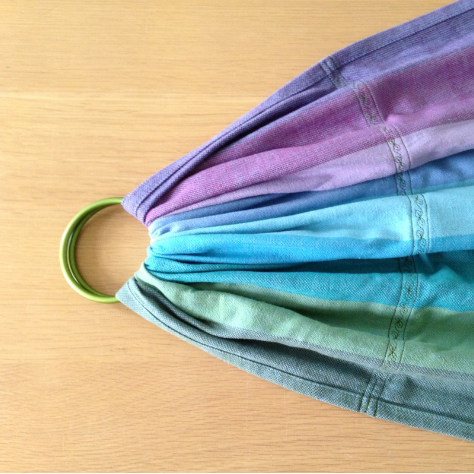
Knife pleated shoulder
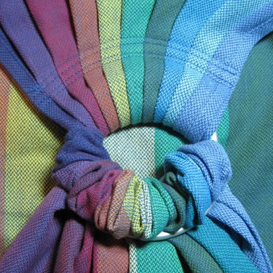
Floating pleated shoulder
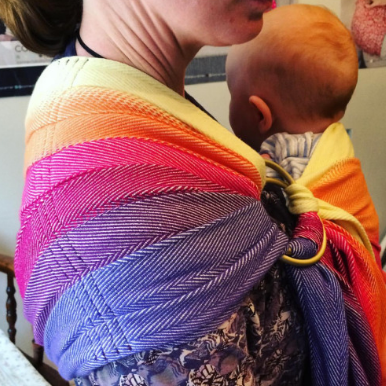
Eesti shoulder
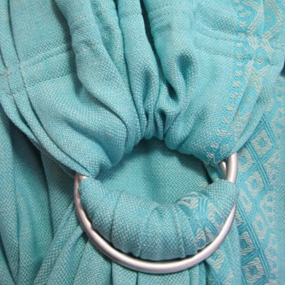
Box pleated shoulder
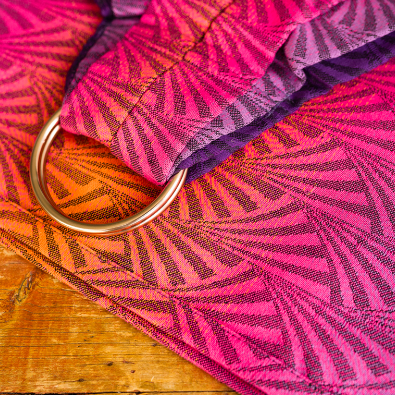
“We love how convenient it is. You can just pop him in and go. It’s the easiest way of doing short journeys where you’re taking him in and out lots. If I could only have one sling, it’d be a ring sling.”
How do I put my ring sling on?
Set your ring sling up with the long end threaded through the rings like a belt, with the lower rail a little tighter than the top rail, making a pouch.
Slip your child’s legs into the gathered rope of fabric, and sit them down with the fabric collected well into their kneepits and bottom resting lower than knees (this is the M shape that protects hips in a healthy position and provides a secure carry). Readjust the rings so they stay high, just below your collarbone.
Once this position is achieved, pull the top edge of the fabric smoothly up baby’s back to the neck, and then check that the lower edge of fabric is well tucked up into baby’s bent knees, to ensure you have a good seat. You will need to smooth any loose fabric under the baby’s knees towards the rings. Baby should be sitting in a “bowl” with the bottom third of the fabric snugly gathered in a horizontal aspect.
Spread the fabric comfortably to cup your shoulder with the rings up high, and then while holding baby securely, bring the slack of the top edge of fabric around your back, over baby’s body and towards the rings.
Find the top rail of the fabric in the section after the rings and pull the fabric through the rings in a direction slightly away from your body and over your child, rather than tugging downwards. Keep moving the fabric through the rings in sections down the width of the fabric, little bit by little bit, keeping the rings up high, until you’ve got to the bottom rail and all feels nice and snug.
Your baby’s tummy and chest should be in close contact with your body . If you find it hard to get right, do get in touch for some practical help at a library drop in or a one to one.
Learning how to use a ring sling does take a little practice. Some parents find it comes easily and have taught themselves. Others need a few goes to get it right and find a consultation or a workshop where they are taught in person helpful.
Please note that low horizontal cradle style carries are no longer recommended due to airway risk. However, semi-reclined positions where baby’s face is free of fabric can be very comfortable. For such carries or with premature or especially small babies you may find it helpful to have some help in person.
Upright front “tummy to tummy” carry with a small baby

Front carry with a four day old
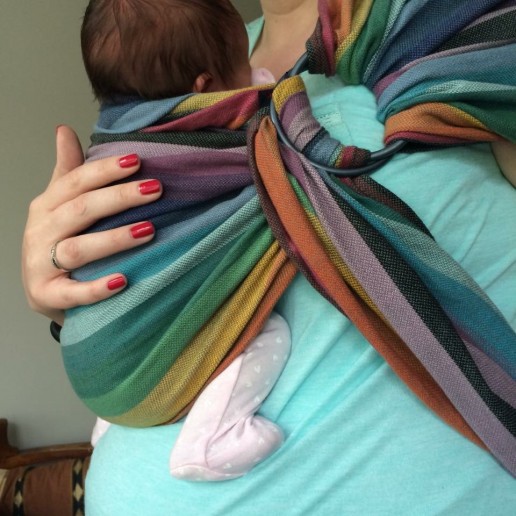
Here is a photo tutorial for a upright ring sling carry with a baby. Please click/swipe through each image.
Here is a separate link to the photo tutorial.
Toddlers love ring slings too!
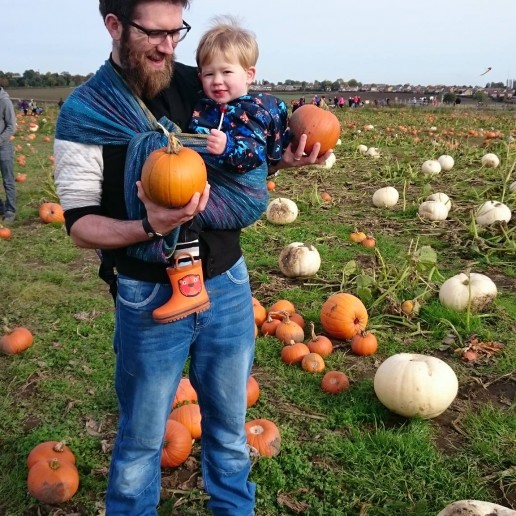
Ring slings can be used by all the family
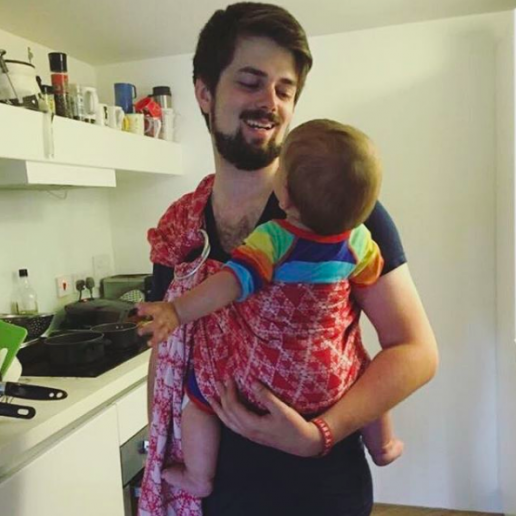
Top Tips!
- Prepare the pouch for your baby; a little snugger at the bottom third to help hold knees up, and the middle and top sections only just wider than the volume of your baby's body, so it is snug as you pull it up.
- Hold your baby straight in the centre of your chest and bring his legs through the rope pass on the front.
- Make sure he is sitting in the M shape and hold his chest close to you as you go. Getting position right at the beginning makes it much easier later.
- Keep the rings in the right place as you go; it is easier to amend ring position before you bring up the panel.
- Keep arms in if possible, and bring older babies' arms out later, once the carry is finished. Toddlers may prefer being carried arms out from the start; ensure the panel comes right up under their armpits.
- Bring all the slack from your back around to be near the rings and hold this fabric as you tighten; this stops the rings sliding down and ending up too low.
- Practice tightening the fabric strand by strand. This is key for ensuring the top, middle and bottom sections of the ring sling are snug around you and your baby.
- The middle thirds need to be snug to avoid folding and slumping over.
- An over-tight lower third will impede the formation of a seat.
- Do not tighten the top hem on its own; this can lead to over tightening and red marks. Tighten the top few inches; this will hold shoulders in.
- Lift your baby's bottom so you can spread the shoulder fabric well for comfort.
“Once you’ve got the sling in a comfortable position, it’s really easy to just pop it on the next time you use it with little adjustment. Great for a quick carry for tired toddler legs.”
Common Queries about Ring Slings
Feeding in Ring Slings
Feeding is possible in ring slings and some buckled hip carriers, with a little care to ensure baby’s airway is well protected. Typically, for breastfeeding, this involves loosening the panel in stages so baby is lowered gently to the nipple. No breastfeeding is hands free, and it is usually a good idea to get some help and advice from people who are familiar with how to do it. Please note that when baby has finished feeding, he must be returned to his safe snug upright position, close enough to kiss.
You can read more about how to breast and bottle feed here.
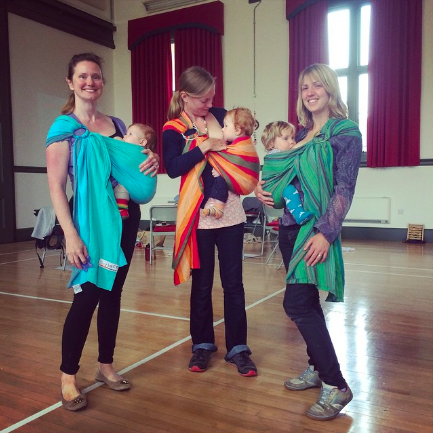
When can I start hip and back carries?
Babies can be carried “off centre” on the front from early on, as long as their natural tucked narrower M shape position is preserved. Lateral hip carries tend to work best when babies begin to sit comfortably the parent’s side, this is typically about 3 months or when baby begins to roll.
It is possible to back carry with a ring sling and many families find this a quick way of carrying an older baby. It is harder to do than the front and hip carries, but your local sling educator (find them at Sling Pages) can help. This French video is one that I like and use myself.
Read more here about beginning to back carry.
Back carry with a ring sling
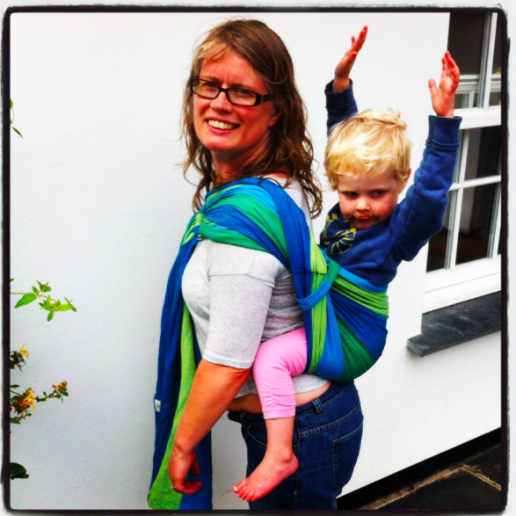
 Can I face my child forwards in a ring sling?
Can I face my child forwards in a ring sling?
Indeed you can, once they have head control (typically about 4 months). This is known as the Buddha position and some babies love it! Their legs are crossed into a buddha position with feet in front of the tummy (so weight is not placed on the ankles).
Troubleshooting your Ring Sling
- Carry feeling too loose or too low? You are likely to have too much slack in the pouch.
- Struggling to tighten it further? If the fabric is all tangled up in the rings, distributing it more evenly and freeing the hems will make it easier. New ring slings may need some "breaking in". Try to have the pouch the right size for baby to minimise how much tightening you need. Tighten in strands, in a wheel spoke pattern, lifting baby's bottom a touch as you go to reduce the weight you have to pull.
- Baby folding over or slumping over to one side? This is likely to be looseness in the middle third; leading to an unsupported back. Hold your child chest to chest and tighten around them.
- Baby's head leaning back? This is usually due to looseness of the top third of the pouch not keeping shoulders and upper body held chest to chest, o not having enough fabric up the back. Pull up more fabric if needed (a third should remain under the bum) and tighten the top third.
- Baby's face too close to the rings? Bring the pouch back down to the rope pass, and rearrange the rings, before pulling the pouch back up again. Bring the slack from behind you towards the rings before you tighten.
- Shoulder digging on your neck? Spread the fabric broadly across your shoulder to redistribute weight. Loosen the top hem a little at the rings and feed the slack back under your arm to your neck.
- Red marks at back of baby's neck? This is usually due to over tightening of the top hem of the pouch; it is the top third that needs to be snug to support the shoulders.
- Baby leg straightening? Ensure you have enough fabric tucked under the knee pits in the M shape with knees above bottom. Too tight and you won't be able to tuck this under. When you have at least a third of fabric tucked under, bring the back slack along to the near kneepit and tighten any slack.
Ring Slings can be great for weddings
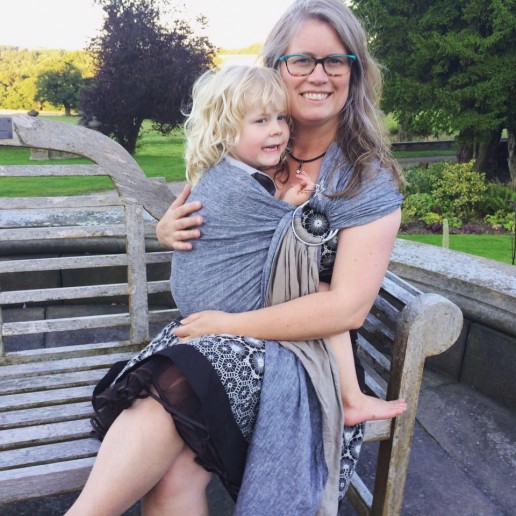
Ring Slings can be used facing out, with care
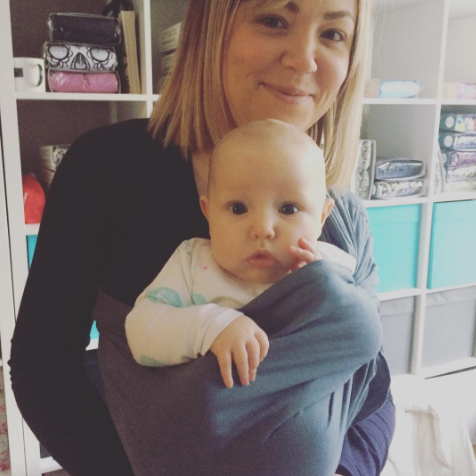
Pouches and Carrying Aids
Simpler than ring slings but very similar, pouches are “tubes” of non-stretchy fabric, usually cotton, which are folded in half along their length and then partly unfolded to make a deep pouch for baby to sit in.
You need the right size for your body shape for them to work well so they do need to be fitted, and used properly. They can be risky if used badly as it is very easy for a young baby to slip down inside the pouch and end up with the chin pressed forwards onto their chest or their face squashed against the parent. That said, once a baby is nearer four months or so with robust upper body control, pouches can be very useful for quick carries as they pack down so small.
Carrying aids are not technically slings at all, as they are not hands-free and the parent will need to support the carried child with one arm. These are things like shaped mesh cross body sashes that a child can ride on the hip (some of the weight borne by the opposite shoulder) or small shaped seats that are buckled around the parent’s waist for a child to perch on.
Buckle Hip Carriers
There are a few buckled hip carriers such as the Scootababy that support children fully and are hands free; many parents find them invaluable tools for getting on with daily life with a child held comfortably on the hip, where they usually tend to rest when in arms. They can be used for central front carrying and back carrying (with caution) and fit best from around 4months up.
Dad needs to keep a hand on baby's back for safety with this carrying aid
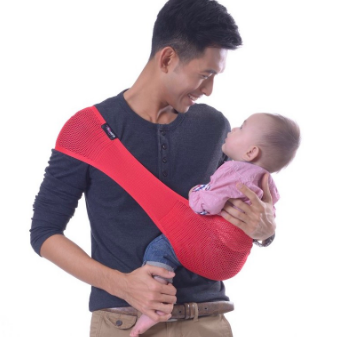
This hip carrier provides full back support
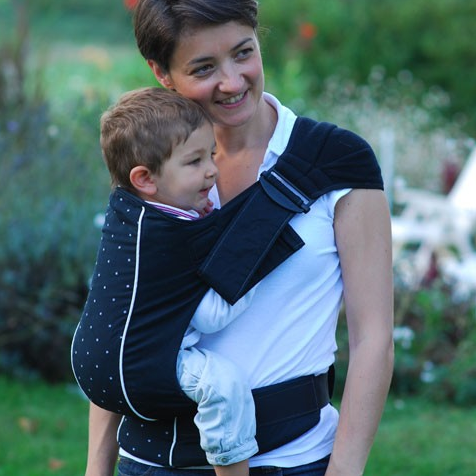
This photo (of a demonstration doll) shows the risk of low, horizontal cradle carries in bag slings and some pouches.
Please take great care if you are using any kind of reclined carry as it puts your baby’s airway at risk, it can push the chin onto the chest and restrict breathing.
Pouches MUST be the correct size for safety and are best used for babies over 3-4months.
If you would like to learn how to use a ring sling for your young baby in a semi-reclined position please get in touch with your local sling educator, who may be able to teach you how to do this safely. This video shows you one way to ensure baby is kept high in a semi-reclined carry with an open airway in a ring sling.
Unsafe, low, horizontal cradle carry in a pouch sling
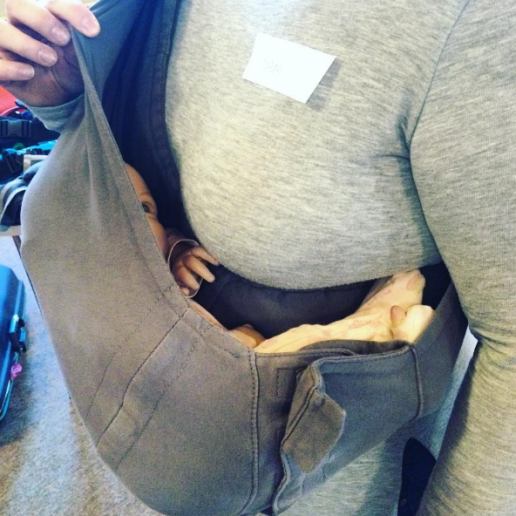
With all one shouldered carriers, it is important to build up strength and ensure frequent changes of position. If possible, swap sides to encourage balancing of the load around the body and avoid strain from repetitive weight bearing that feels comfortable at the time. If you are pregnant, or have Symphysis Pubis Discomfort, or significant back pain, one shouldered hip carries may not be the best choice for you.
If you need some more support, please get in touch with your local sling educator.
Stretchy Wraps and Close Caboo
I am a big fan of stretchy wraps and their variants (like the Close Caboo). They come in all shapes and sizes, and are usually to be found cuddling a tiny baby close to someone’s chest. Many babies adore the security and safety of the wrap and fall quickly to sleep. For many parents, they are the first slings they own, for good reason.
Like all carriers, stretchy slings need to be used safely and the TICKS guidelines should always be followed. The most important consideration is to protect baby’s airway; a baby’s neck should never be folded in half and two fingers should fit between their chin and their chest.
The most frequently adopted position for carrying is upright and facing in, with legs slightly spread apart (the M position) and head well supported, as this will also protect growing hips and spine. The stretchy wrap will provide gentle mouldable support and can be adjusted to provide head support.
Babies often sleep in stretchy wraps/Close Caboos, when well positioned, as the closeness and snuggliness of the layers of fabric (always at least two layers of fabric with a stretchy!) mimic the close conditions of the womb during pregnancy, and being in contact with a parent’s skin and near a parent’s heartbeat and able to hear a parent’s voice is extremely reassuring for babies.
The most common style of carry is the pocket wrap cross carry (where baby’s legs are on either side of two cross passes). Once you have the hang of it, it is quick and easy, and the wrap can be left on all day and baby popped in and out.
“I loved how snugly it is, the closest thing to having my bump back! I loved the way it moulded to him. For a winter baby it was perfect as it kept him so warm.”
“I’d go out in the morning and T would sleep in the wrap pretty much all day. I’d meet up with other mums or just go and have a coffee and read the paper by myself, without having to worry about manoeuvring a pram.”
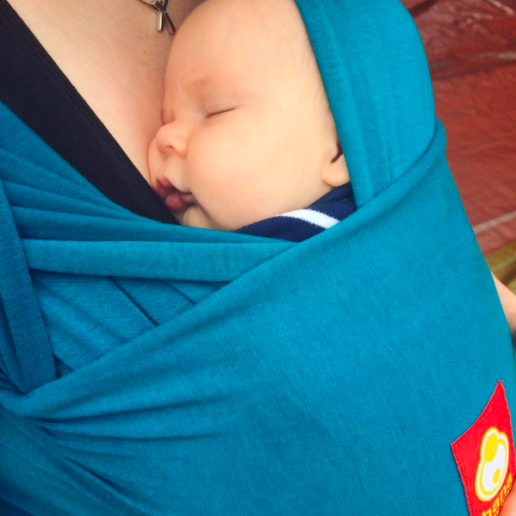
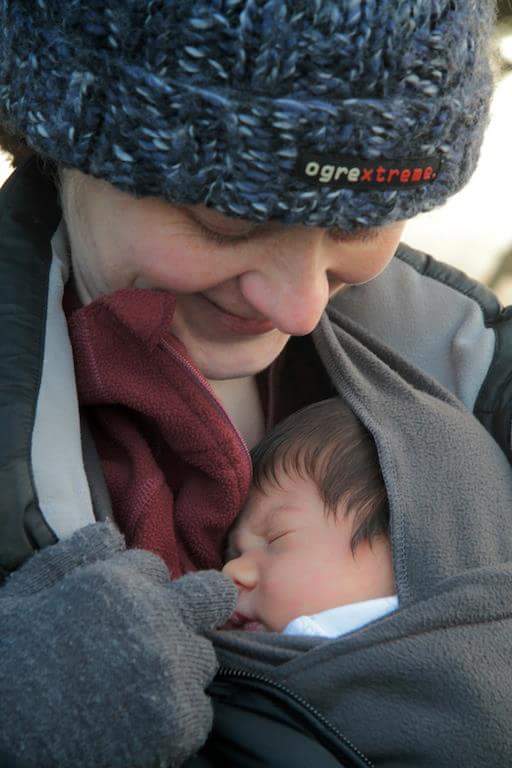
What is a Stretchy Wrap? (see further below for the Close Caboo)
A stretchy wrap is a length of fabric, usually made of soft and stretchy machine knitted cotton, that is usually between 4 and 5m long and about half a meter wide. Some have bamboo blended in with the cotton, which adds to the softness and comfort, and some have a small proportion of spandex, which adds to their elasticity and stretch.
They are suitable from birth, and in fact are often used for kangaroo care in hospitals with premature babies, and most people will find their stretchy wraps will be suitable for at least six months and often many more, especially for the days when active babies are sad and need all-over-cuddles or need some sleep. The gentle all-round pressure helps to reduce excessive stimuli and allow a baby to switch off and sleep.
Not all stretchy slings are the same (varying in stretchiness and ease of use) but by and large, they have the same purpose – to be a comfortable one-size-fits-most sling that a parent can pre tie before putting baby in. This means that the sling can stay on all day and baby can be tucked into it easily and quickly when needed, and taken out again very simply. There is no need to retie a stretchy over and over again during the day. The stretchy does not need to be removed for breastfeeding (see below for how to do this safely).
“I loved the security of it and having my baby skin to skin on many occasions. It really helped me bond with him.”
How do I put my stretchy on?
The key to success is in preparation; getting the tension of the passes right before baby goes in, and ensuring their position is correct. I always recommend that each pass is in place in baby’s kneepits to ensure baby is in the M shape and held chest to chest before the fabric is then spread across their body, one side at a time. These images show optimal positioning for a young baby in the wrap – each kneepit is supported in the M shape and baby is chest to chest in the gentle J shape.
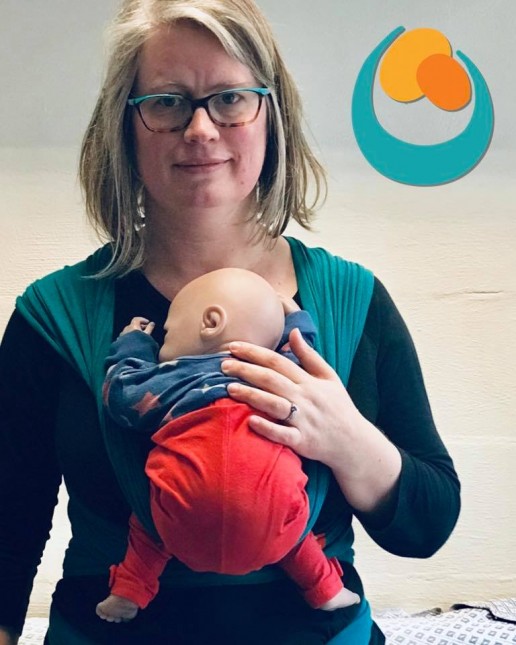
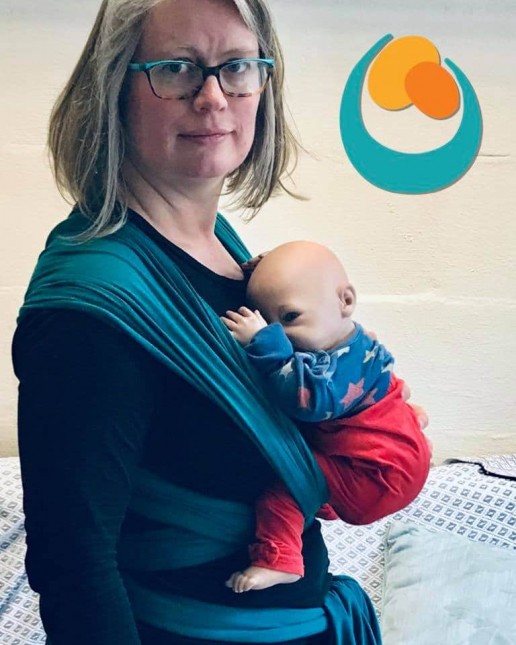
Here is a quick subtitled video showing how a young baby can be positioned well.
Many people worry that it looks fiddly, complicated or that there is too much fabric. But really, it is simple – you just tie it on the same way each time and pop baby carefully into the cross passes on your chest. The videos here all show just how simple it can be. I work with “two-way” stretchy wraps (they stretch lengthways and widthways and are easy to maneouvre).
With premature or especially small babies who still have their feet held very close to their bodies, other techniques (still using the same tie method) may be more suitable, such as this one (video link). Please get in touch with your local sling educator (www.slingpages.co.uk) for extra help.
Please note that horizontal cradle style carries are no longer recommended due to airway risk. Some older instructions unfortunately still contain this position.
Here is another video of the pocket wrap cross carry from Noah’s Arc Sling Library
And here is an audio described version of the above
A step by step stretchy wrap photo tutorial guide; this is a two-way stretchy wrap. Two-way stretchy wraps stretch along their width and their length.
The key to success is in preparation; getting the tension right before baby goes in, and ensuring their position is right before spreading any fabric. Quick link to this tutorial here.
Video of the Pocket Wrap Cross Carry with a two way stretchy wrap (Hana, Boba, JPMBB), showing how to avoid slumping. This is the same technique as the photo tutorial.
A more detailed, slower video with doll can be seen on this YouTube link
How to take a baby out of a stretchy wrap without untying – this allows the wrap to stay on all day and baby can be popped in and out, rather than retying over and over again.
A short video for how to do the pre-flipped shoulder to keep fabric away from baby’s face. This is important to ensure there is no airway obstruction.
The pelvic tuck with stretchy wraps (and all carriers) is important, for baby’s airway support and also for comfort.
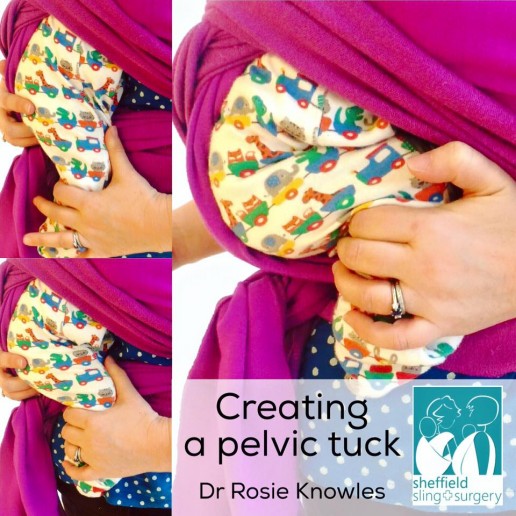
Passes in knee-pits and good M shape position
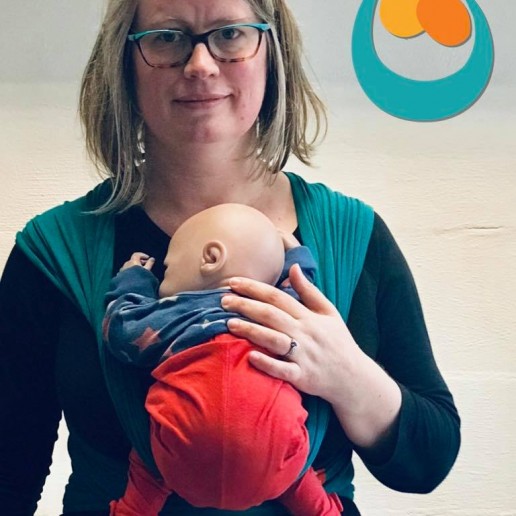
Top Tips!
- Make sure the fabric is snug. Slack fabric leads to slumping later. Take time to make sure all the passes are tight and when stretched out, are no looser than the volume of your baby's body.
- It will be much easier if you hold your baby in the secure M and J shape positions onto your chest before you put the carrier on.
- Put both baby's legs into each cross pass and ensure he is sitting down with the passes in his kneepits, and then straighten him up and check his position. His ribcage should be snug against your chest and his chin up.
- Then spread each pass one by one, kneepit to kneepit (this avoids sideways slump).
- Ensure there is no fabric over your baby's face; fold the fabric out of the way, ensuring each pass still comes up to the neck.
- Pull up the third pass to the back of baby's neck. Some people will fold the top edge over a rolled up muslin to provide a little extra neck support for active babies.
- You should feel like you can lean forwards (with one hand on baby's head) and baby should not swing free.
“The stretchy is a brilliant hand- free kit. I’ve been out and about, from carseat to wrap and back again with ease. There’s an ever so gentle bounce that quickly settles Erin whilst walking around and yet when alert she’s still able to have a nosey around. I love babywearing and find the stretchy very comfortable to carry her 12lb weight. Cuddles whilst doing household chores!”
Common Queries about Stretchies
Breastfeeding in Stretchies
It’s possible to breastfeed in a stretchy, once feeding is well established and you are confident with your use of the sling. The video below shows you how you can use your stretchy as an aid for feeding without needing to unwrap each time. Please note that baby’s head is not covered by fabric and her neck is supported throughout. When baby has finished feeding, she must be returned to her safe upright position and not left to sleep in the horizontal position.
No breastfeeding is hands free, and it is usually a good idea to get some help and advice from people who are familiar with how to do it.
Can I face my baby outwards with the stretchy?
Forward facing out in a stretchy is not recommended for several reasons, even though some older instruction manuals show how to do it. Newer companies do not have this carry in their instructions. Why not?
- No head support can be created in this position, and babies have heavy heads in proportion to their bodies. A sleepy head lolling forwards may compress the airway and impede breathing, just as the cradle carry may do.
- A baby facing out has no support for the hips and legs (see this article for more)
- The spine is artificially straightened in the forward facing out position when it should be curved.
- Babies do not have the ability to “zone out” from all the conflicting sensory streams that comes from being held facing out. They need to be able to switch off and rest against a reassuring parent; this is hard to achieve facing out.
Read more here about facing out carriers; this can work well with older children.
How long will I be able to use my stretchy wrap?
That depends on the stretchy. Many people find that as babies get bigger and want to be able to see the world around them, they can find the all-over cuddle of the wrap a little restrictive for seeing. At this point, opening the shoulders out can help with visibility, but do keep a hand near any wobbly heads. Stretchies are great for older babies who are sad or uncomfortable and want a cuddle, or are ready for a sleep.
Most people will find the stretchy wrap works very well for the first six to nine months of age (a few will last into toddlerhood), and is just the start of a happy babywearing journey as their baby grows bigger. At this point, parents may begin to consider other carriers that have a wider vantage point. Some will allow more open shoulder strap angles, some will allow hip carrying, (such as ring slings or the Scootababy) and back carrying may not be far off!
Troubleshooting your Stretchy Wrap
- Feeling too tight? Baby should be close enough to kiss, able to rest his head on your upper chest just under your chin. You should feel able to take a deep breath without feeling constricted (one hand's breadth between your baby's ribcage and your chest.) Any looser and baby may begin to slump. You can often lower your baby by putting your hands inside the carrier under her bum and bringing her down a little. Many stretchy wraps will have a little give in them and as you walk, baby is likely to settle down a little lower naturally.
- Too loose or too low? Your stretchy is likely not tight enough; retie or see the video for how to tighten.
- Baby slumping to one side? This can be avoided by putting baby's legs into each cross pass in turn, just into the knee pits, and ensuring he is positioned right before you then spread each pass.
- Baby seems to be too curled up or folded inside the stretchy? This is likely due to the fabric not being snug enough, see the video for how to "unfurl" a slumping baby to keep their chest cavity well supported.
- Baby's face buried in fabric? Ensure stretchy is snug (looseness leads to slumping over. You can fold or flip the shoulder passes (see photo below) for airflow and visibility, and use the other side as a hood if tolerated.
- Baby wants to lean back and look at you? You can use a rolled up muslin folded into the top section to provide some neck support.
Unfurling a slumped baby
Stretchy too loose or too low and don’t want to re-wrap? Here is how to tighten it up to get baby back into a safe position.
Folded shoulders for airflow and a hood
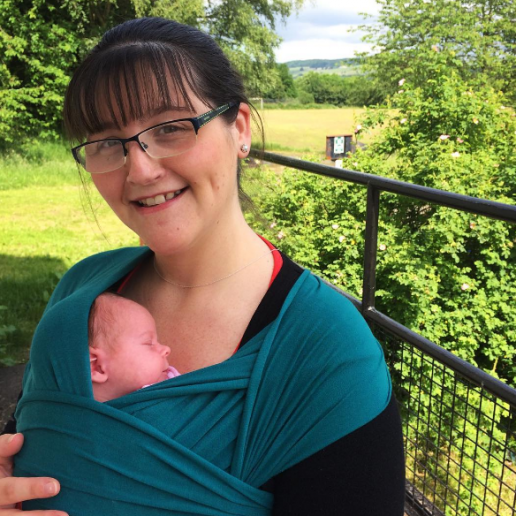
A rolled muslin forming a neck support
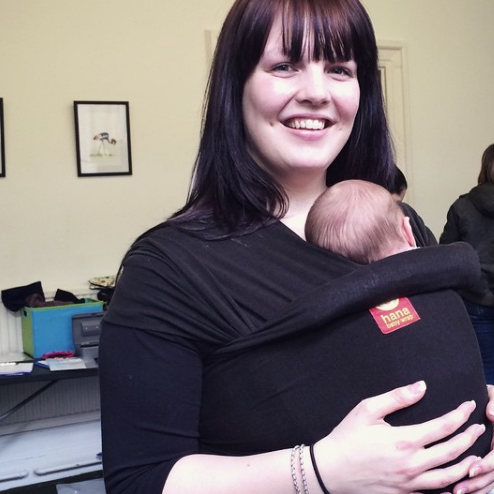
More videos (for one way stretchy wraps like the Moby) or the pocket double hammock carry for babies who prefer to be legs in can be found here on the videos page.
Carrying twins in a stretchy wrap
Many parents of twins will use a good, supportive stretchy wrap to carry their small twins, with one twin in each cross pass. It can take a little practice, do come and get some help!
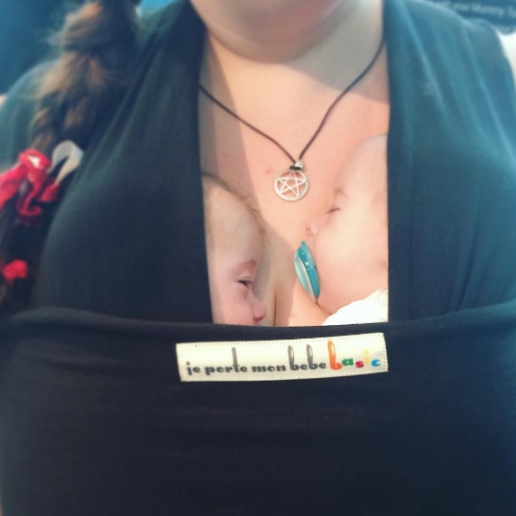
Putting twins in a stretchy wrap
There are many other ways to carry twins as they grow; get in touch with us to get some one to one help or visit our twin support group Peas in a Pod with one of our peer supporters for some simple advice and guidance.
Close Caboo Carrier
This is a semi-structured carrier made of one-way stretchy fabric that has the two cross passes sewn into position, and is tightened once baby is in by pulling any excess fabric through two rings at the side. There is less fabric than the typical stretchy, and it can seem simpler to put on at the beginning, which some people find useful. See the video for how to do it well and safely; the key is to prepare it properly, to fit your baby’s body right at the start. It is popular with those who find the tying and wrapping of a stretchy less to their liking but still wish for the cuddly wrap feel.
Common issues
- Each pass needs to be untwisted and pre-tightened into a hammock shape before putting baby in; too-loose passes at the beginning will mean that baby sinks and slumps.
- Ensure you have the cross piece on the back pulled down to the middle of your back, not resting by your neck.
- Try to get the passes the right snugness for your baby’s body before you put them in.
- Each cross pass must be tightened (or loosened) in strands across the full width of each pass to be effective and avoid slumping.
- The third part must be tied on to ensure good head and neck support.
Some people can find it harder to fold the shoulders out for good airflow and visibility, due to the fixed hem (this is easier with a good two way stretchy wrap). The preflip in the photo tutorial is an excellent solution to this!
Much of the advice and top tips for the stretchy wrap will apply to the Caboo too, see above.
Putting on a Close Carrier
Vija Kangaroo Care Tops
These special items of clothing are designed to hold a small baby close to parent’s chest inside some clever built-in pouches. They are very simple to use, and even come in twin form! More information here
Kangaroo Care shirt
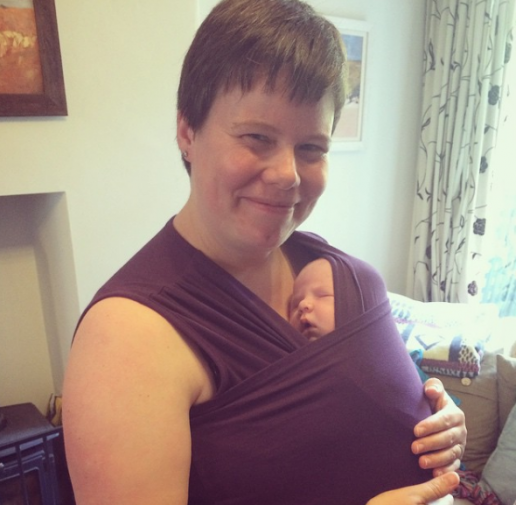
If you need some more support, your local sling educator can be found listed on the Sling Pages.

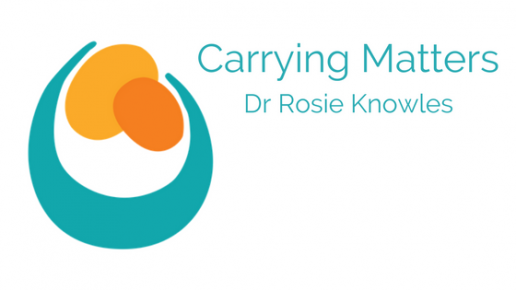
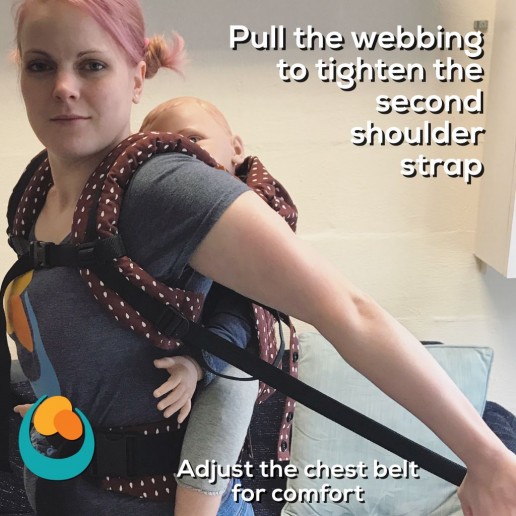
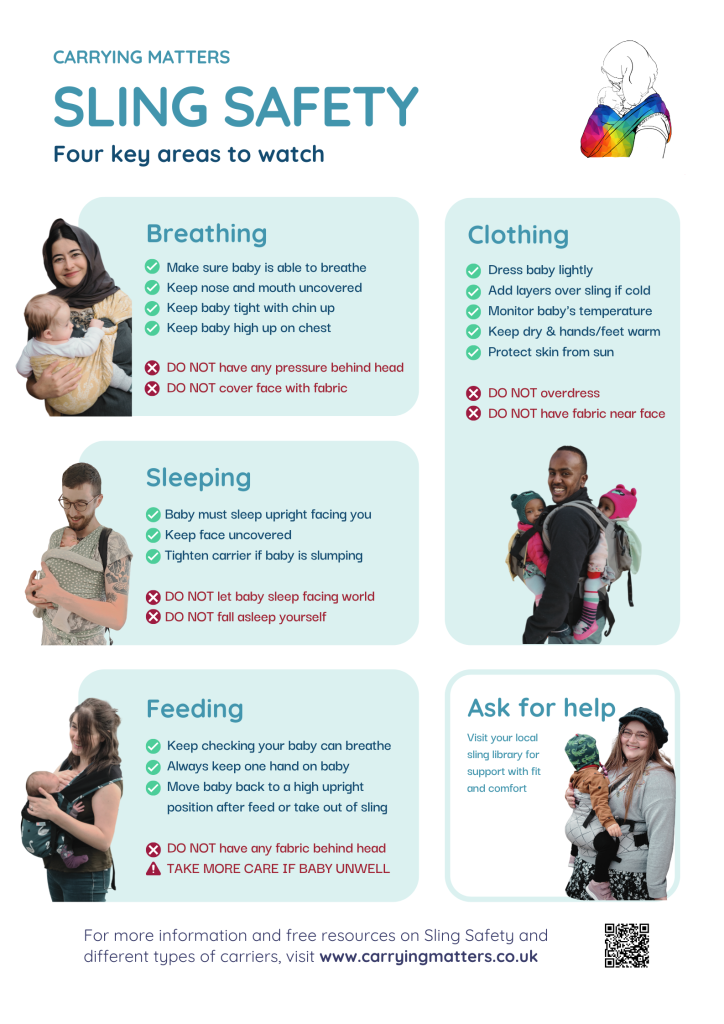
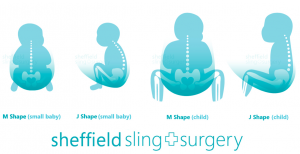
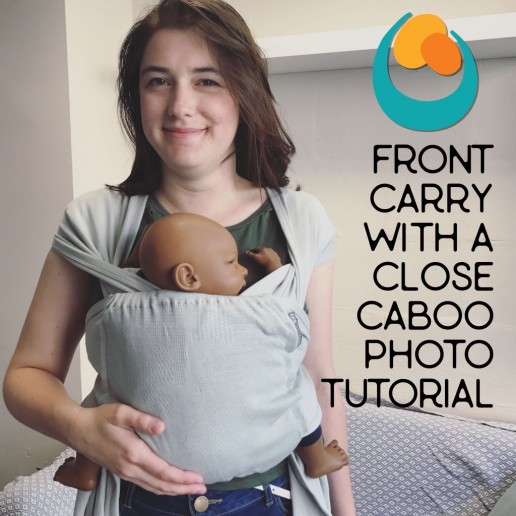
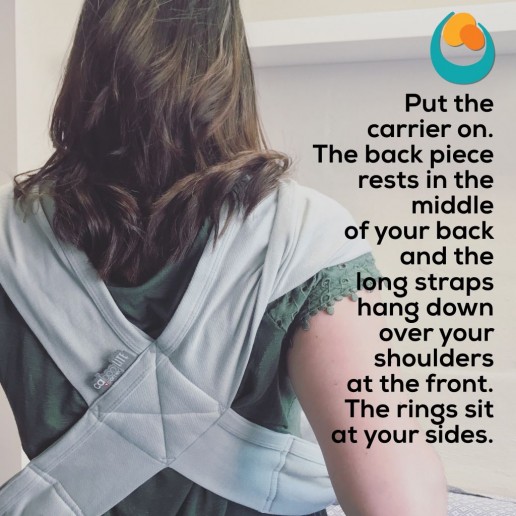
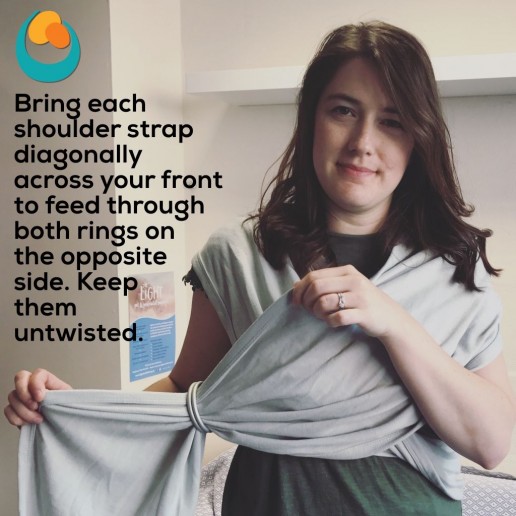
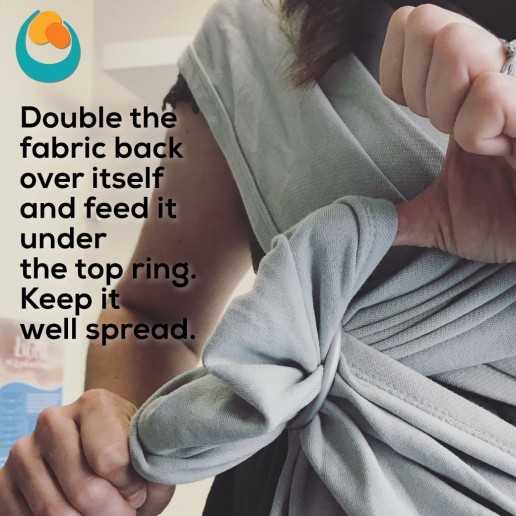
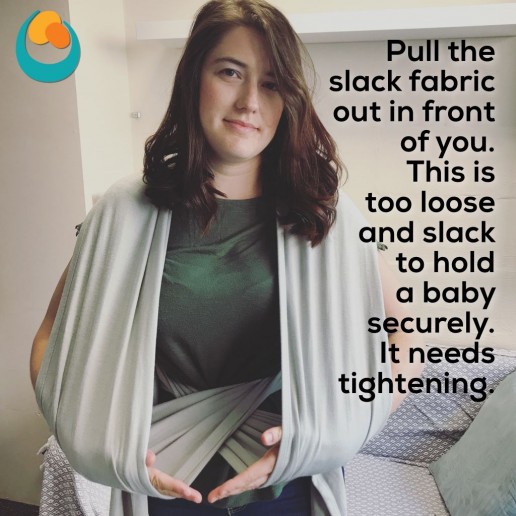
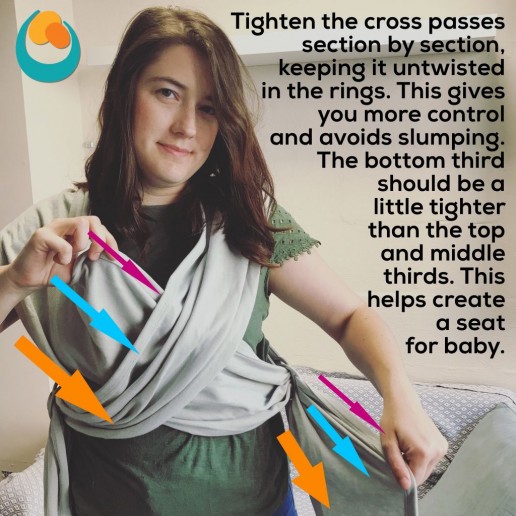
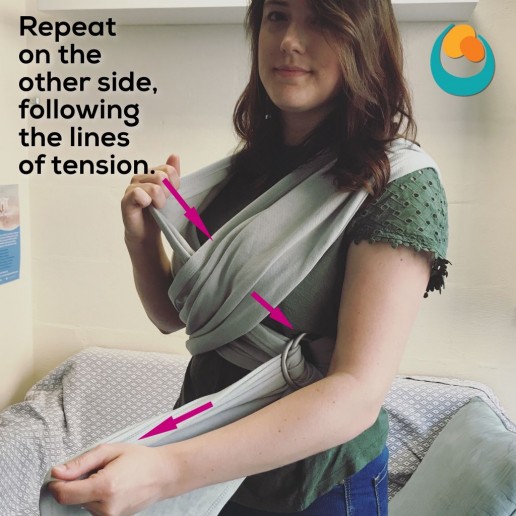
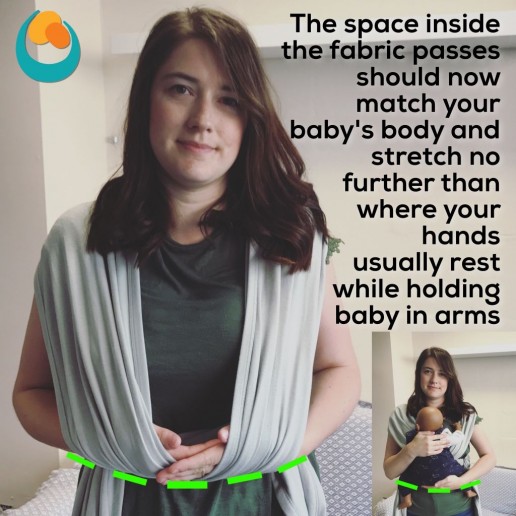
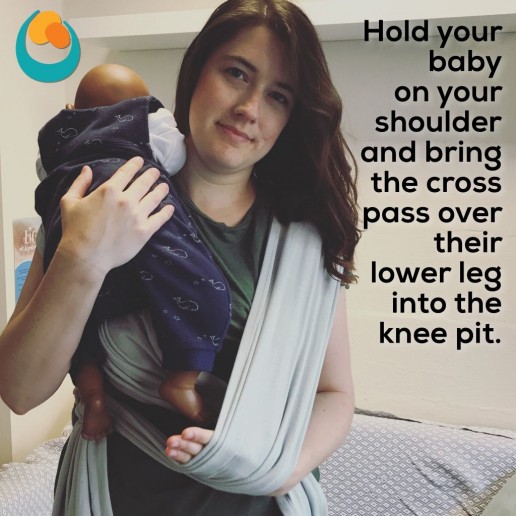
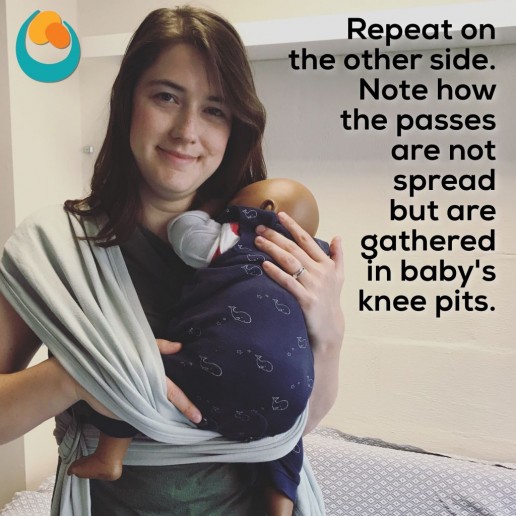
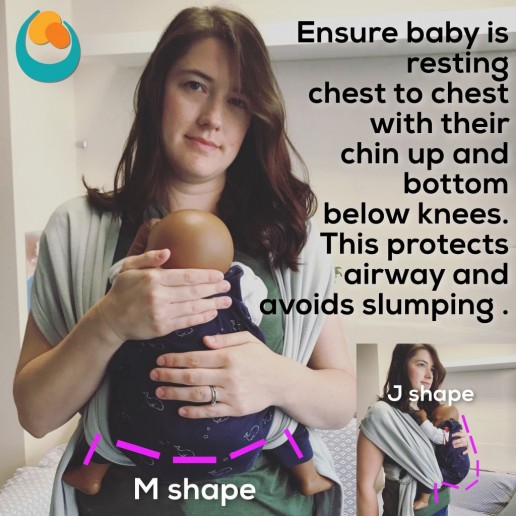
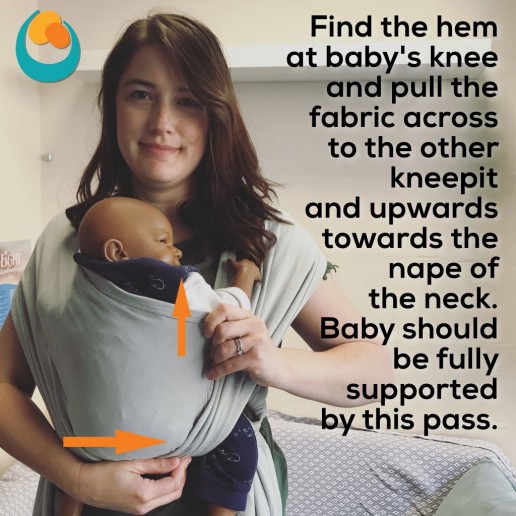
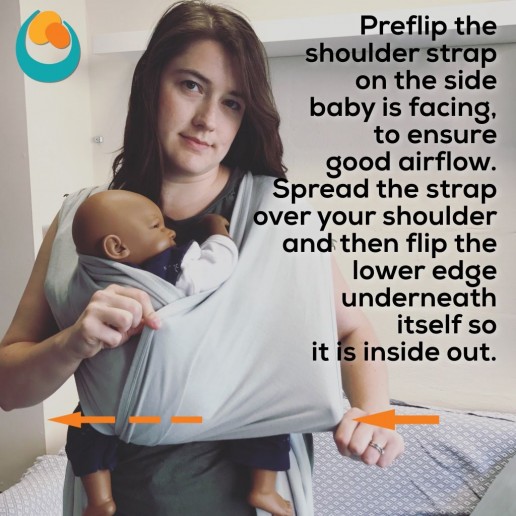
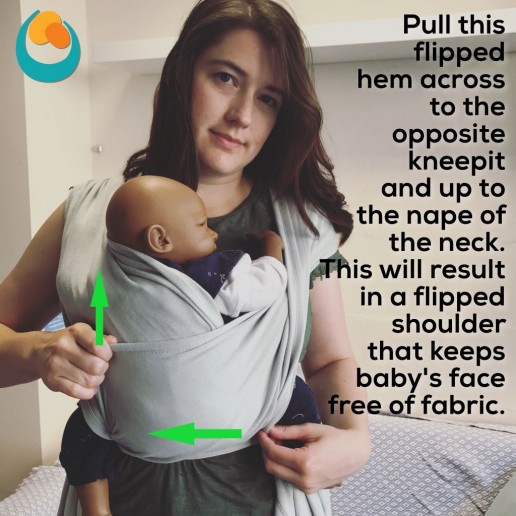
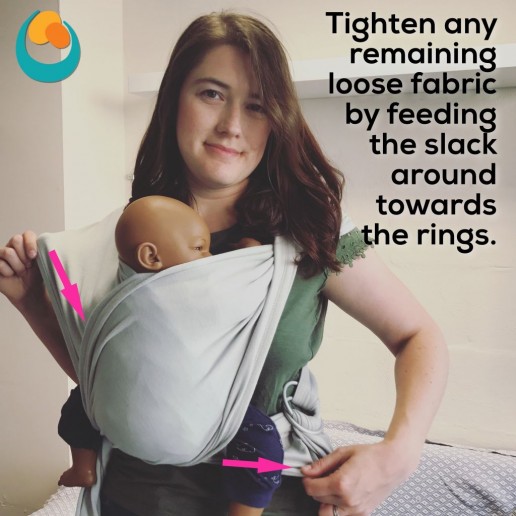
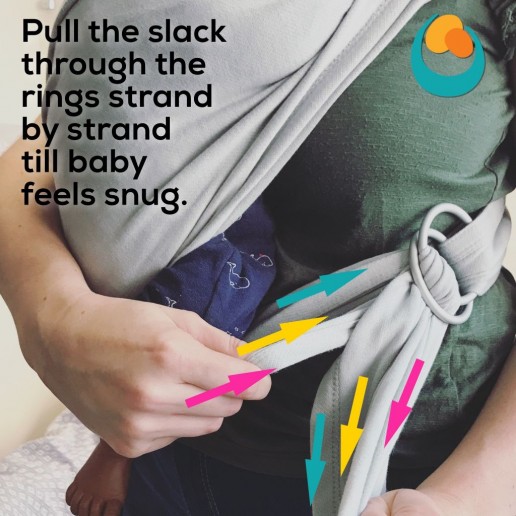
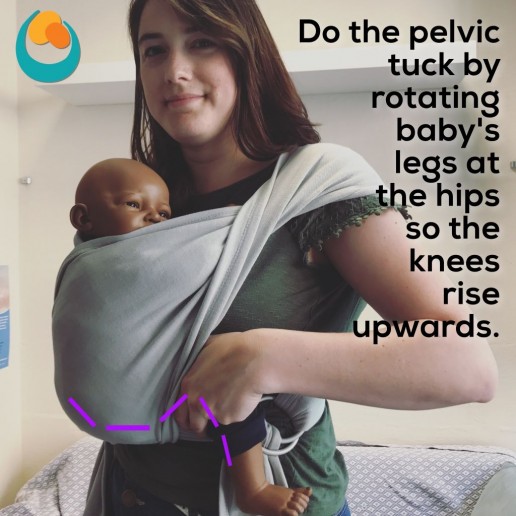
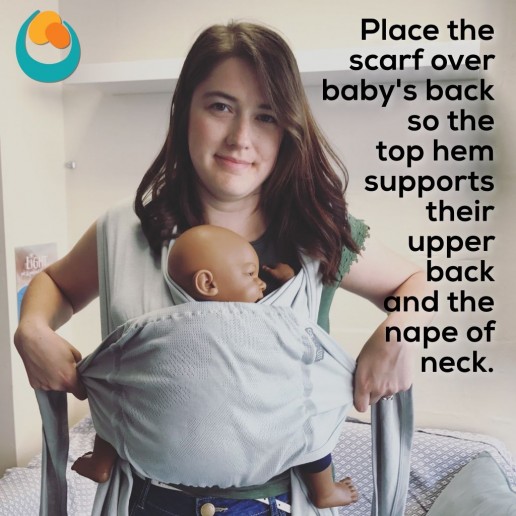
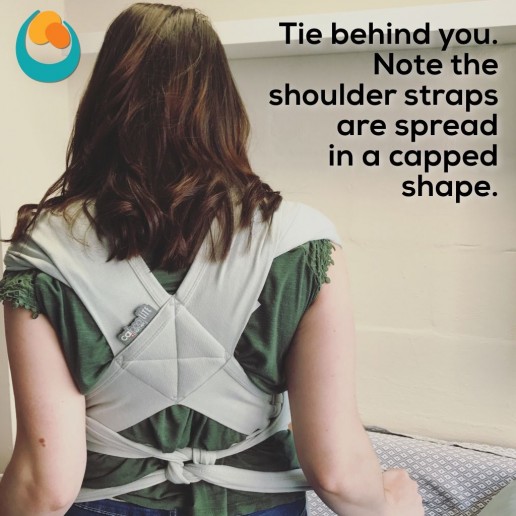
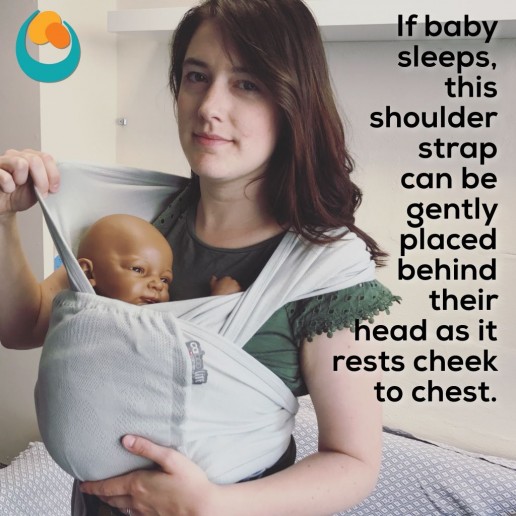
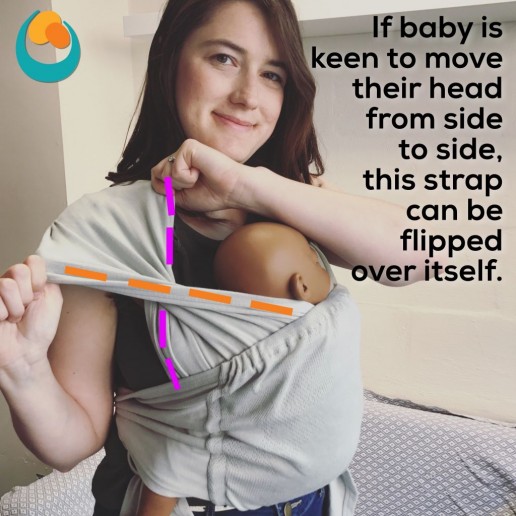

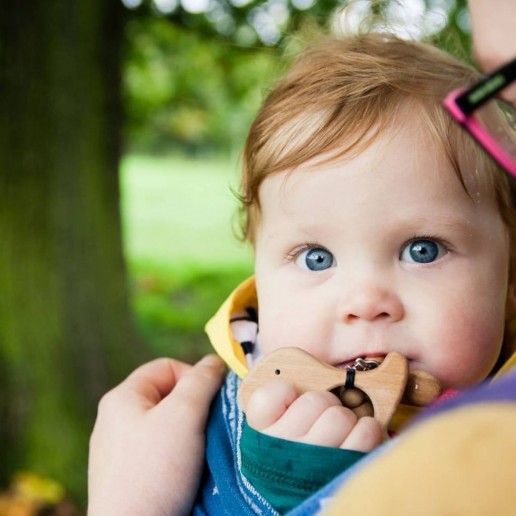
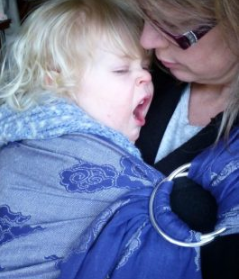
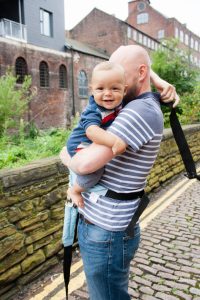 Get confident with a demo doll first. Sling libraries and sling consultants are usually well stocked with weighted demo dolls which will allow you to figure out how to use the sling safely (remember the
Get confident with a demo doll first. Sling libraries and sling consultants are usually well stocked with weighted demo dolls which will allow you to figure out how to use the sling safely (remember the 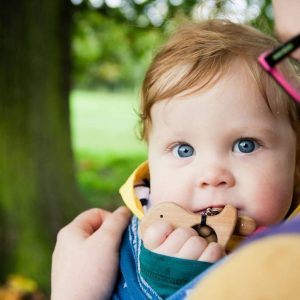
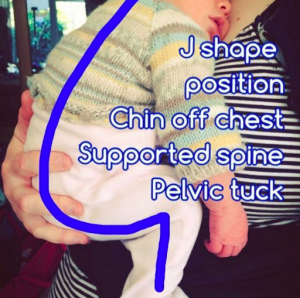
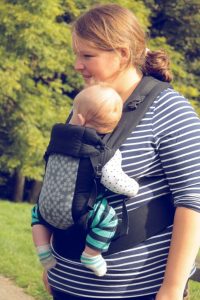 Remember that your baby still wants to experience the world even while carried, as they do when playing on your lap or on the floor. Help them to be able to see a little, in a way that is appropriate for their age and still respectful of growing spines and hips. A carrier that has straps or fabric that comes close to the face may be irritating (do remember that babies grow taller, and many carriers can be adjusted to ensure faces and heads not obscured). Make sure that there is some activity going on - we all know about the sway we do to settle babies when carried in arms, and how often we shift them around, or the rocking/pushing of the pram - this gives a child some sensory input, rather than remaining still. I often encourage parents to go for a short walk round the block when they have just put a sling on with their baby - the motion and movement to get out of the house and the fresh air and change of scenery usually works wonders and parents come back with happier babies. Of course, once the parent is standing still again, and baby is bored with the reduced activity, he will protest!
Remember that your baby still wants to experience the world even while carried, as they do when playing on your lap or on the floor. Help them to be able to see a little, in a way that is appropriate for their age and still respectful of growing spines and hips. A carrier that has straps or fabric that comes close to the face may be irritating (do remember that babies grow taller, and many carriers can be adjusted to ensure faces and heads not obscured). Make sure that there is some activity going on - we all know about the sway we do to settle babies when carried in arms, and how often we shift them around, or the rocking/pushing of the pram - this gives a child some sensory input, rather than remaining still. I often encourage parents to go for a short walk round the block when they have just put a sling on with their baby - the motion and movement to get out of the house and the fresh air and change of scenery usually works wonders and parents come back with happier babies. Of course, once the parent is standing still again, and baby is bored with the reduced activity, he will protest!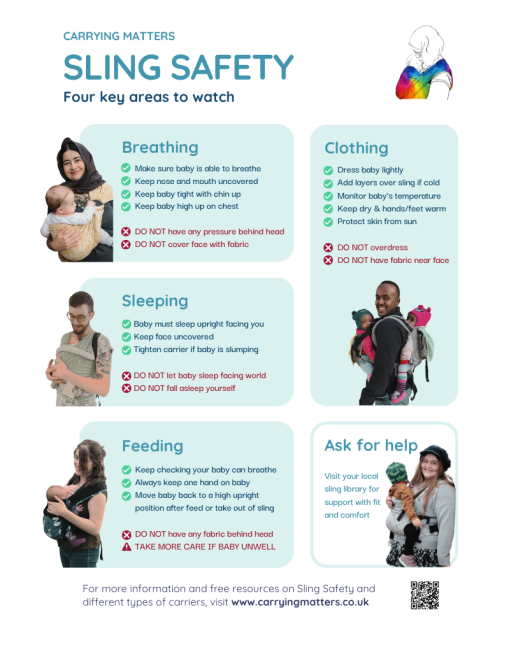
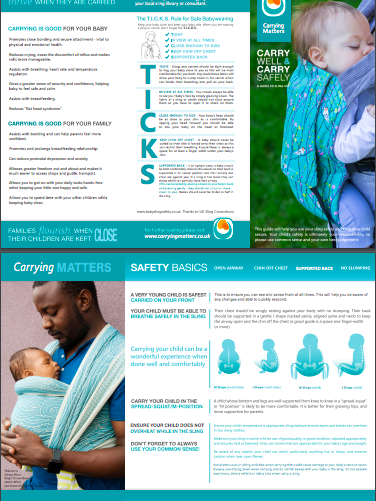
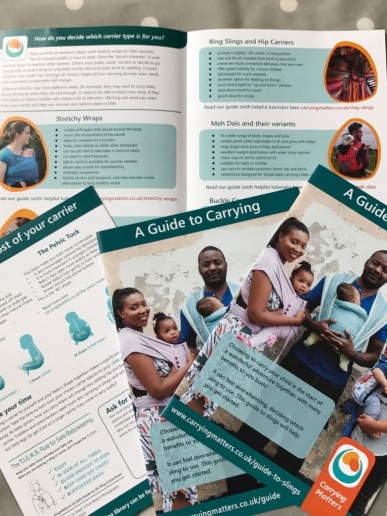
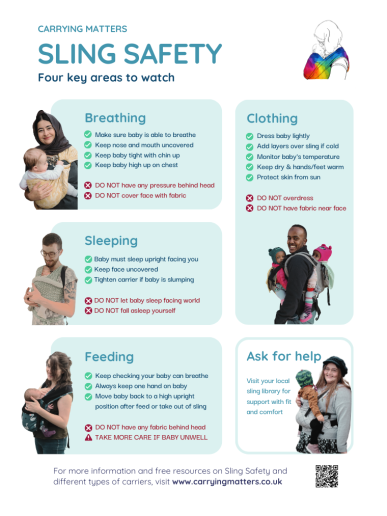
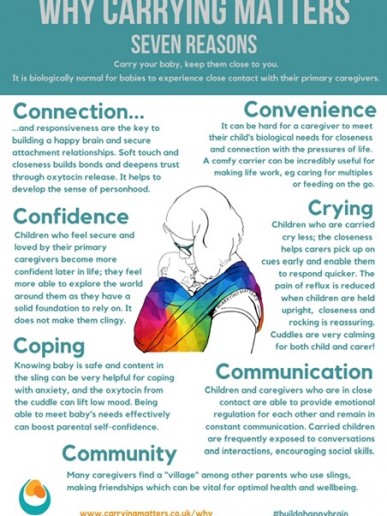
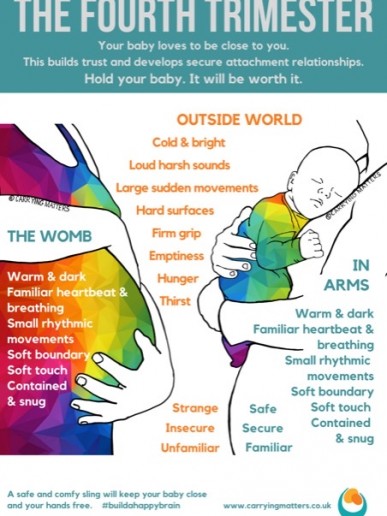
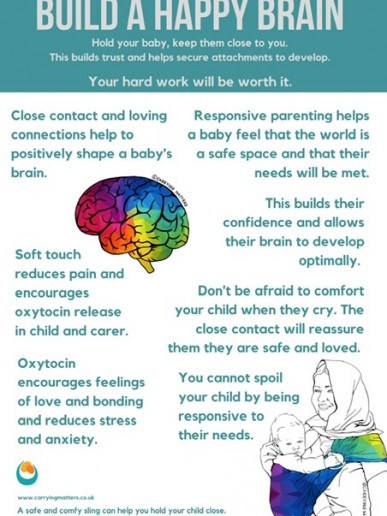
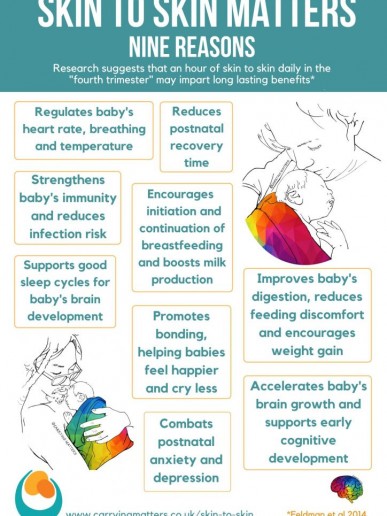
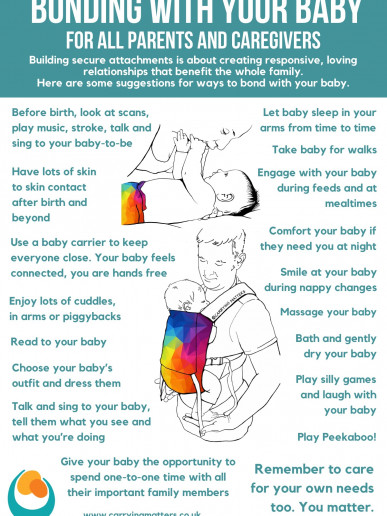
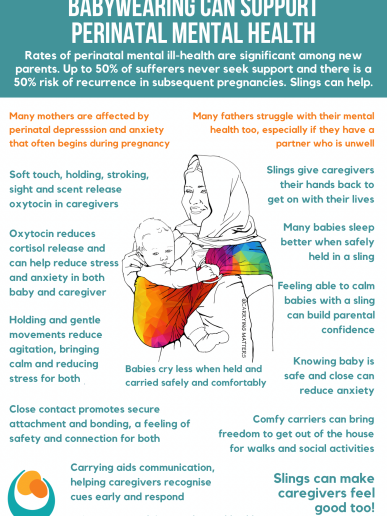
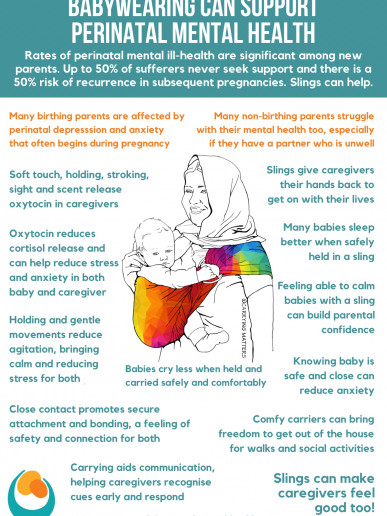
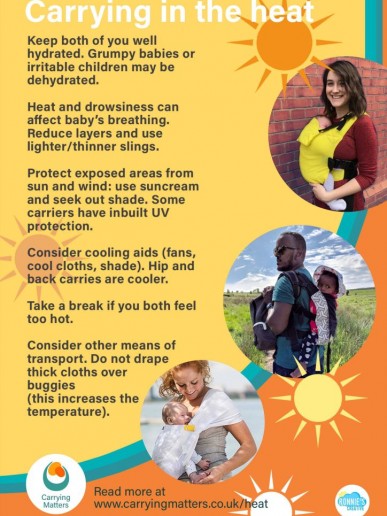
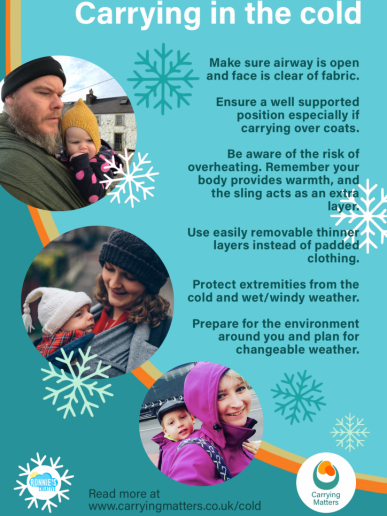
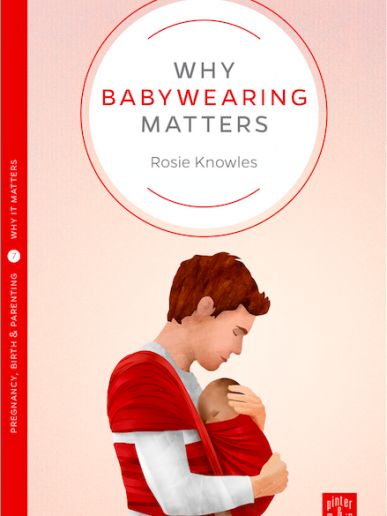
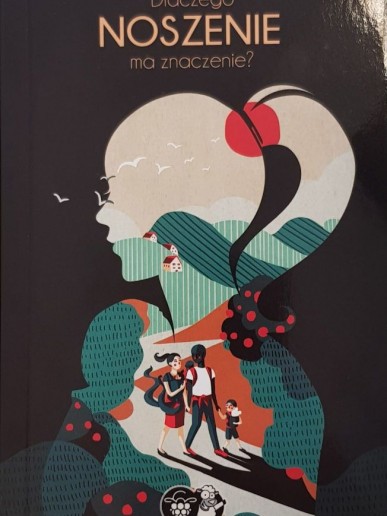
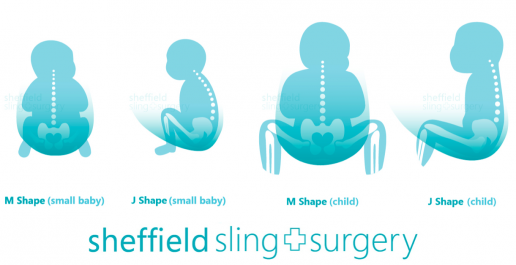
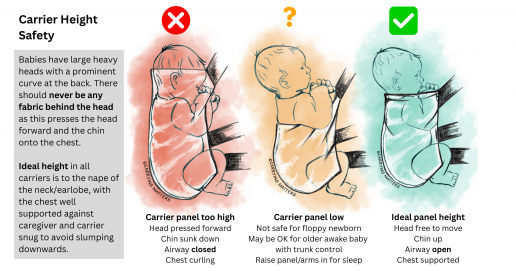
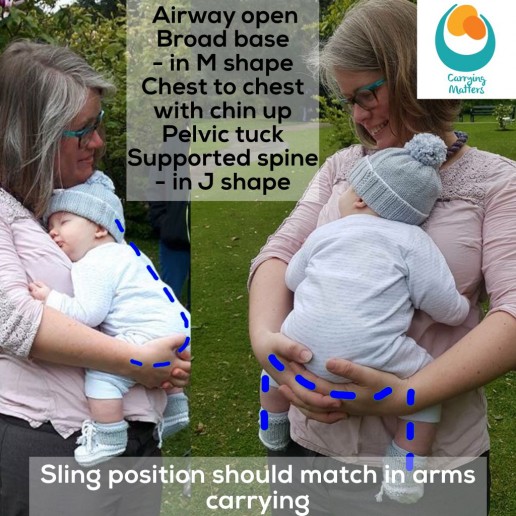
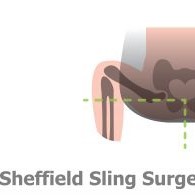
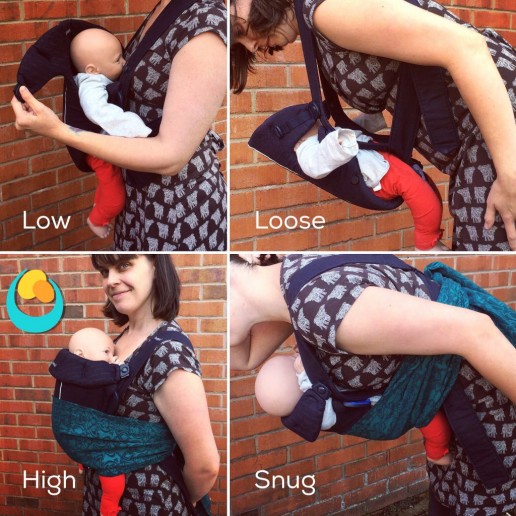
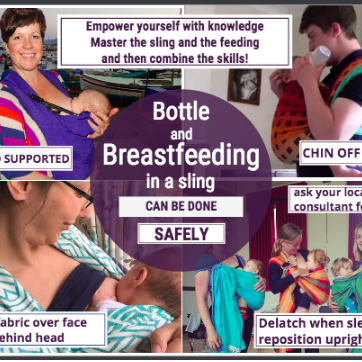
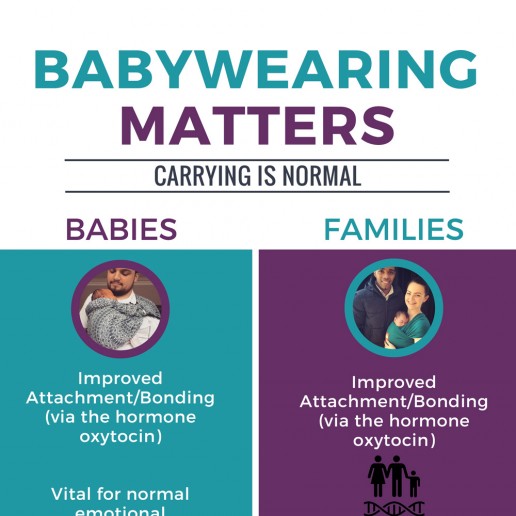
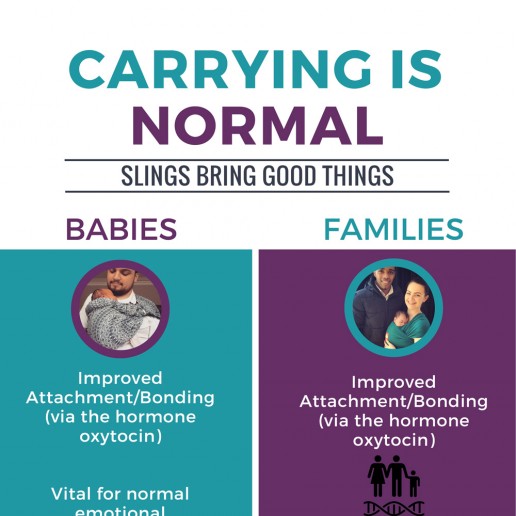
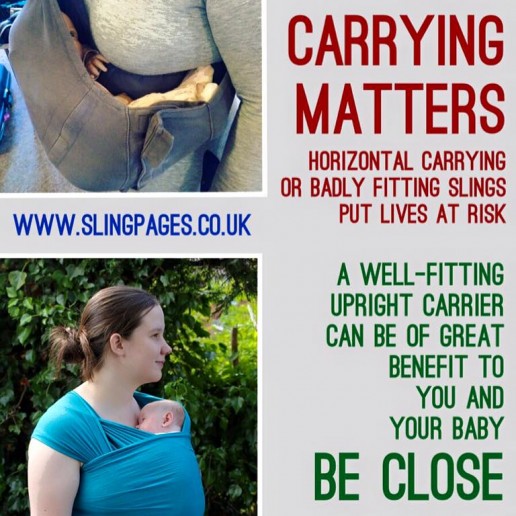
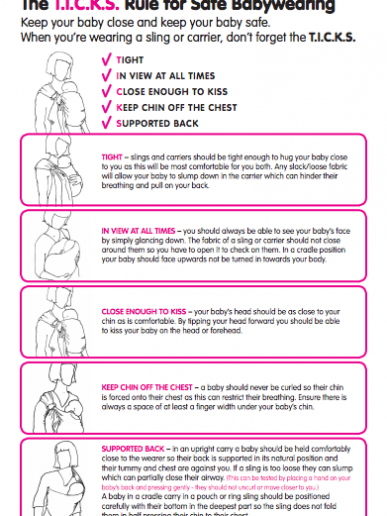
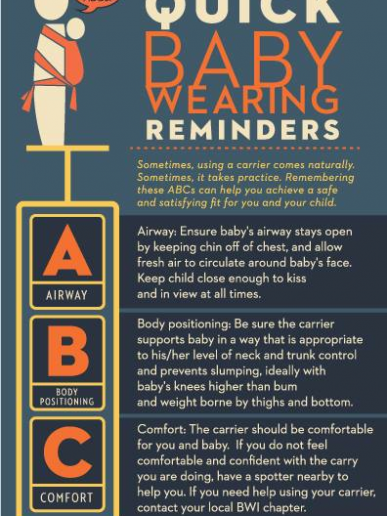
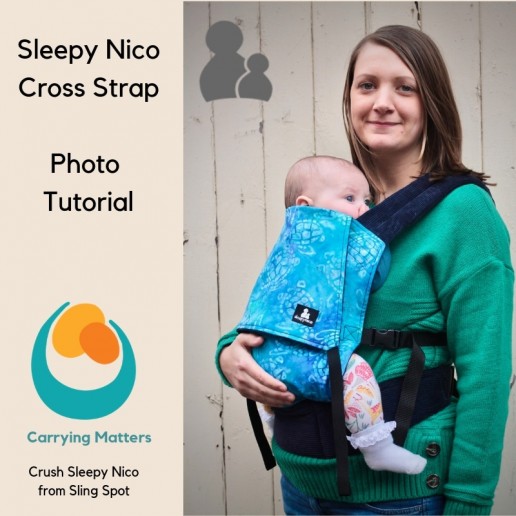
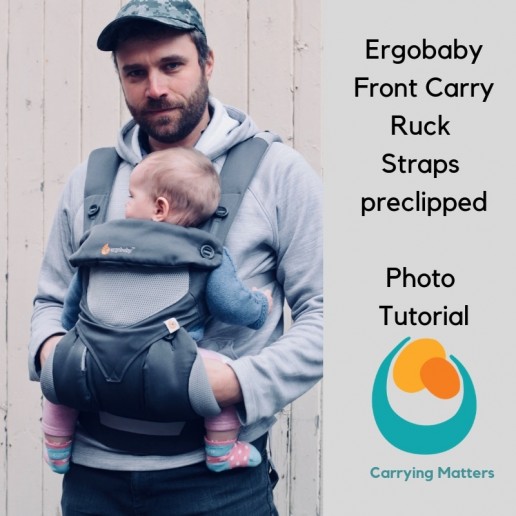
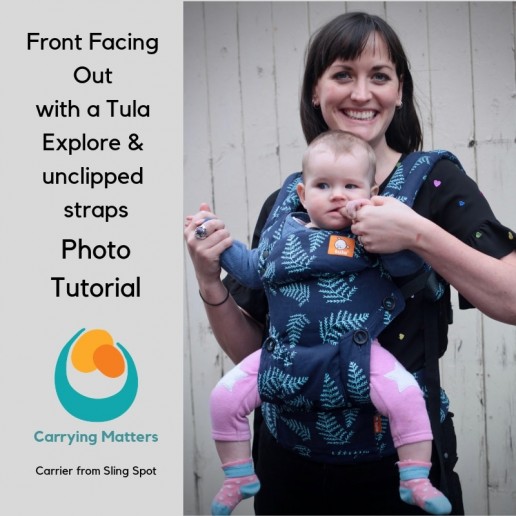
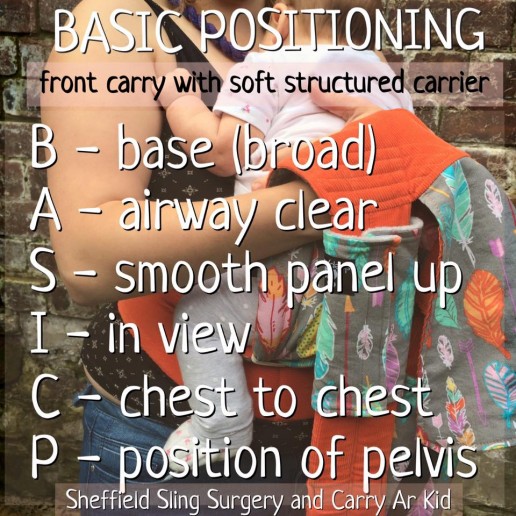
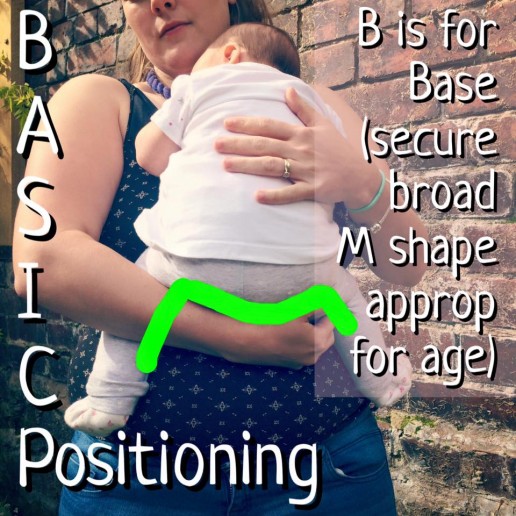
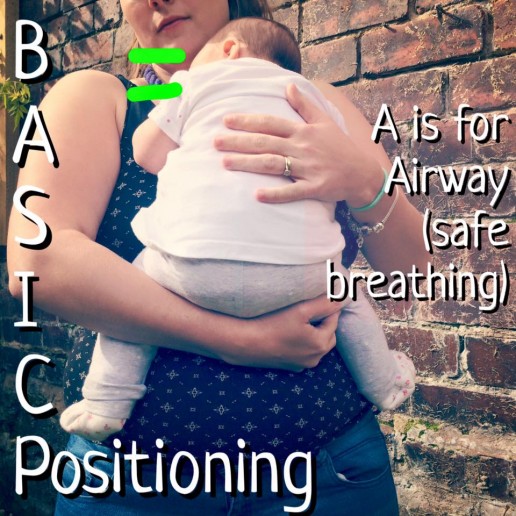
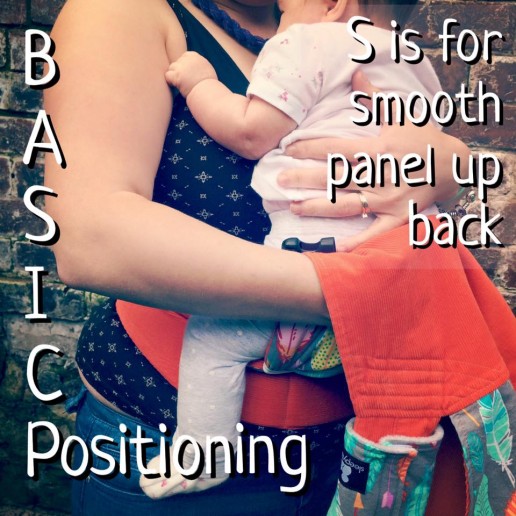
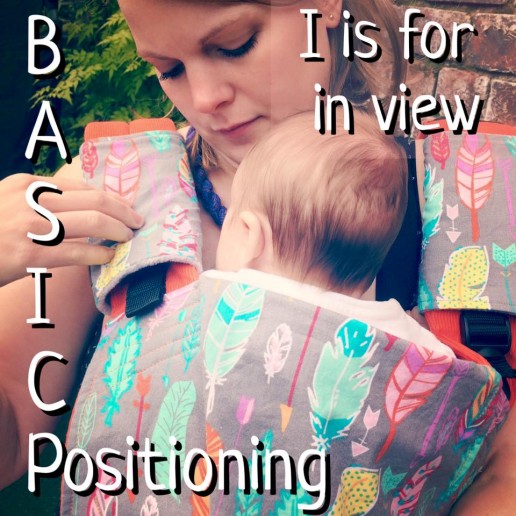
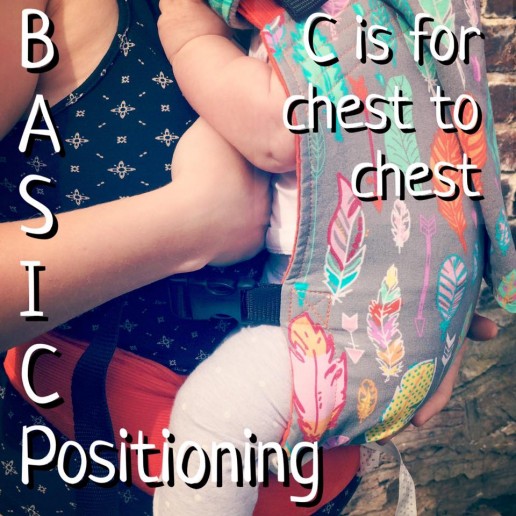
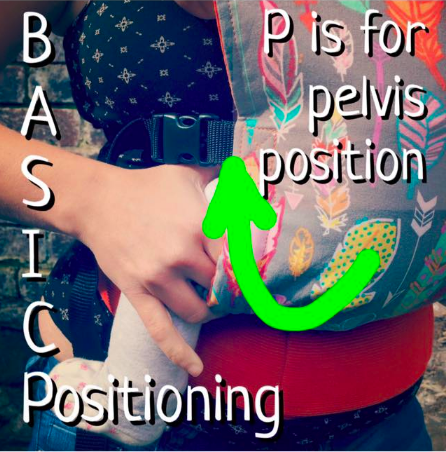
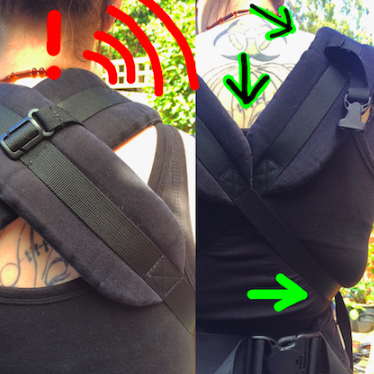
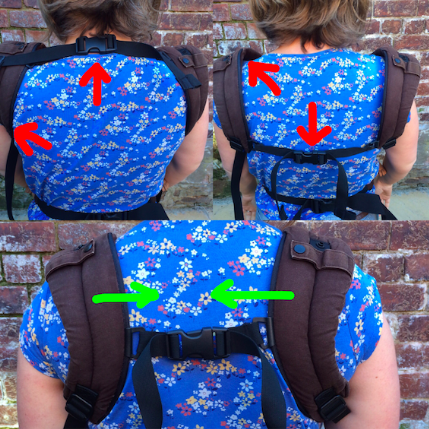
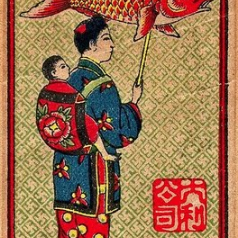
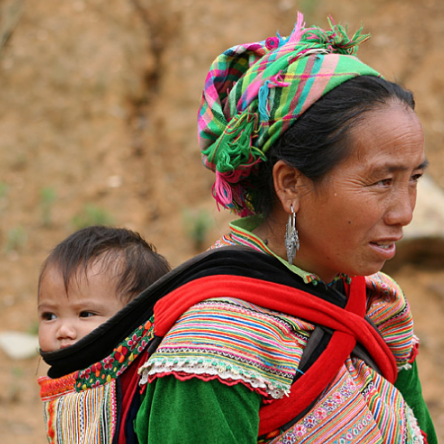
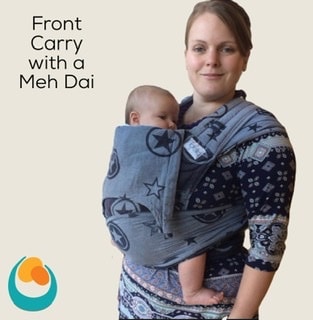
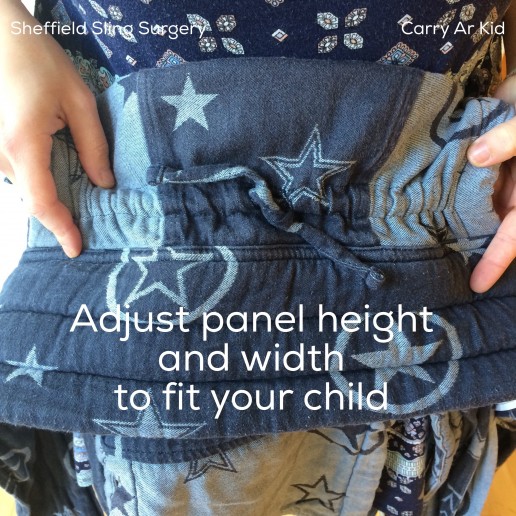
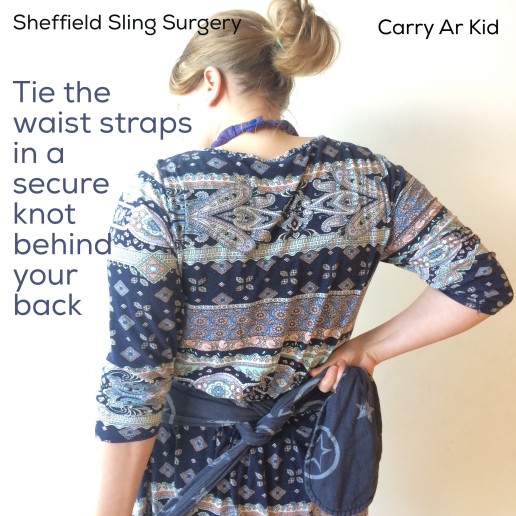
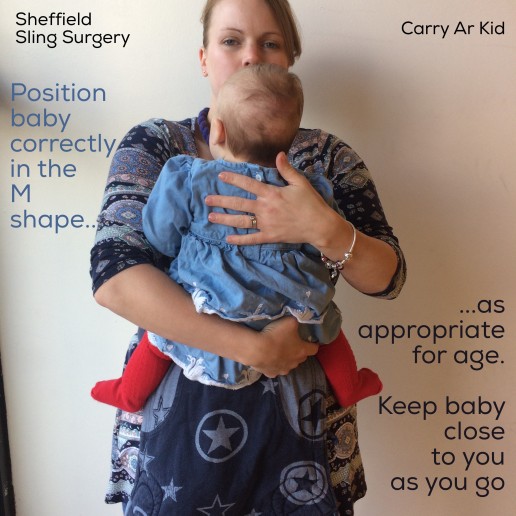
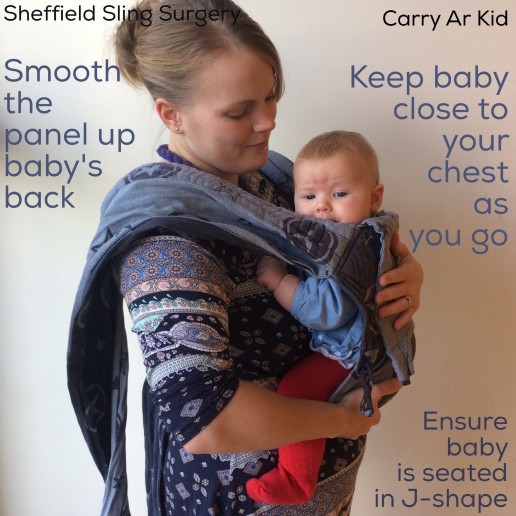
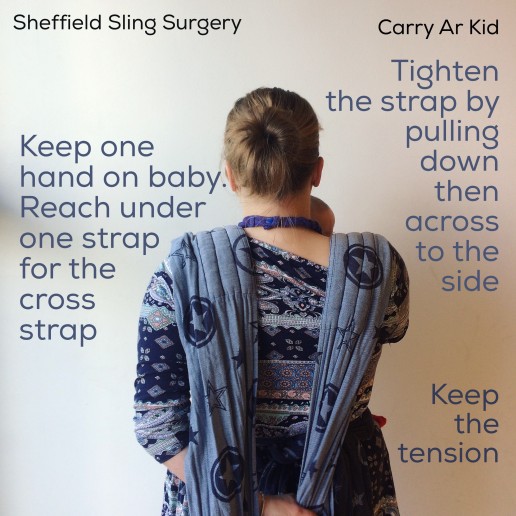
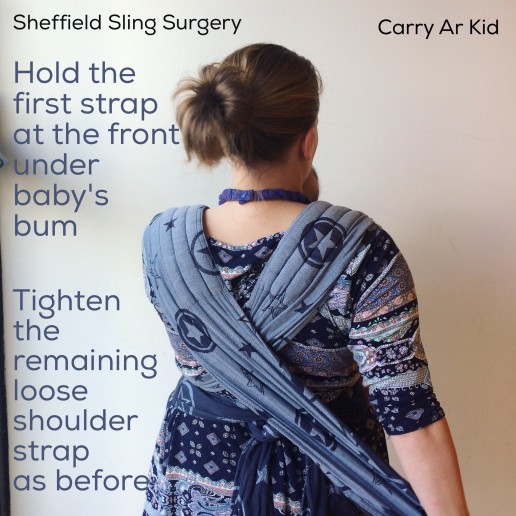
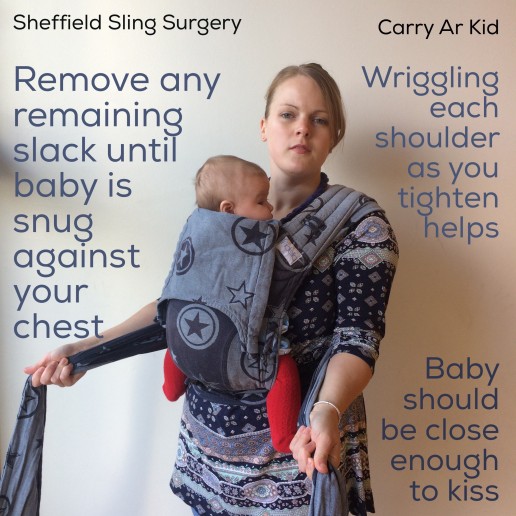
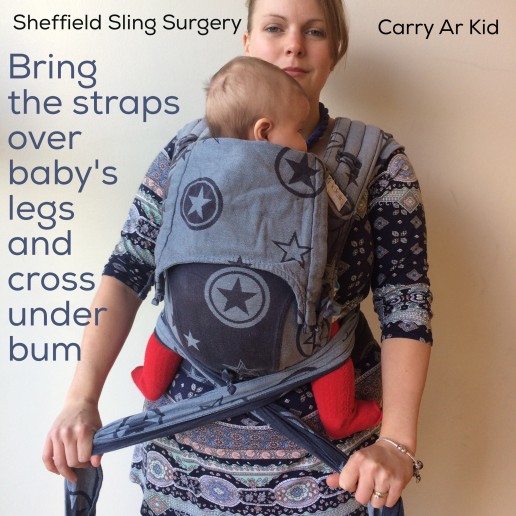
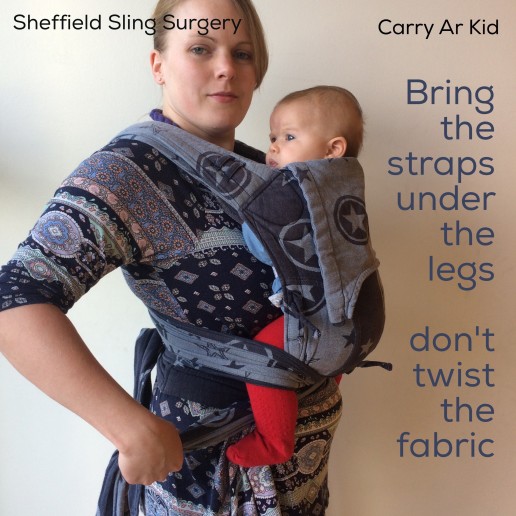
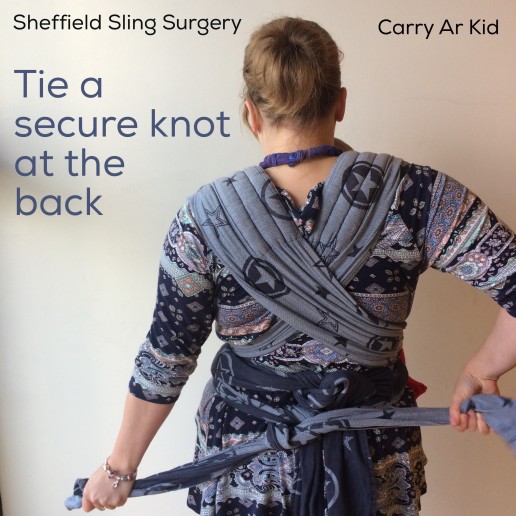
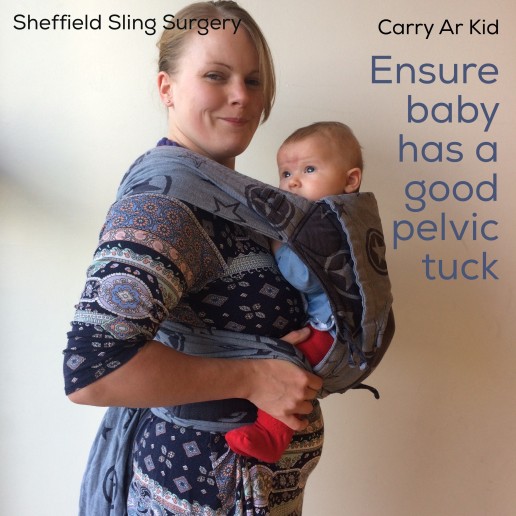
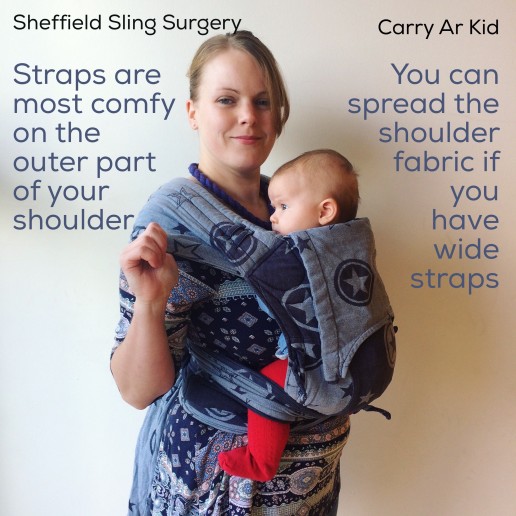
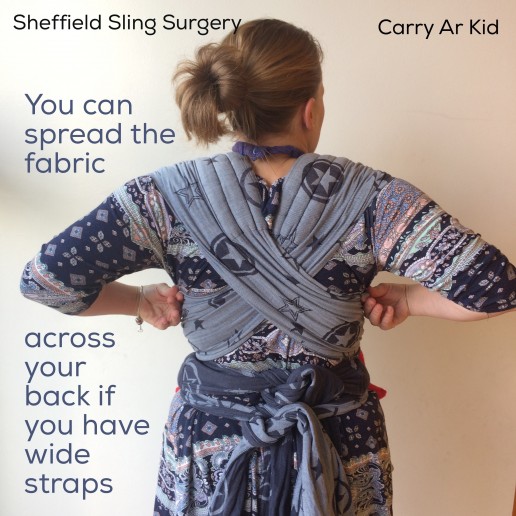
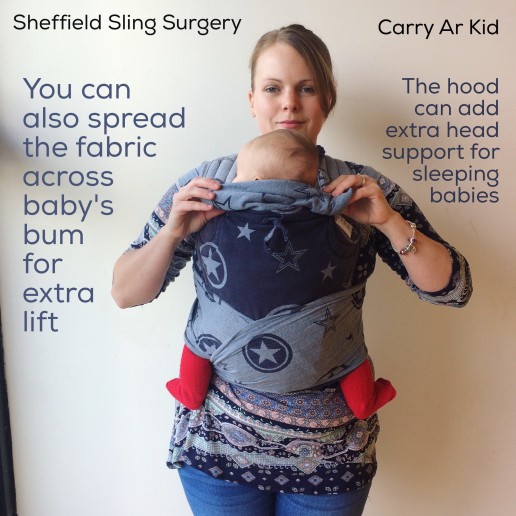
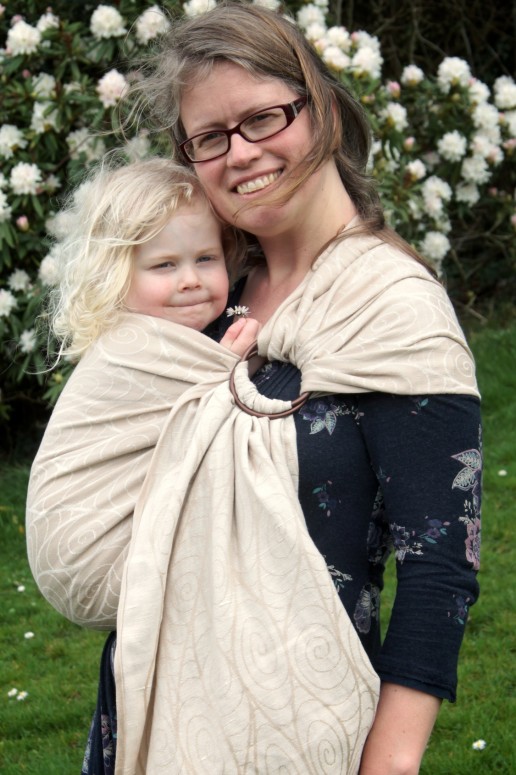
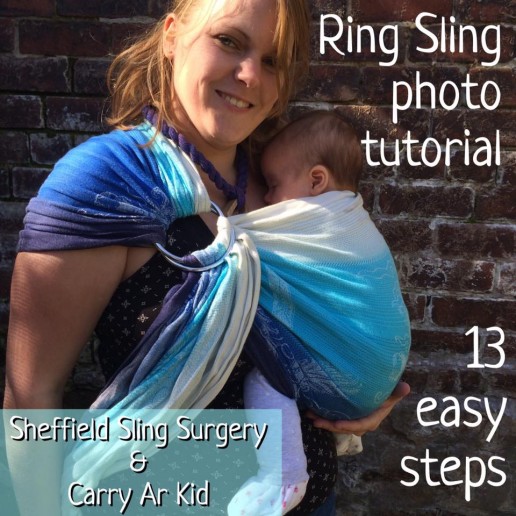
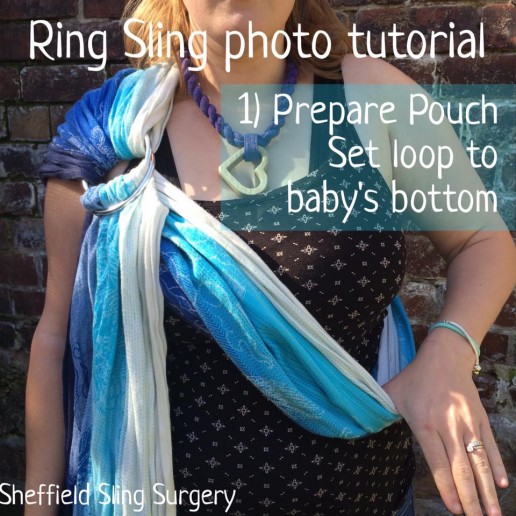
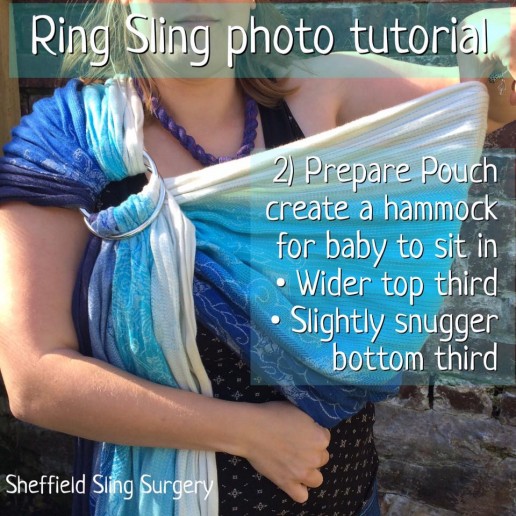
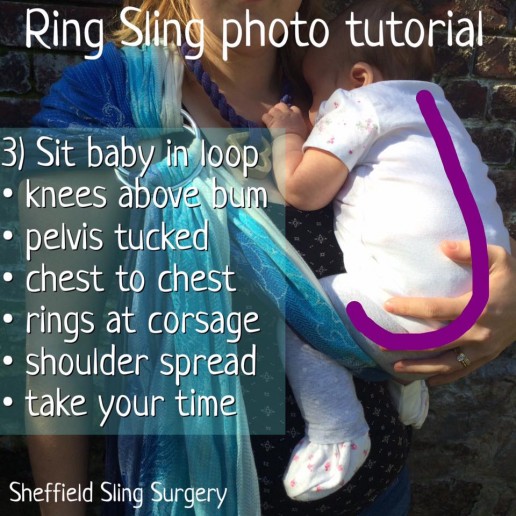
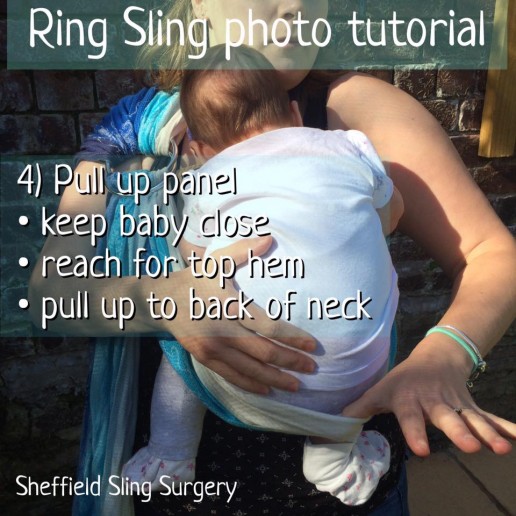
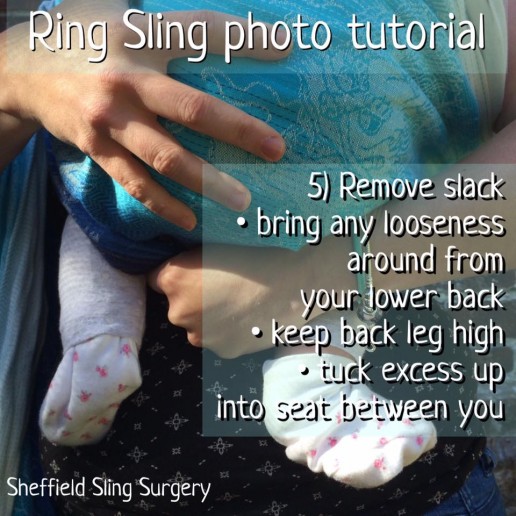
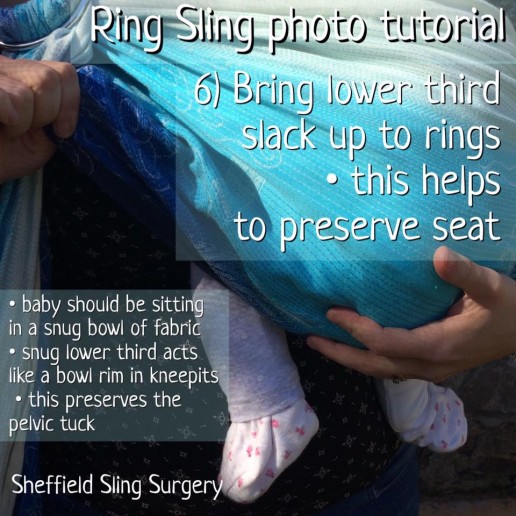
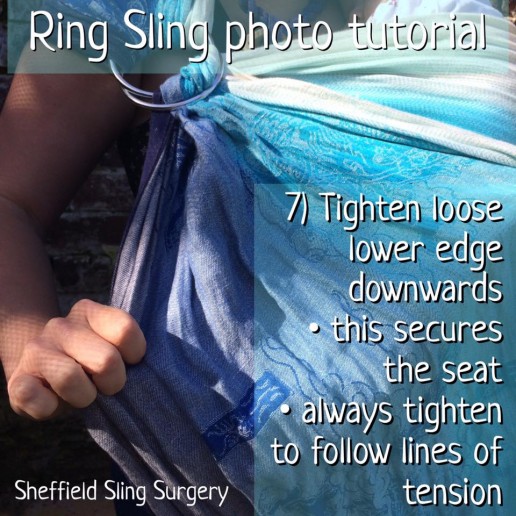
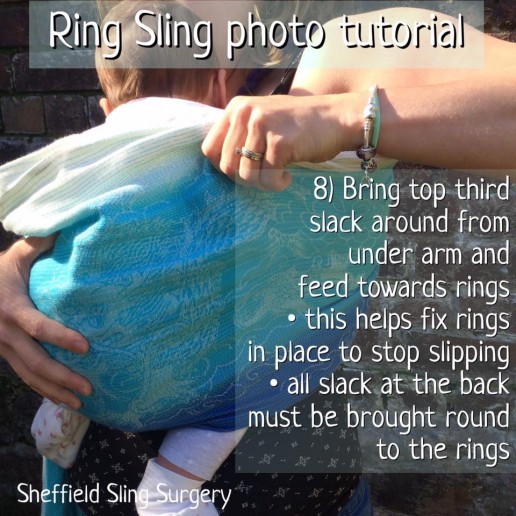
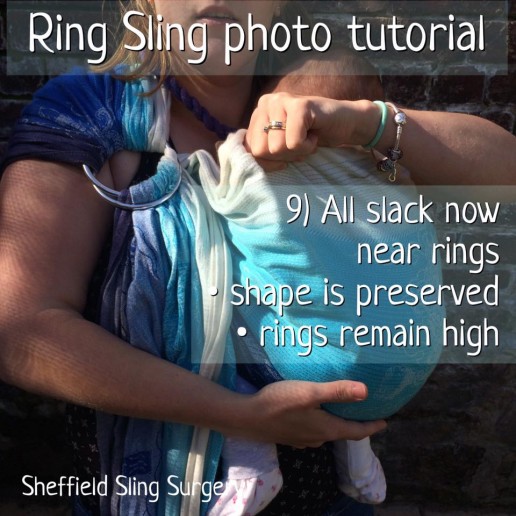
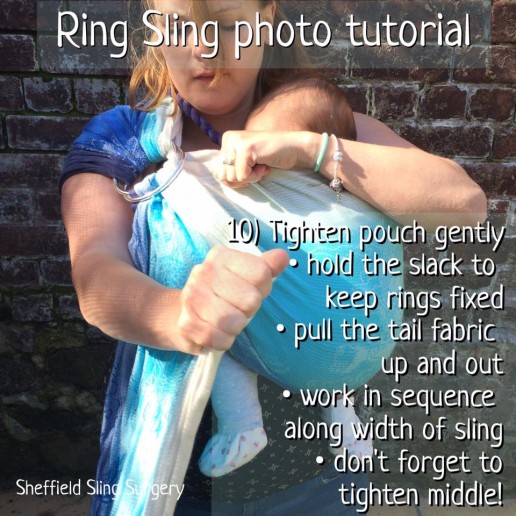
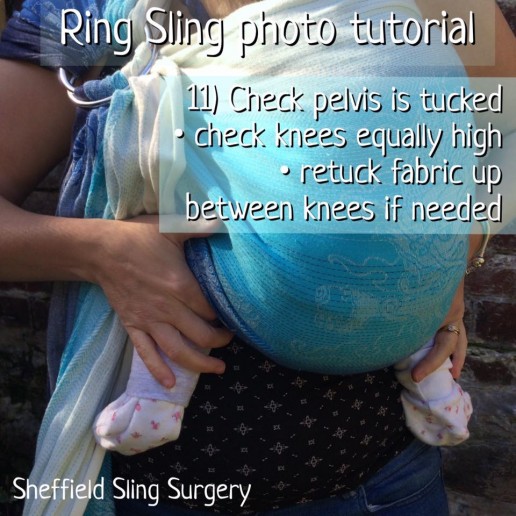
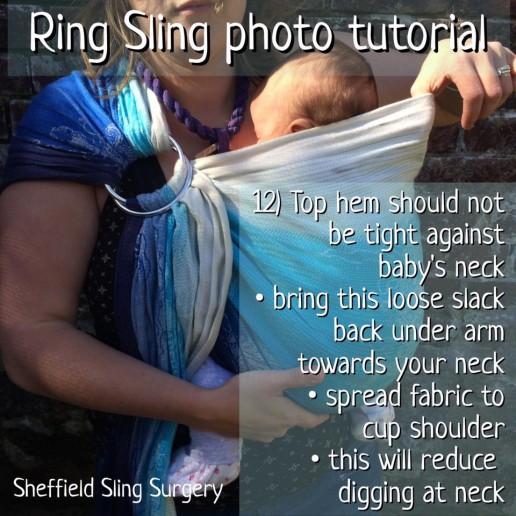
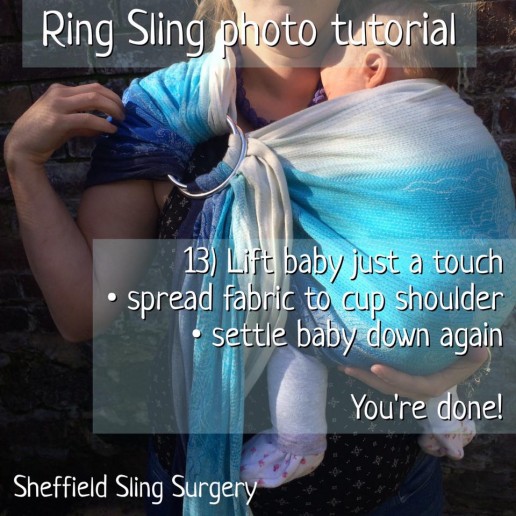
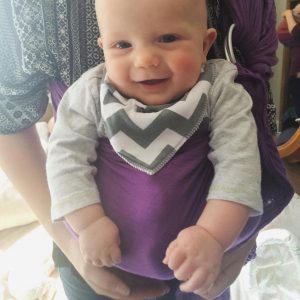 Can I face my child forwards in a ring sling?
Can I face my child forwards in a ring sling?